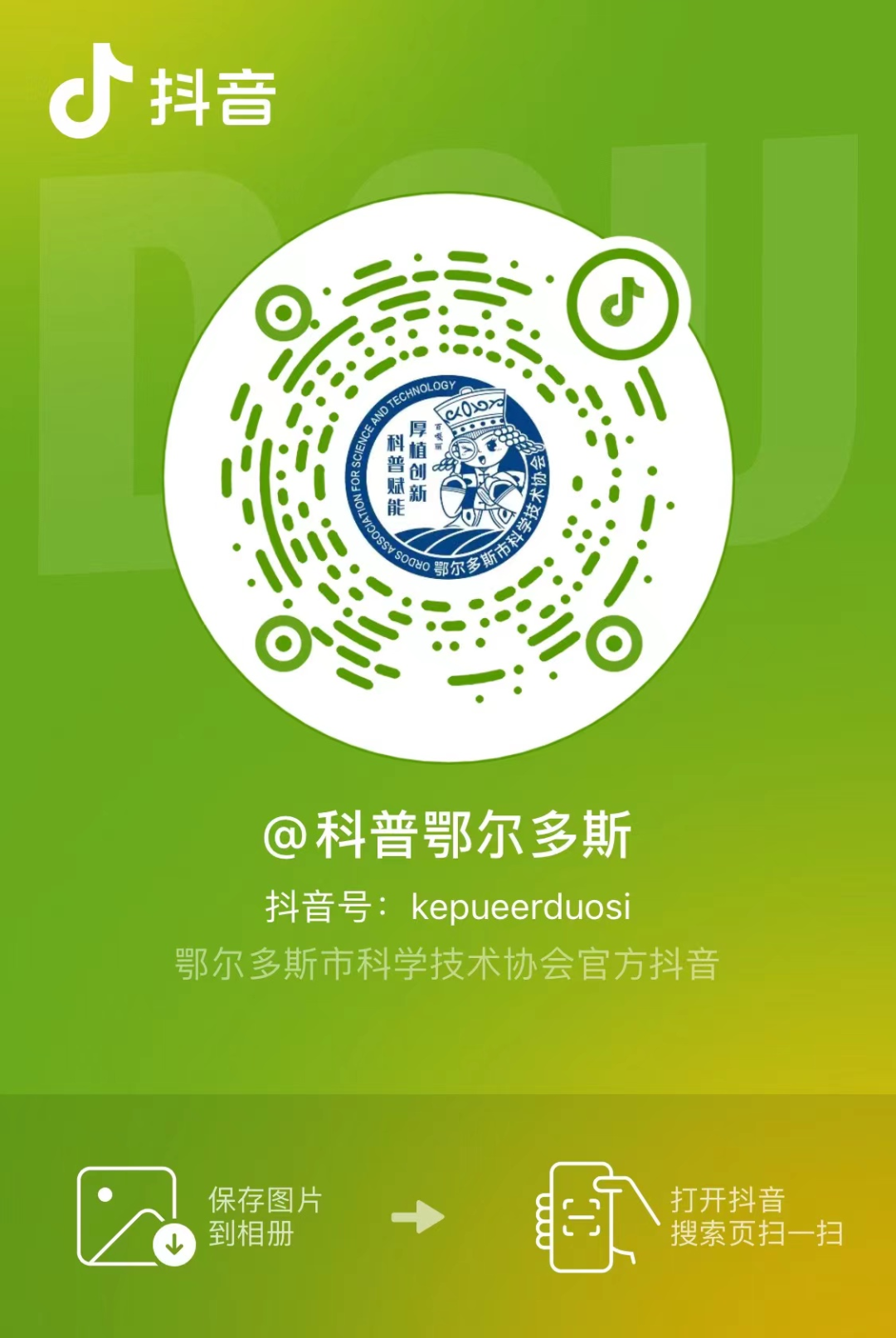
 According to the “China Computing Power Industry Development White Paper”, the scale of China’s computing power industry will exceed 30 trillion yuan in 2023, with an average annual growth rate of over 30%! With the rapid development of the industry, the issue of carbon reduction urgently needs to be addressed.The “Action Plan for the High-Quality Development of Computing Power Infrastructure” issued by six departments including the State Council clearly states the need to develop research on green and low-carbon technologies, conduct evaluations of green and low-carbon computing power parks, and publish annual reports on the green and low-carbon development of computing power facilities.What is green computing, what are the key technologies, and what are the future development trends of green computing centers? Today’s article will provide detailed answers to these questions.
According to the “China Computing Power Industry Development White Paper”, the scale of China’s computing power industry will exceed 30 trillion yuan in 2023, with an average annual growth rate of over 30%! With the rapid development of the industry, the issue of carbon reduction urgently needs to be addressed.The “Action Plan for the High-Quality Development of Computing Power Infrastructure” issued by six departments including the State Council clearly states the need to develop research on green and low-carbon technologies, conduct evaluations of green and low-carbon computing power parks, and publish annual reports on the green and low-carbon development of computing power facilities.What is green computing, what are the key technologies, and what are the future development trends of green computing centers? Today’s article will provide detailed answers to these questions.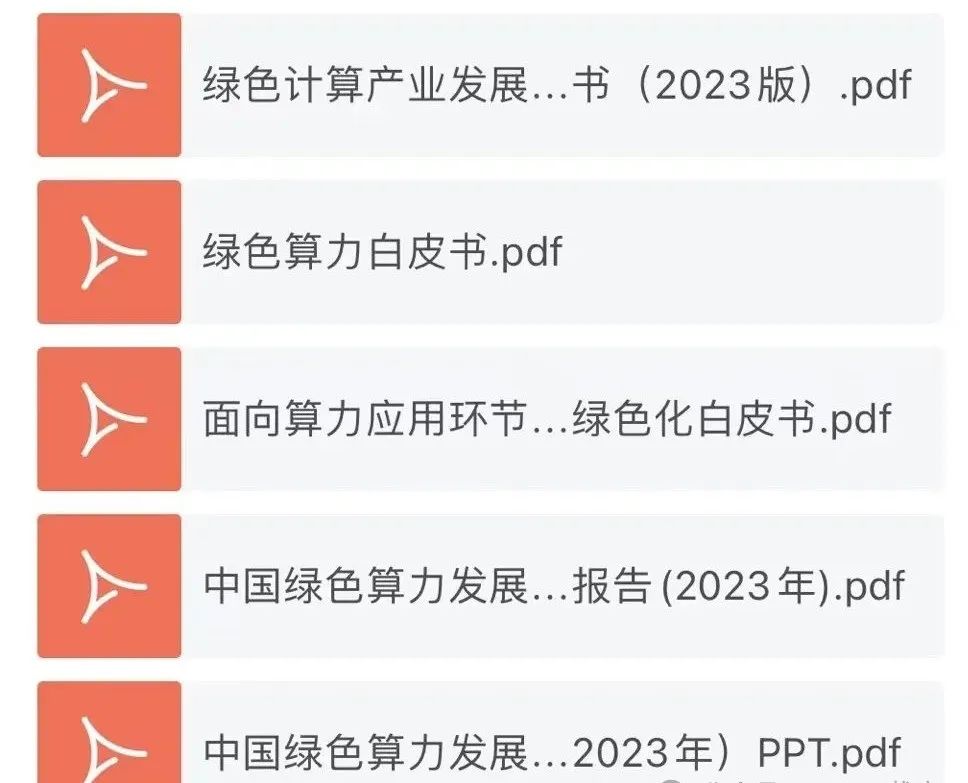

丨Scan the QR code above and click the corresponding PDF file
丨Join the Planet Membership to download, which containsa wealth of materials
01
Green Computing Essentials
I have compiled five documents related to green computing, and I strongly recommend everyone to download and read them.1. Green Computing White PaperThe white paper analyzes the policy support, energy-saving advantages, technology applications, and development trends of energy-efficient servers. It points out that the energy consumption of computing centers mainly comes from four aspects:IT Equipment: The power consumption generated by the IT equipment system, composed of servers, storage, and network communication devices, accounts for about 45% of the total power consumption of the computing center.Air Conditioning System: The power consumption generated accounts for about 40% of the total power consumption of the computing center.Power Supply System: The UPS input power supply system, composed of input transformers and ATS switches, accounts for about 10% of the total power consumption. Among them, about 7% comes from the UPS power supply system, and about 3% comes from the UPS input power supply system.Lighting System: The lighting system accounts for about 3% of the total power consumption of the computing center.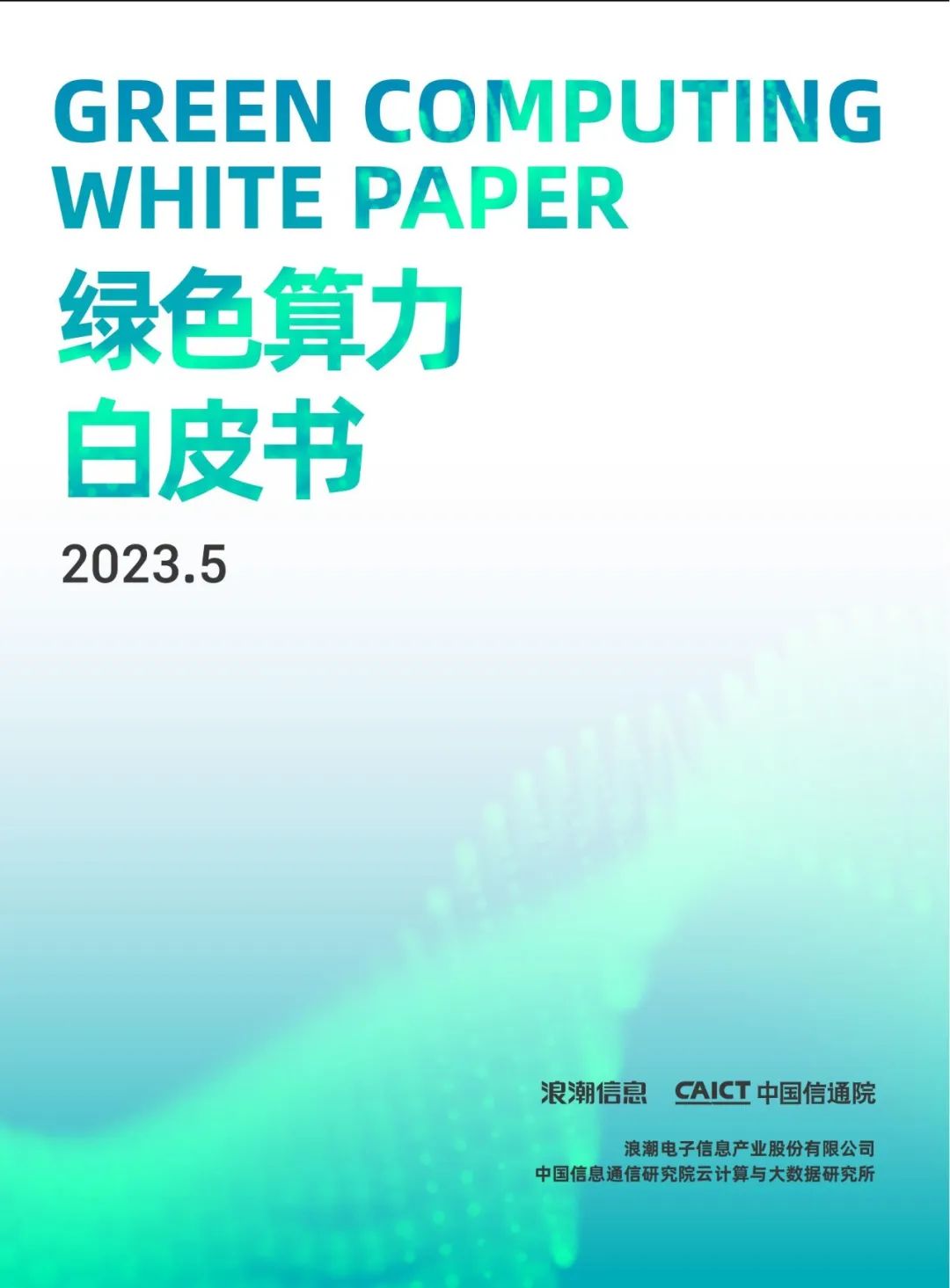
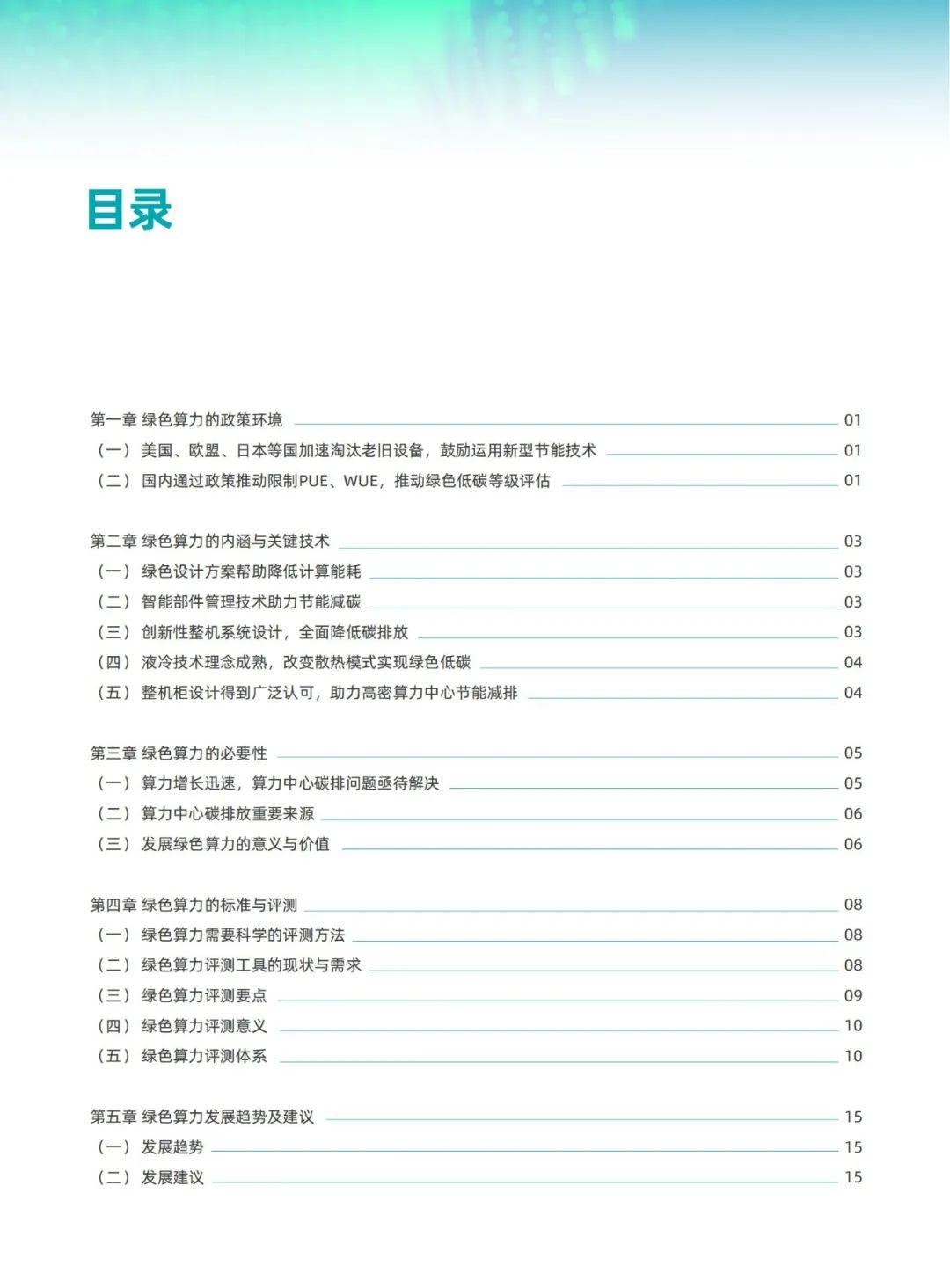
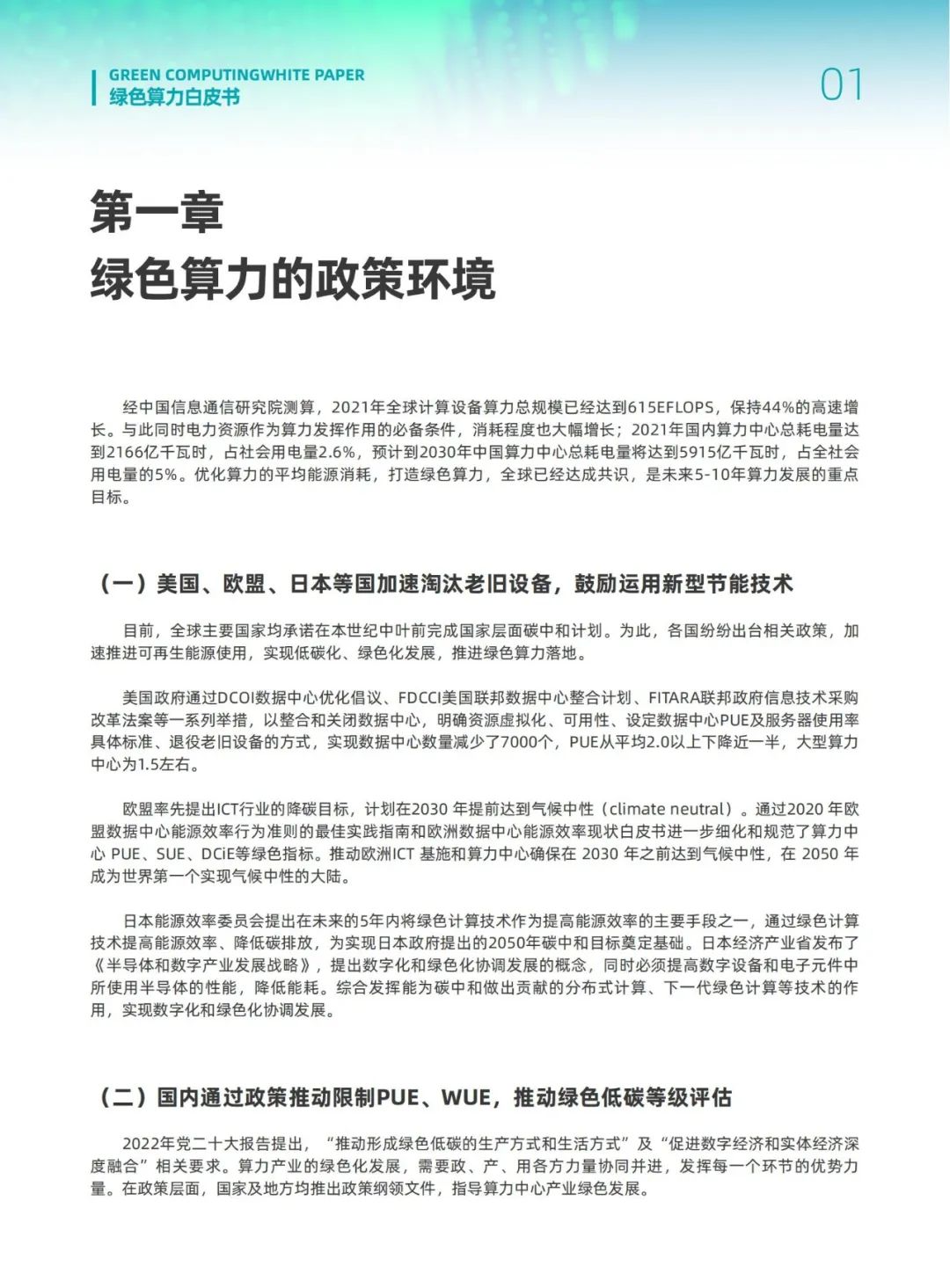
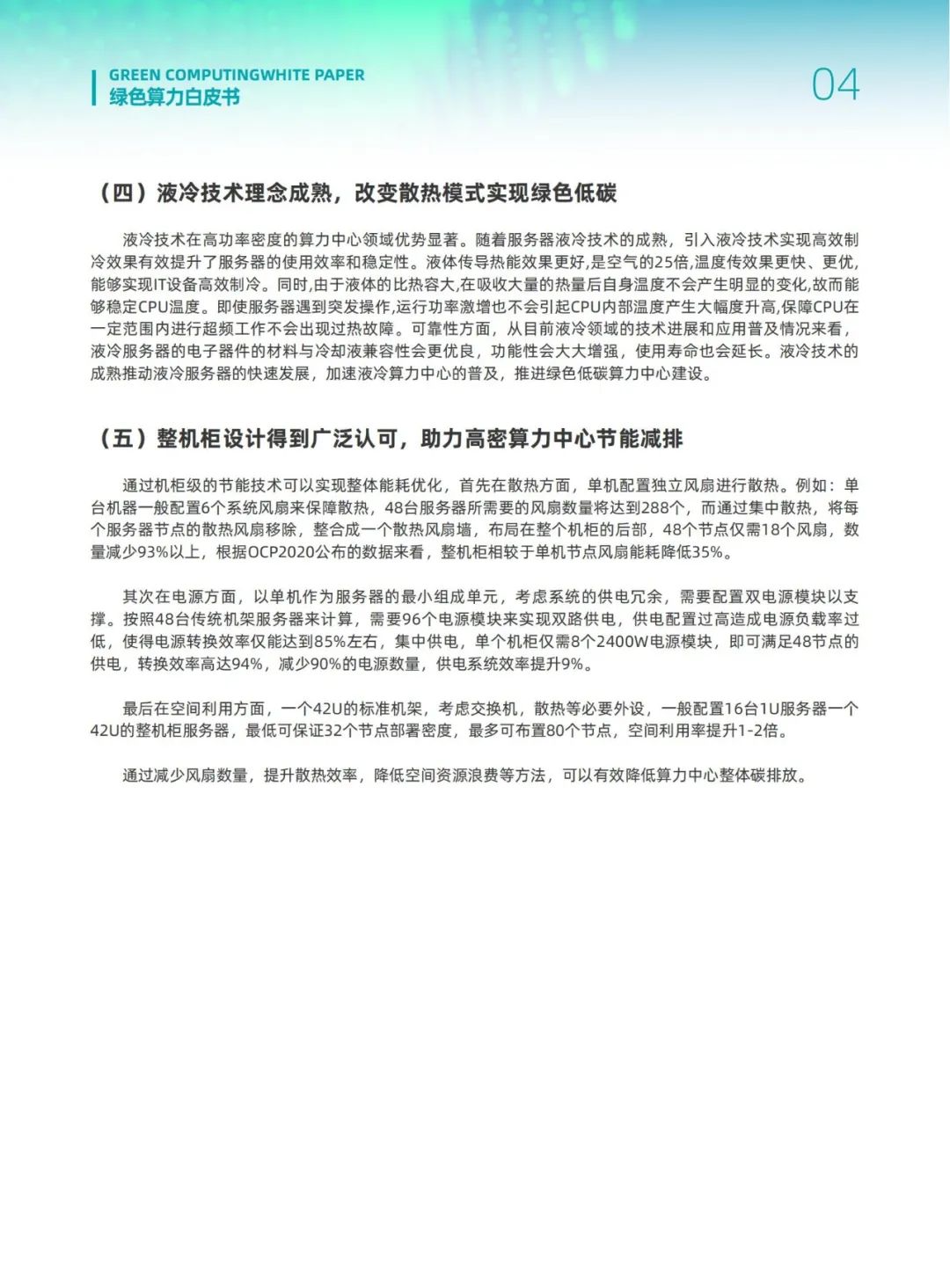
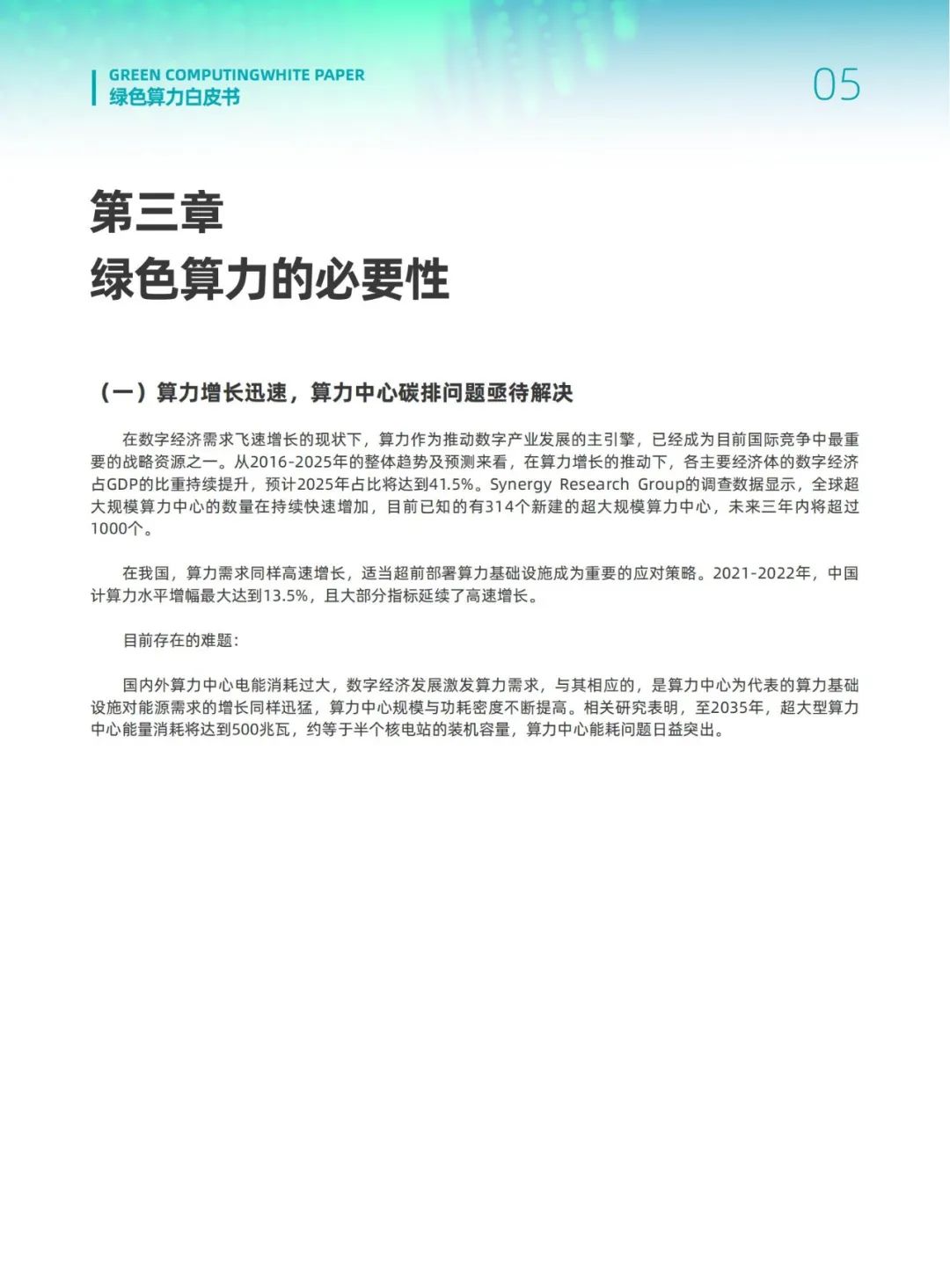
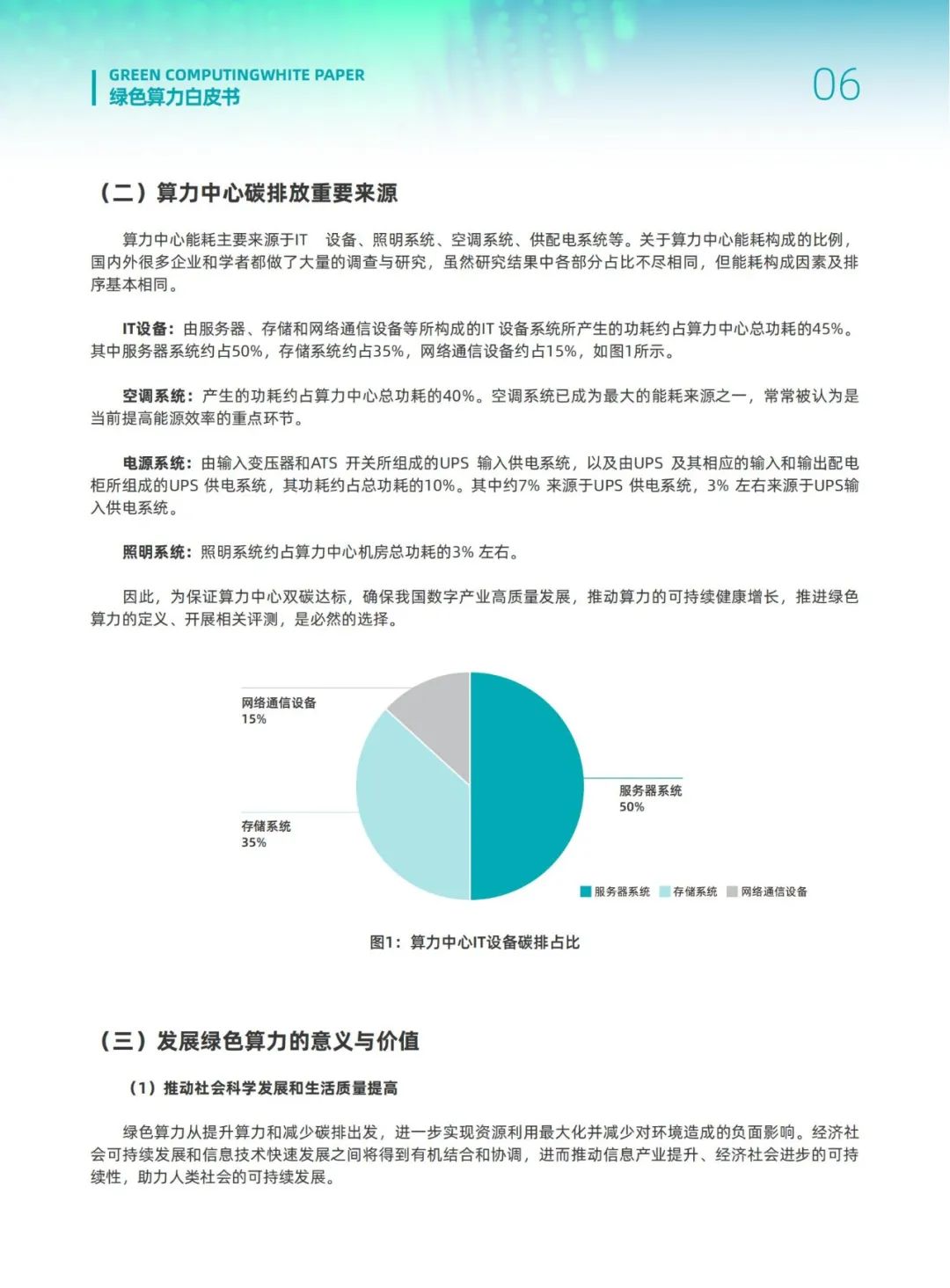
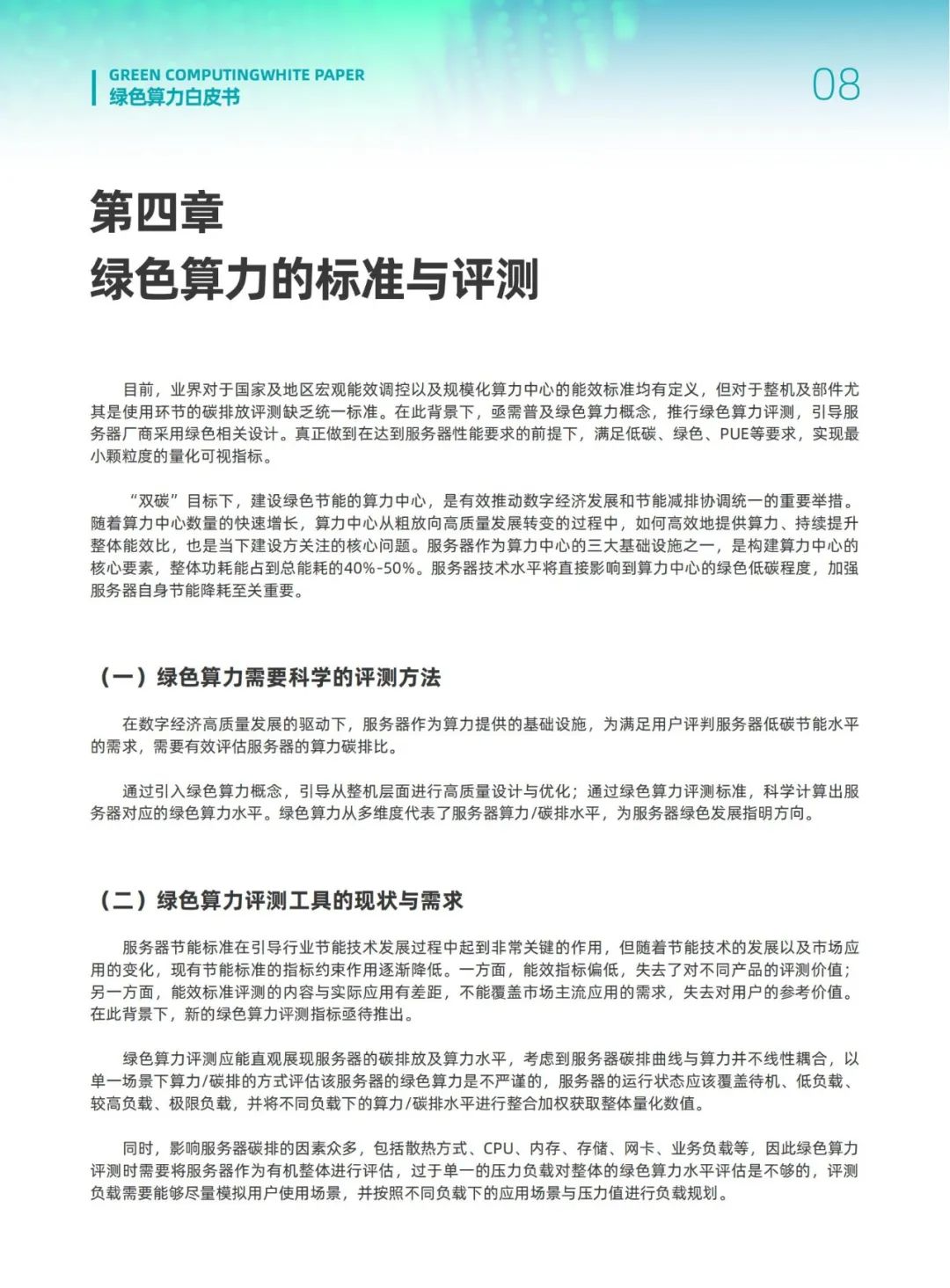
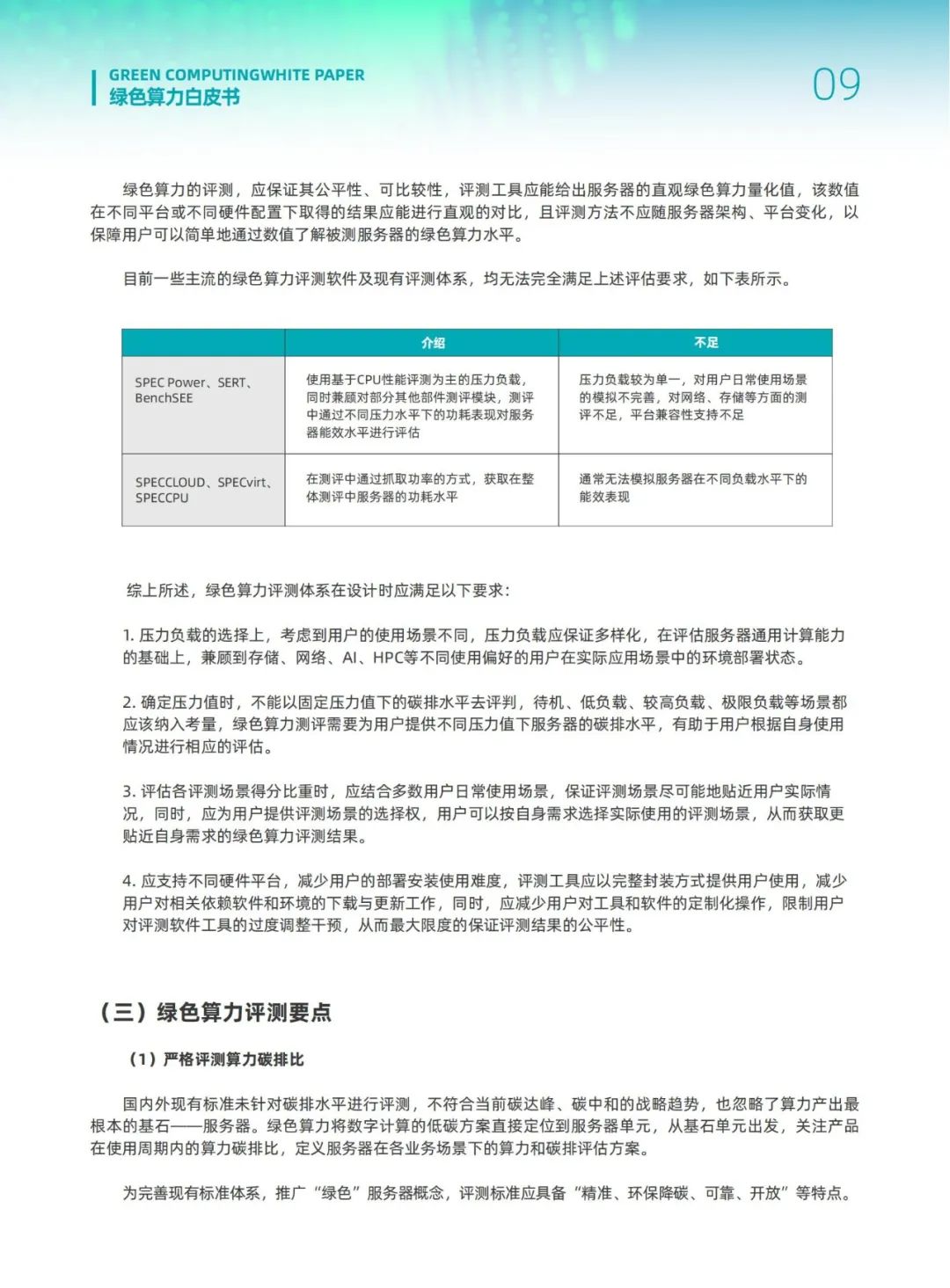
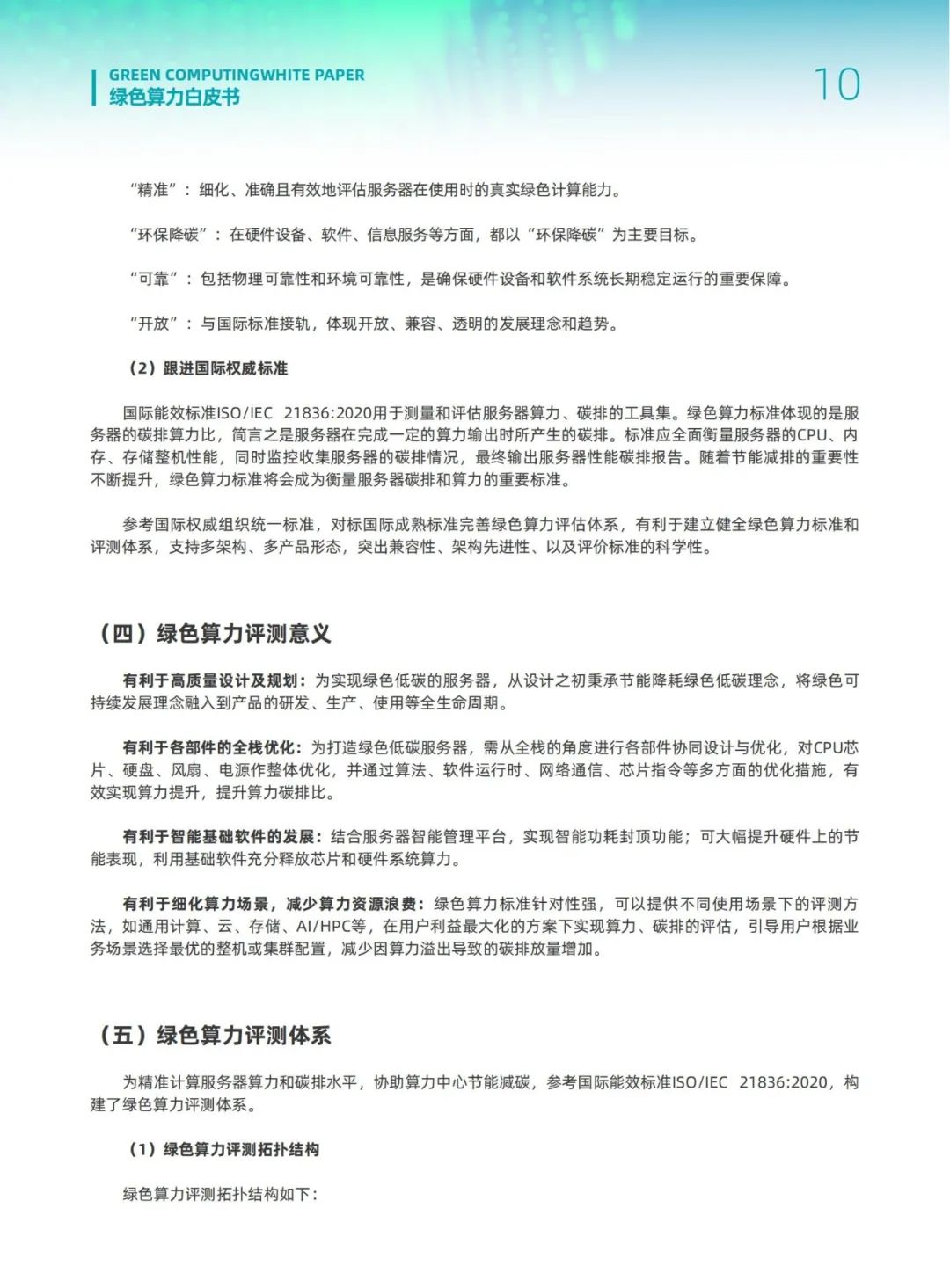
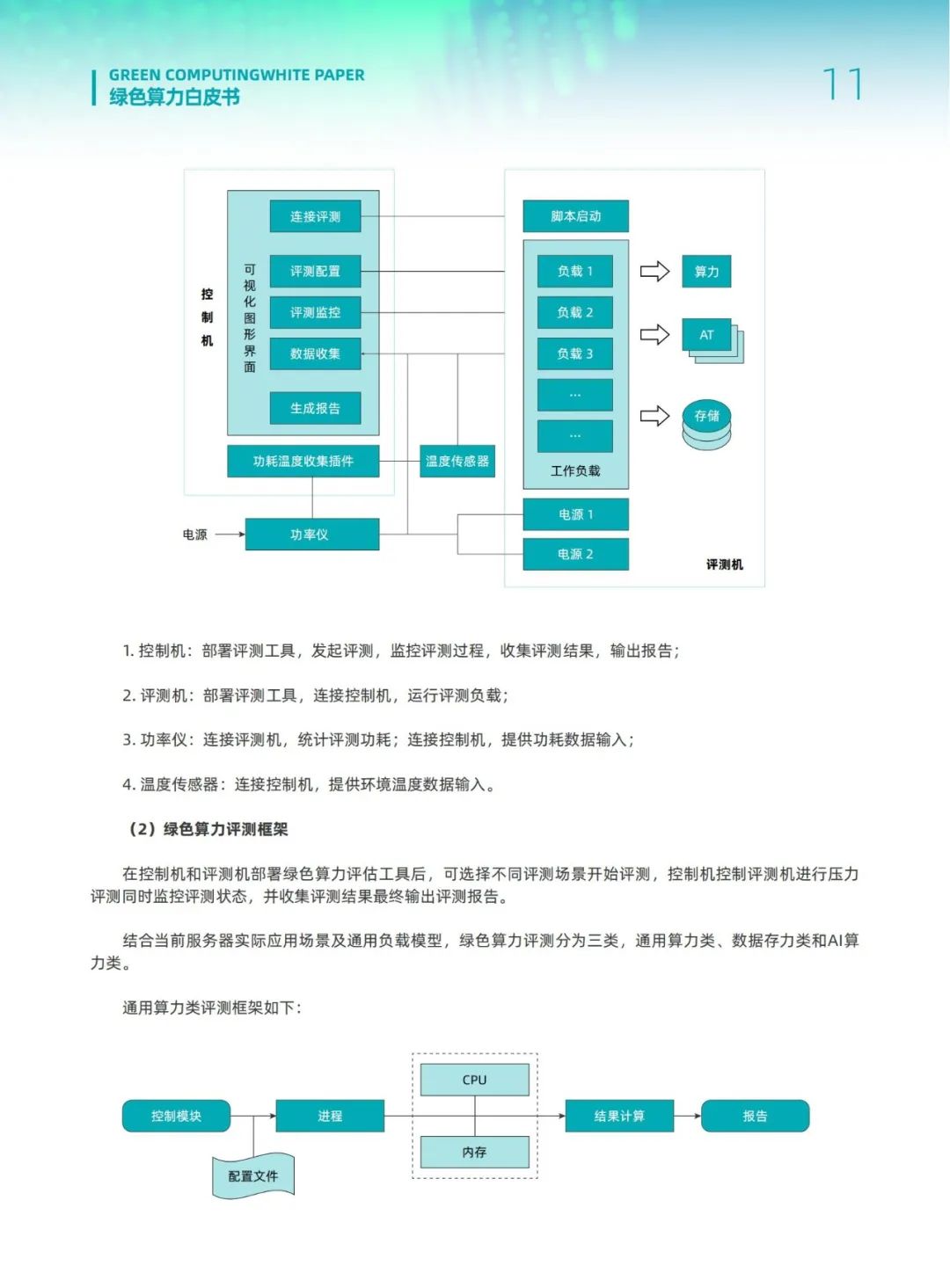
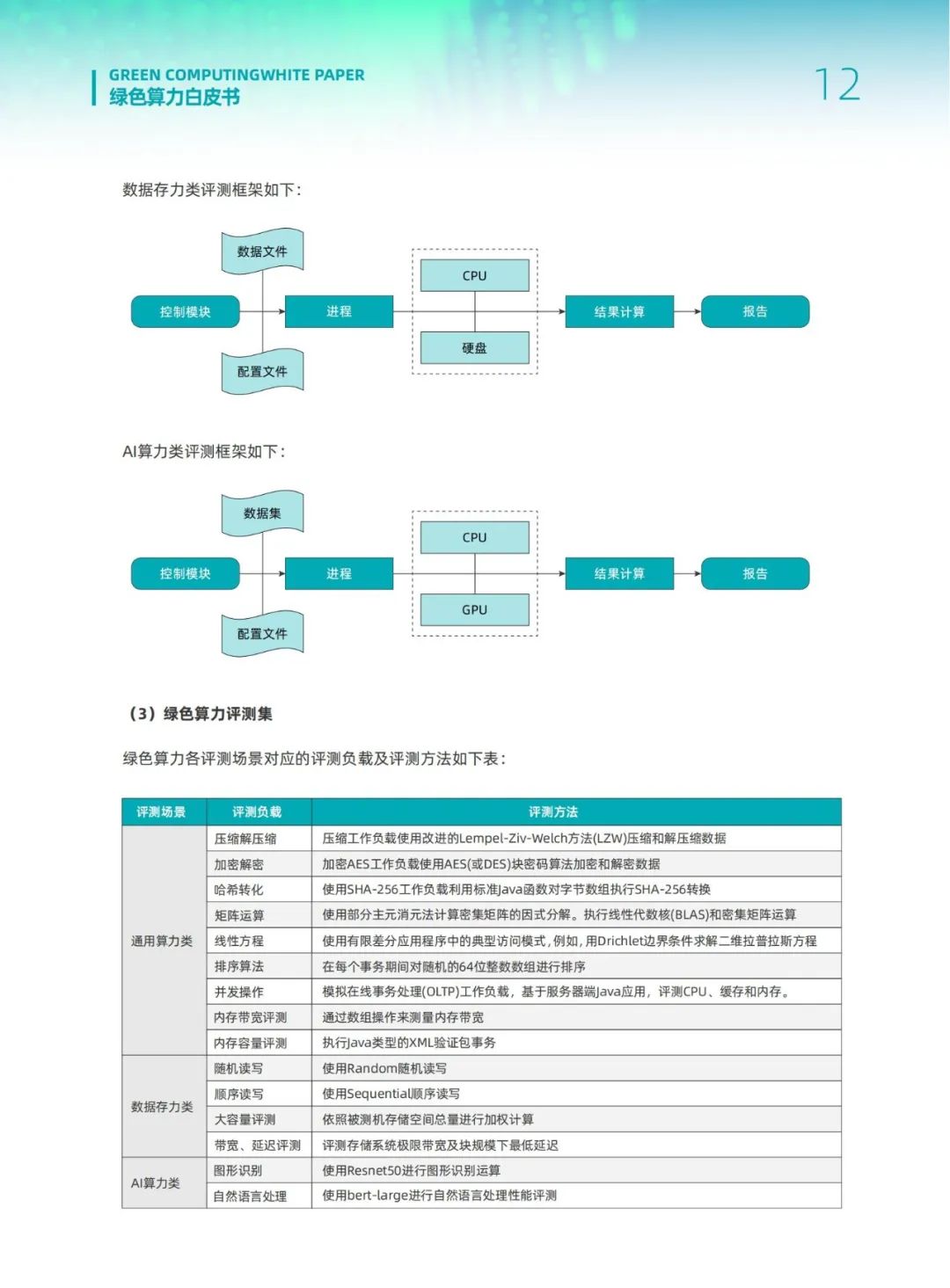
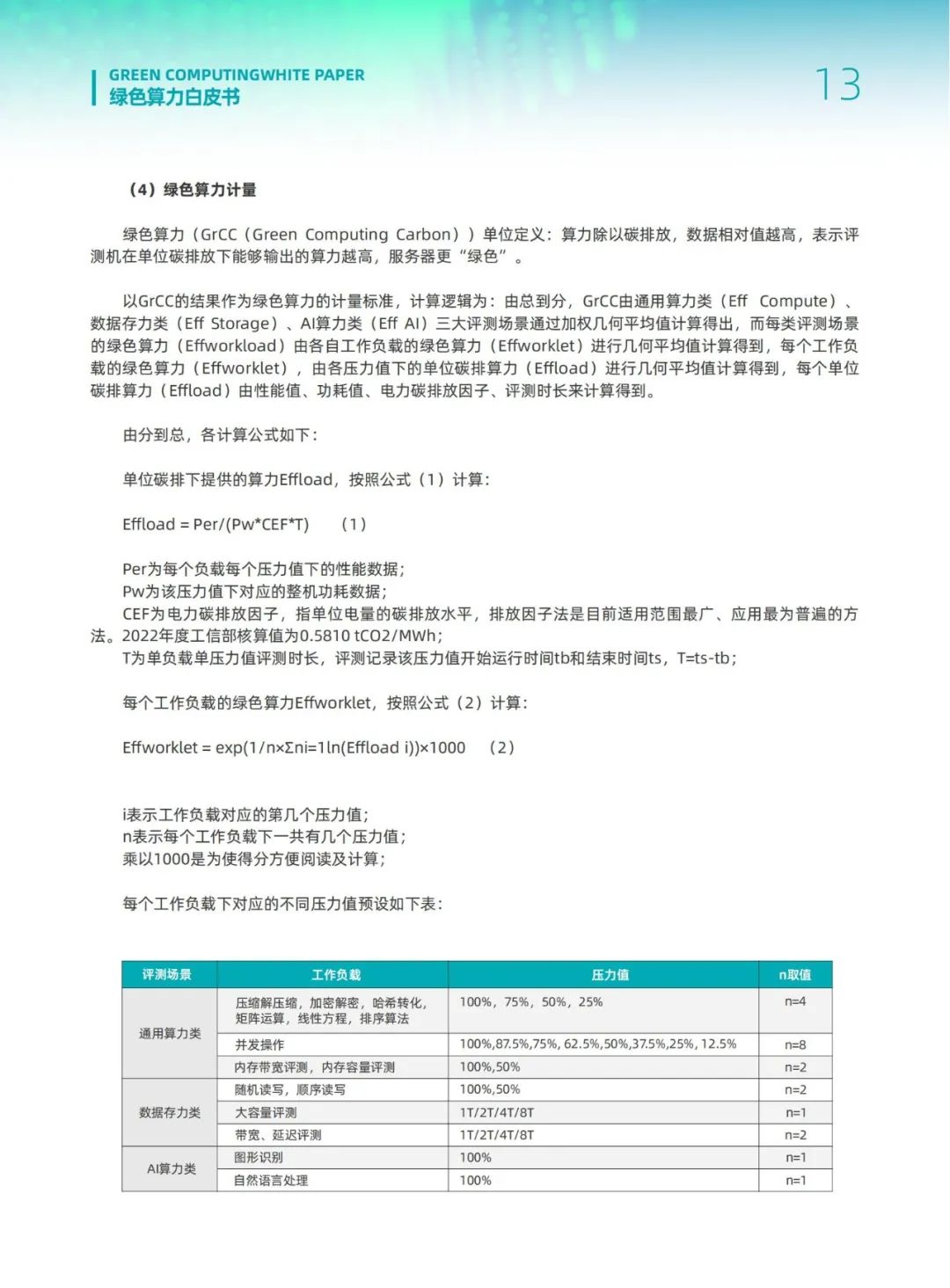
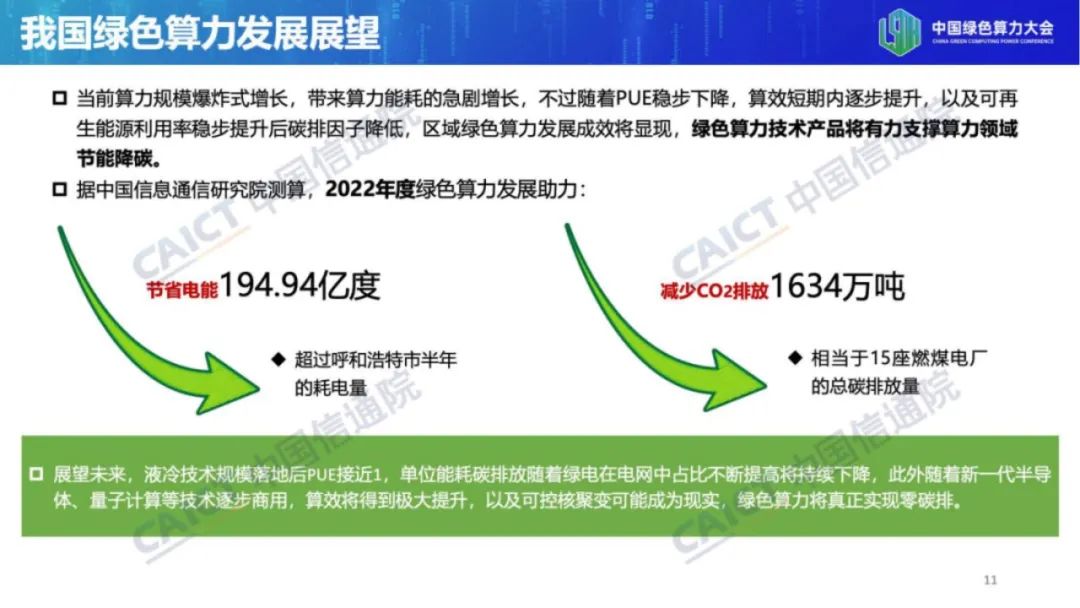
Swipe left and right to see more
2. Green Computing Industry Development White Paper
The Green Computing Industry Alliance released the “Green Computing Industry Development White Paper (2023 Edition)” at the World Computing Conference. The following are the main conclusions of the white paper:
It is expected that by 2025, the electricity consumption of data centers in China will increase to 400 billion kilowatt-hours, accounting for as much as 5.8% of the national electricity consumption; the greening of computing power applications will become an important part of future industry development; general computing technology routes such as Arm and RISC-V will fully explode, and heterogeneous intelligent computing platforms such as GPU, NPU, and DPU will prosper, with the diversity of computing power characteristics becoming widely evident; China’s innovation chain and industrial chain in technology fields from chips, complete machines, operating systems, cloud platforms, middleware to application software have initially formed.
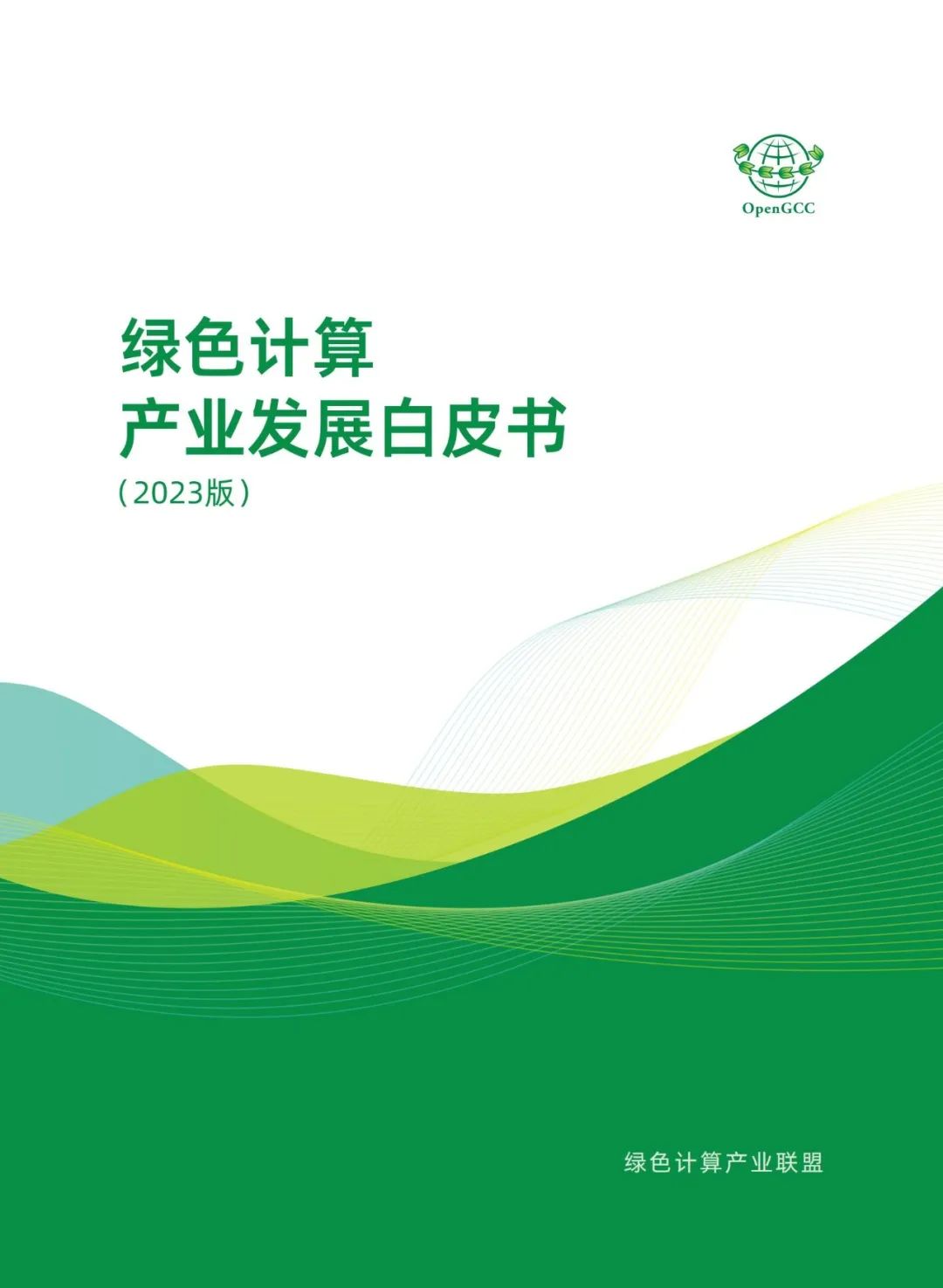
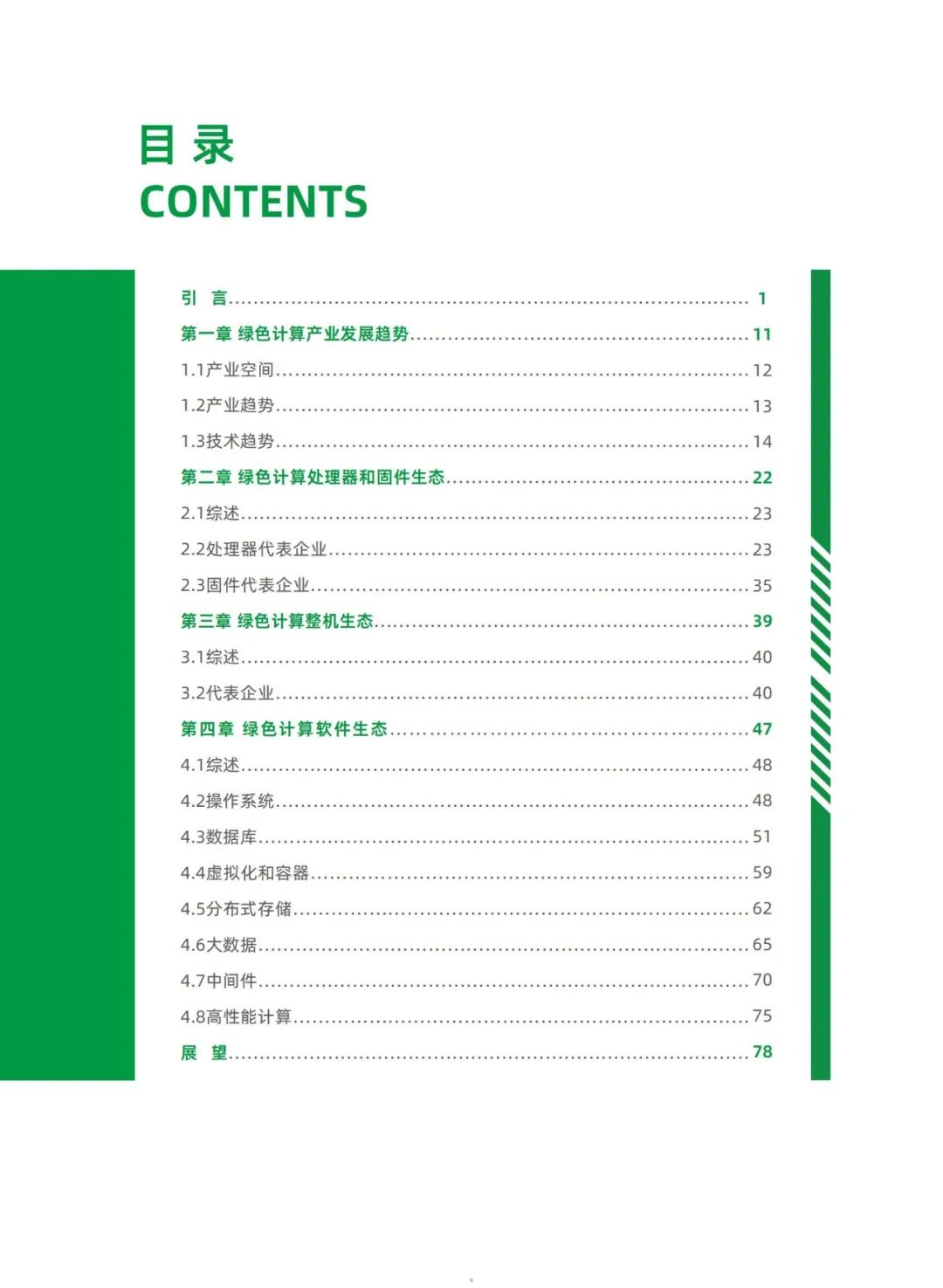
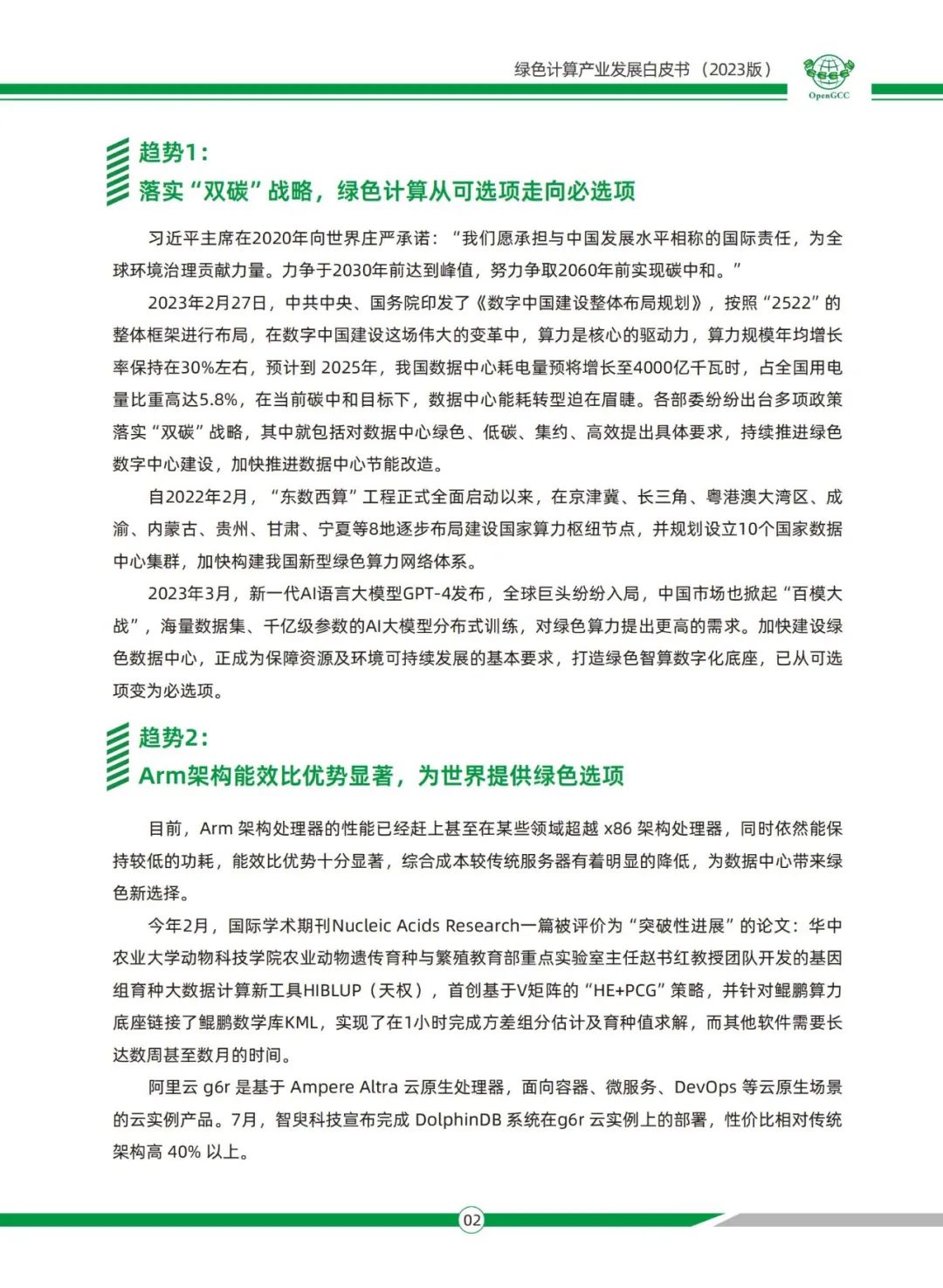
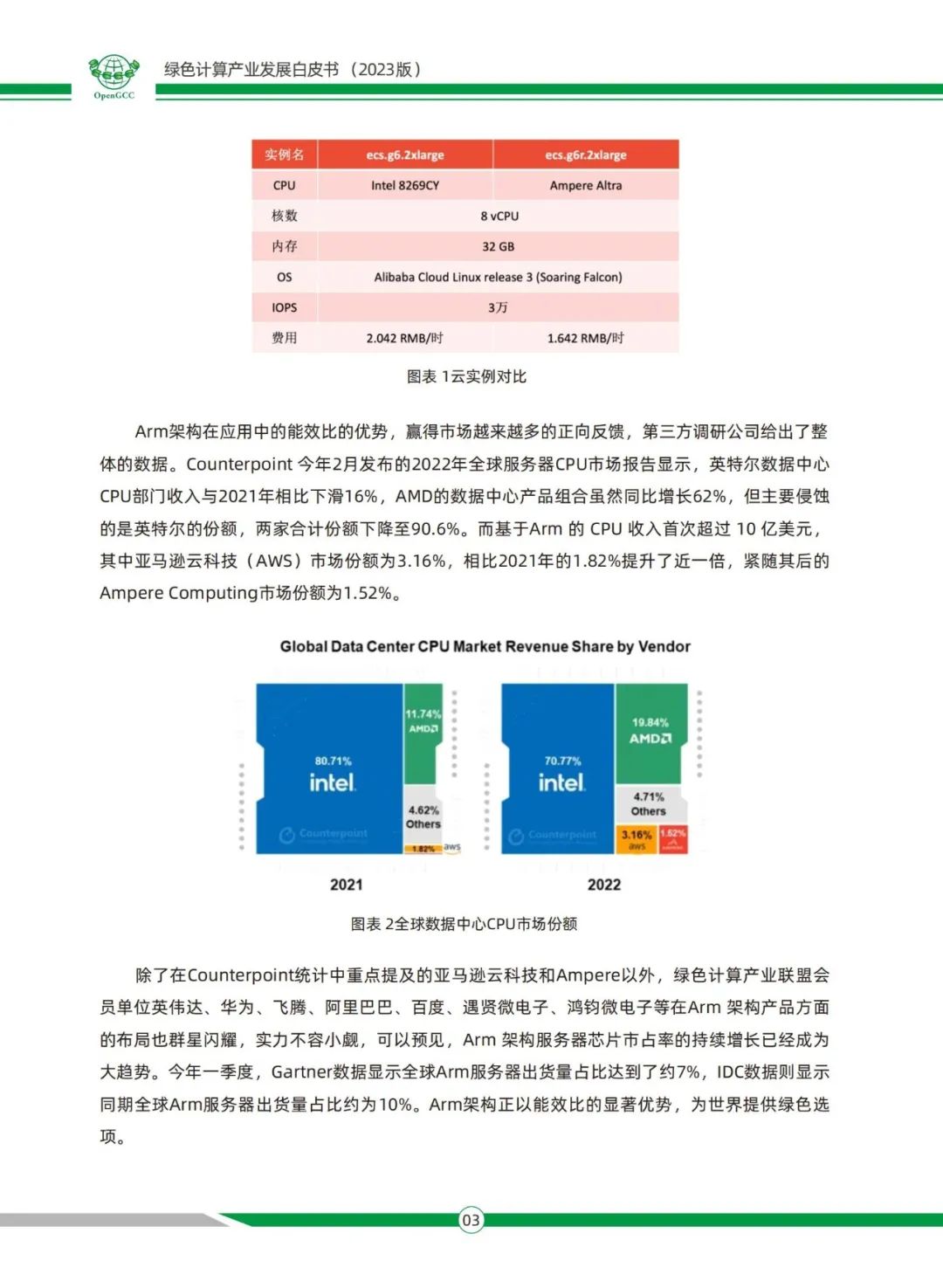
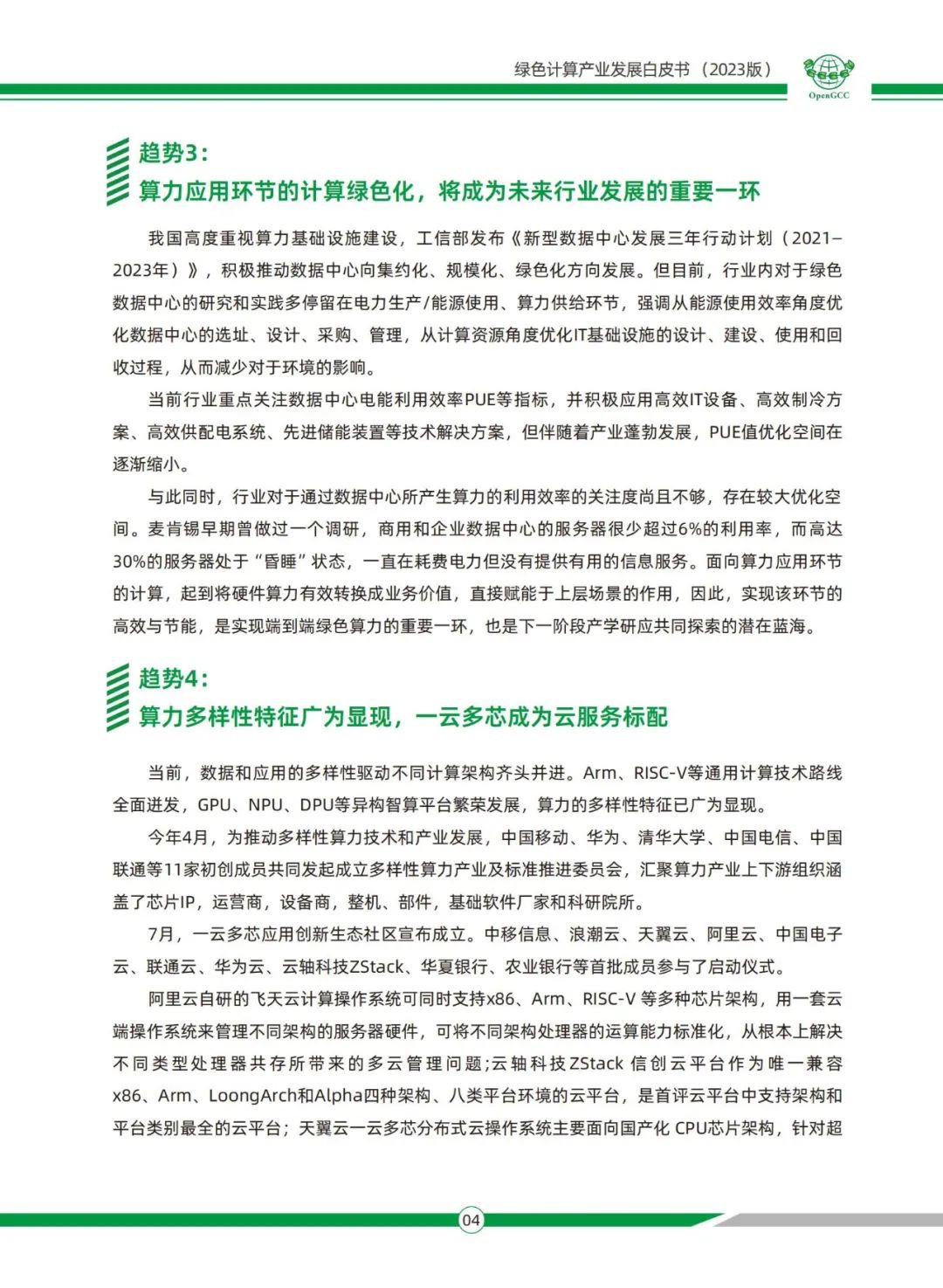
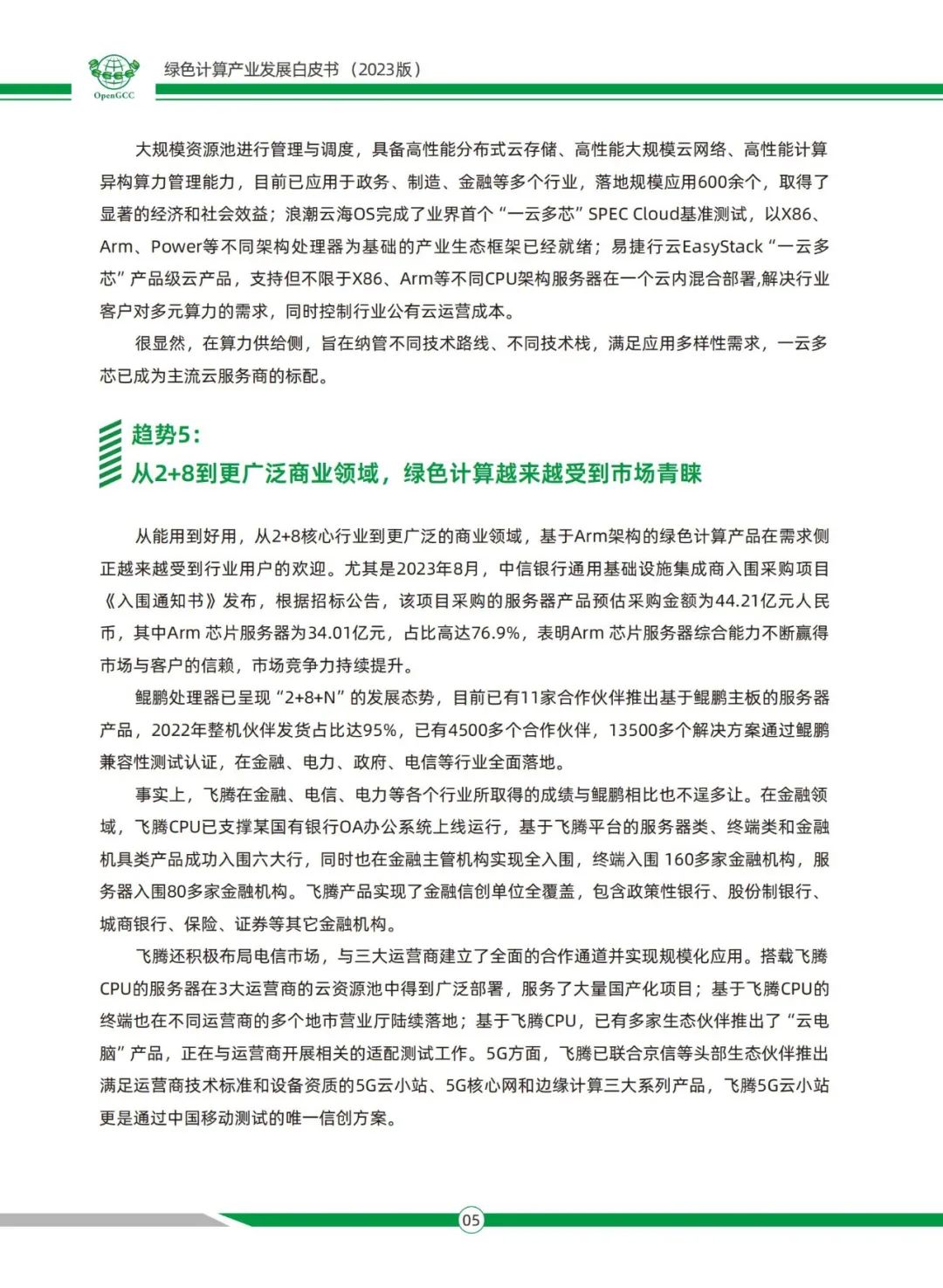
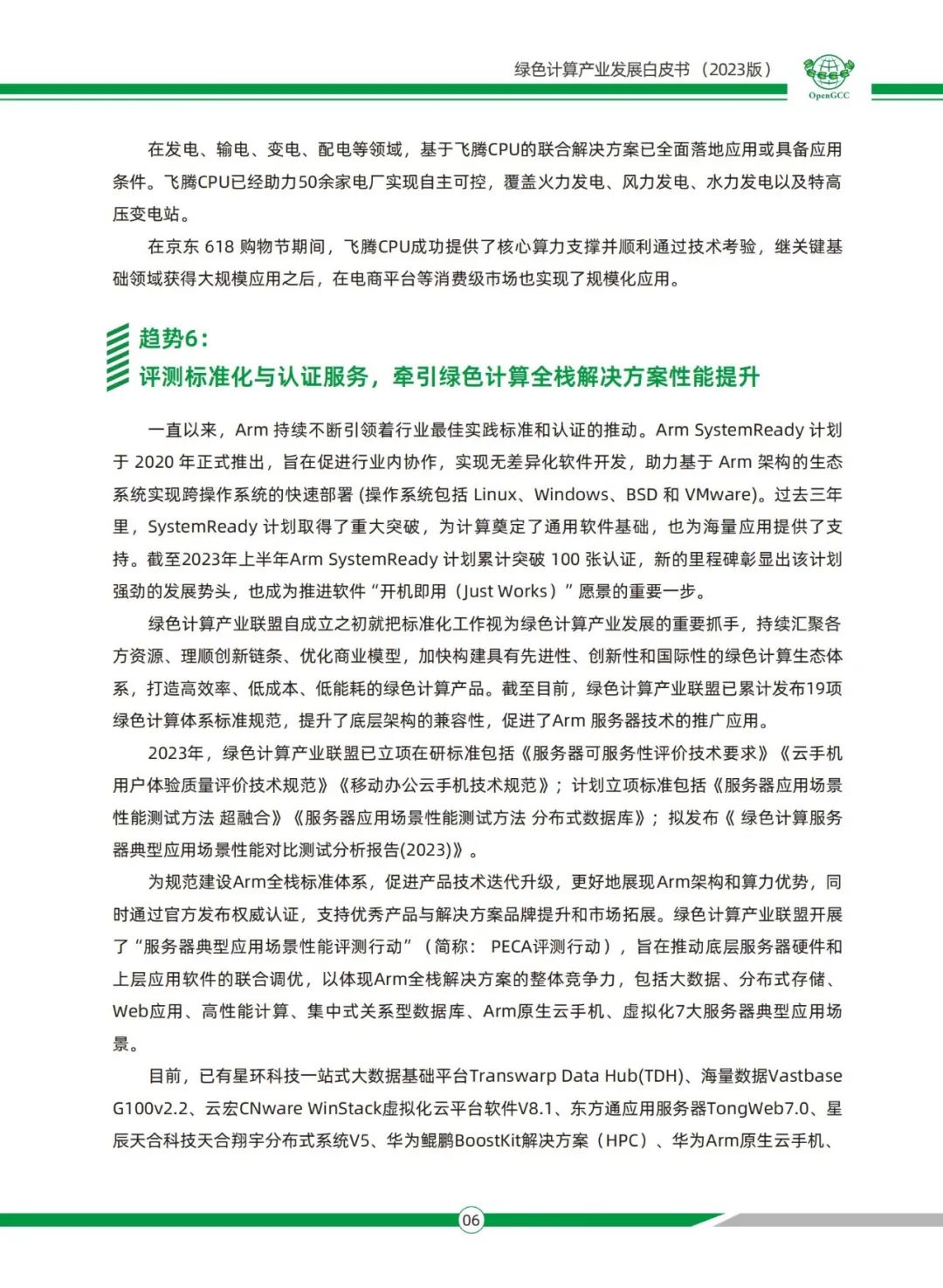
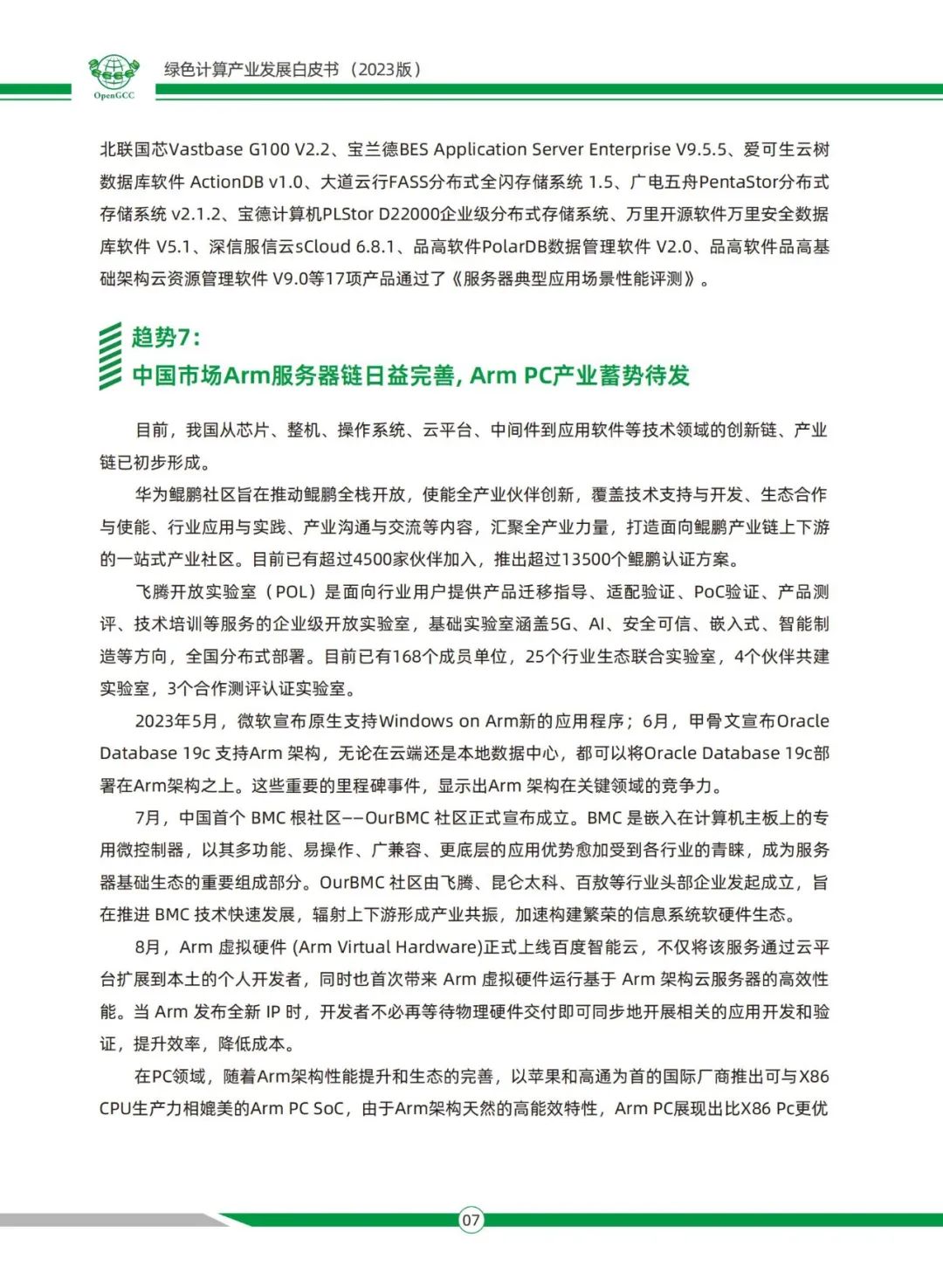
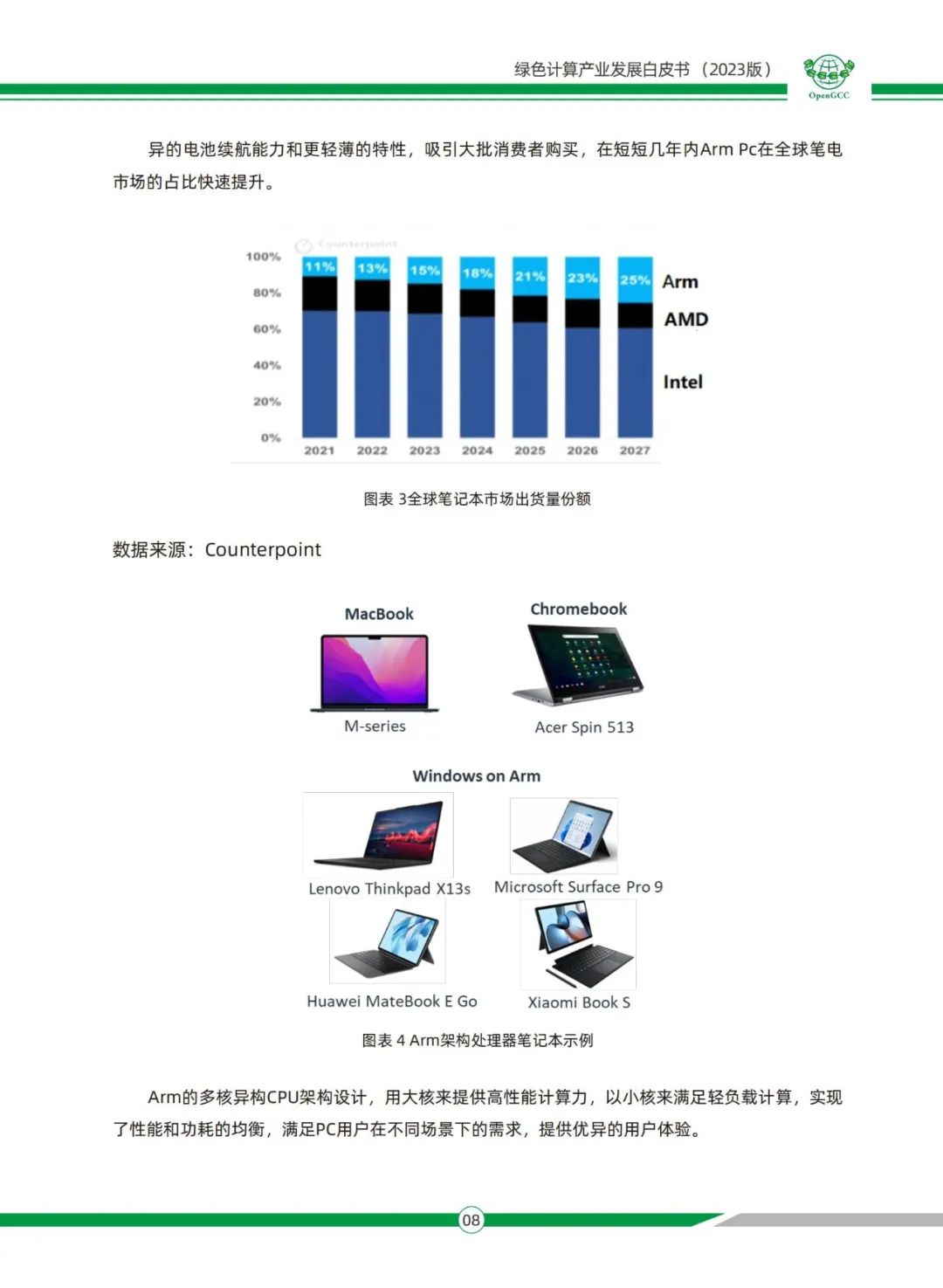
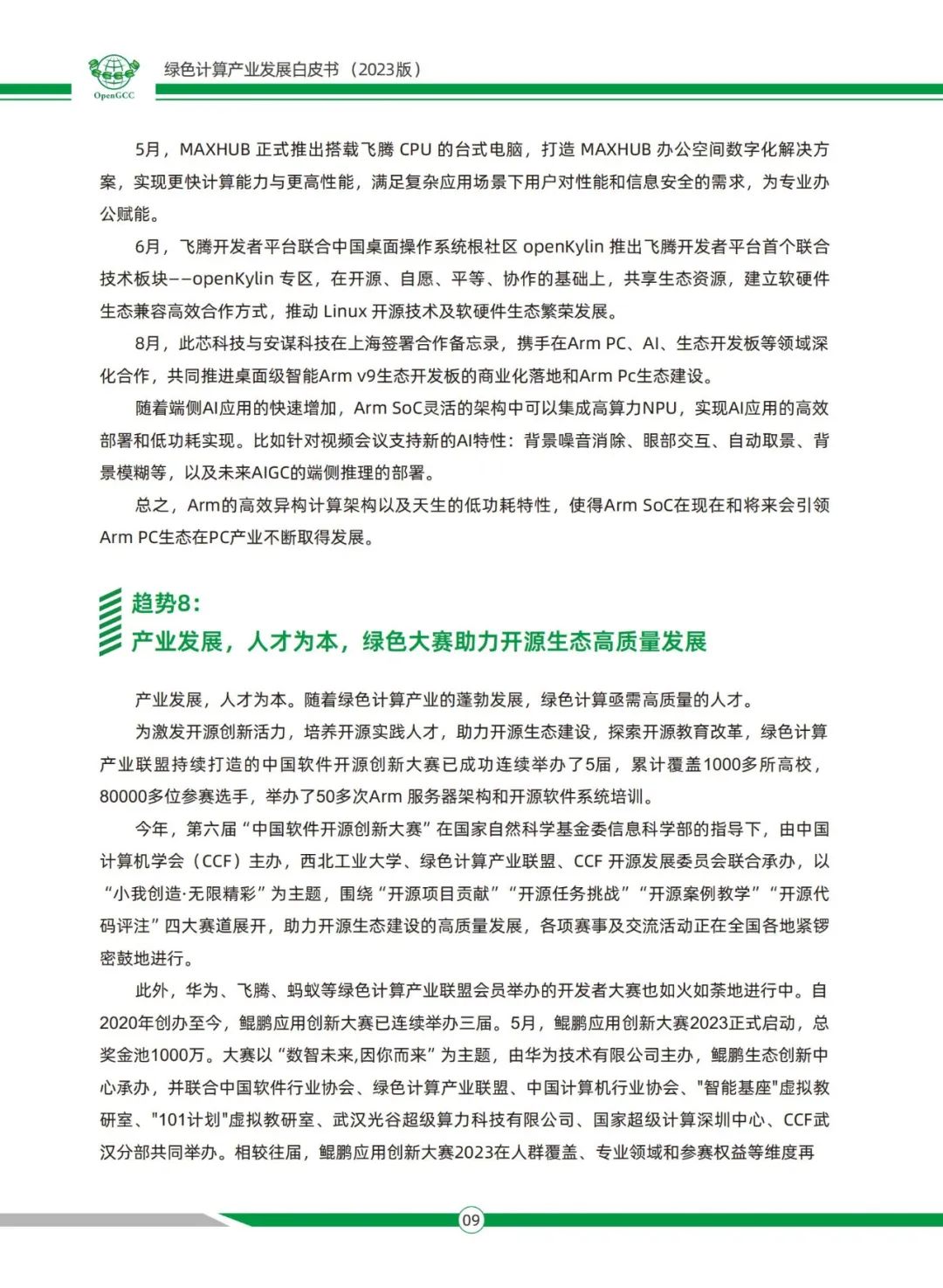
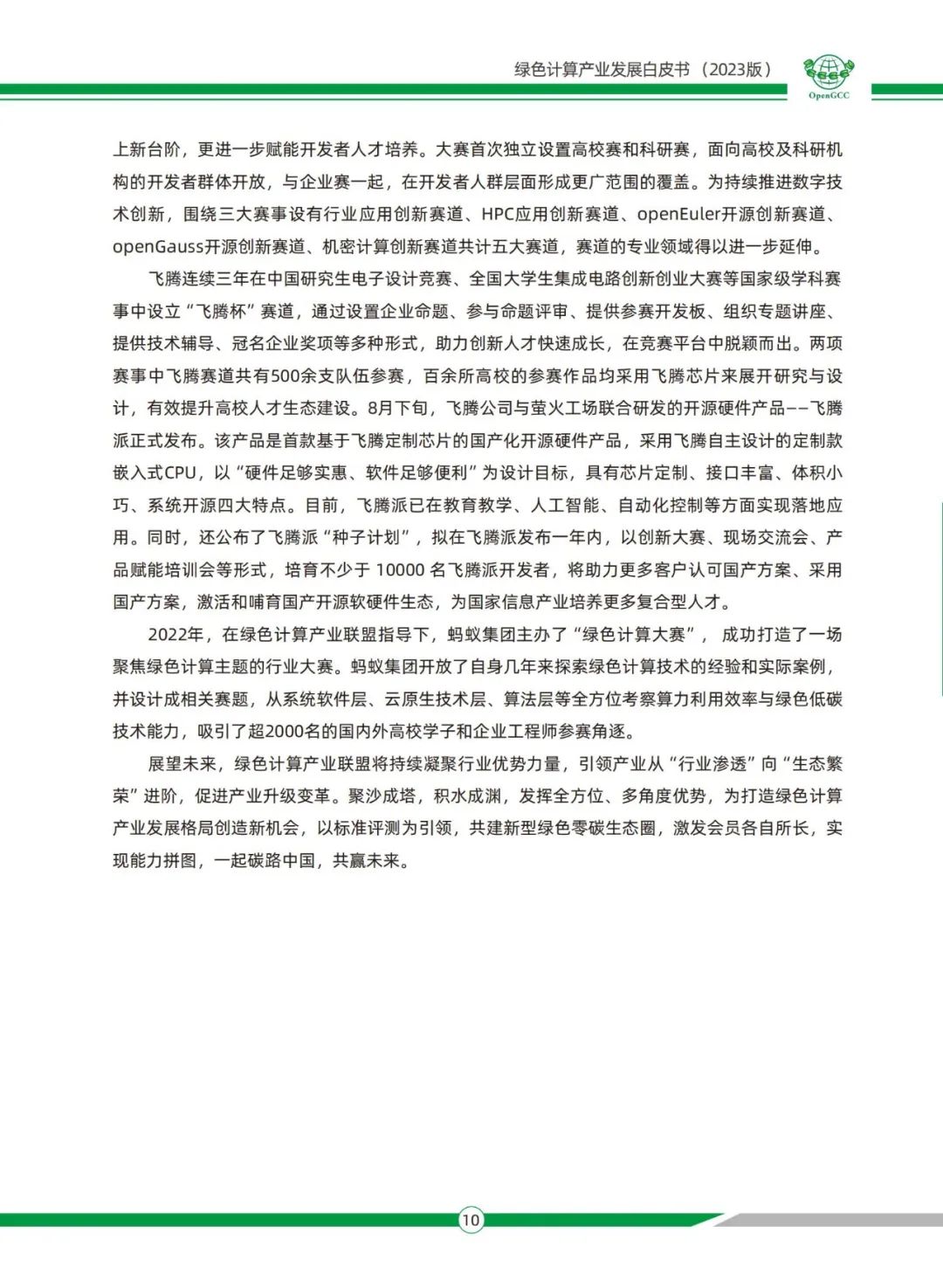
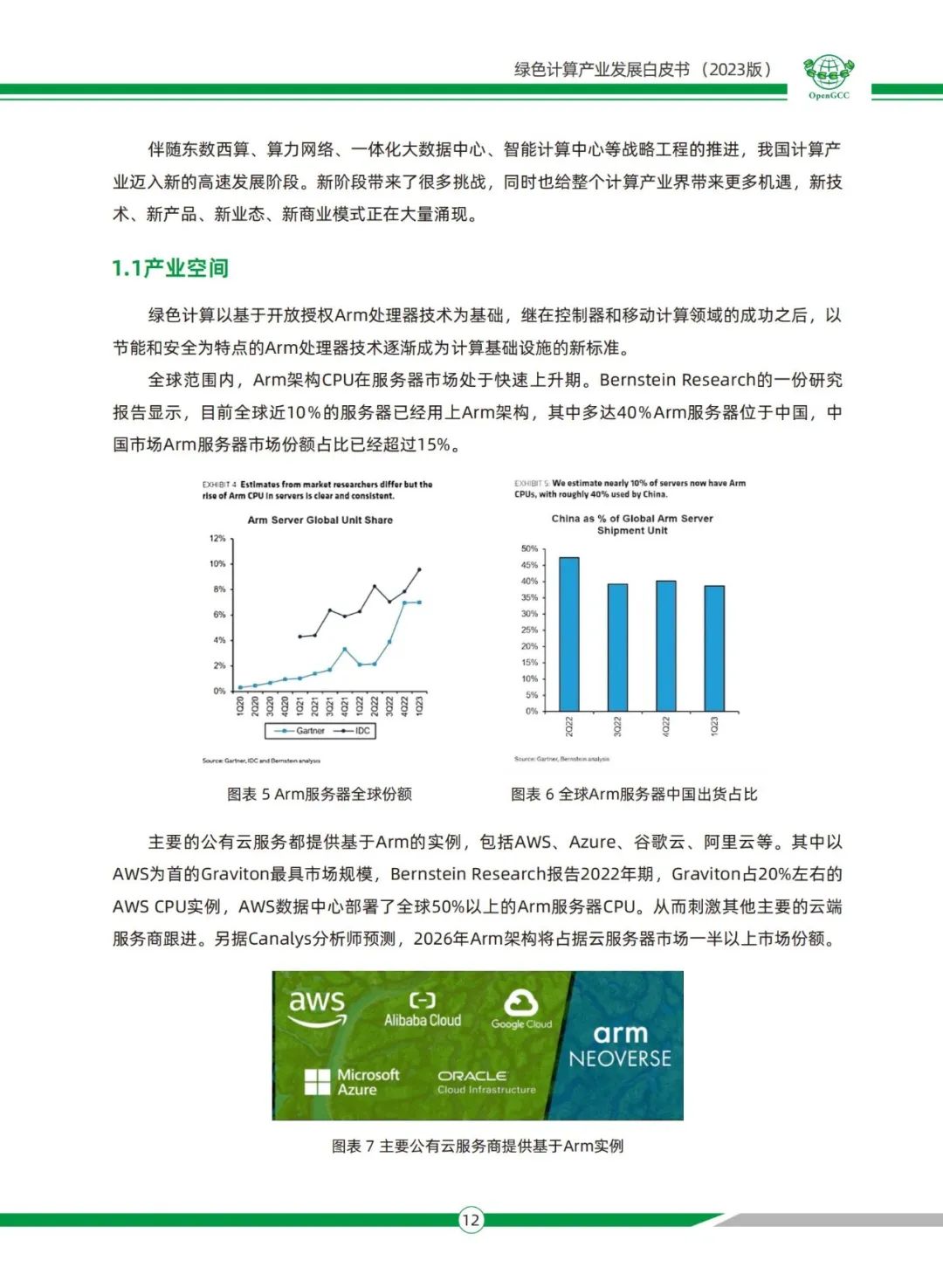
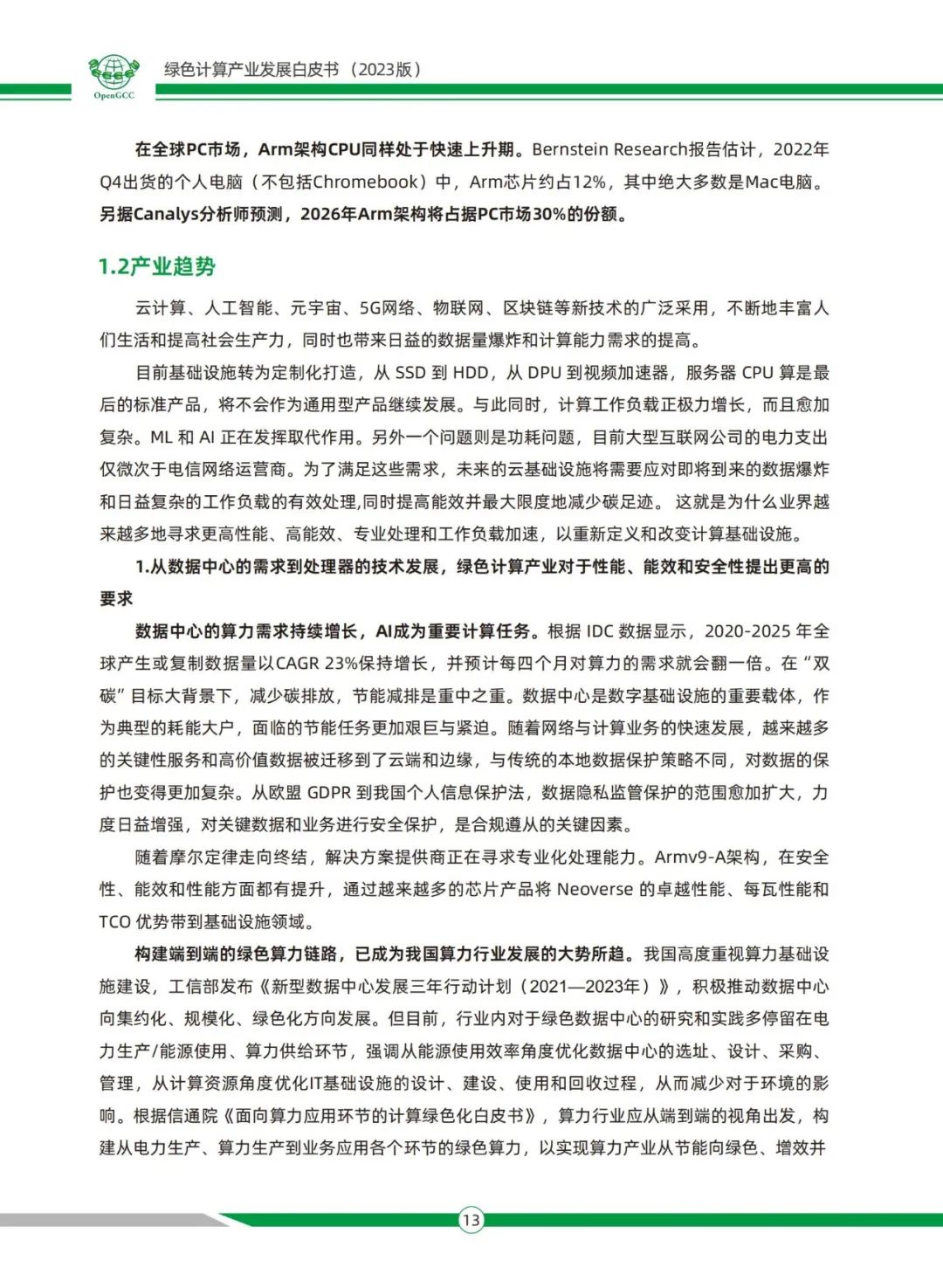
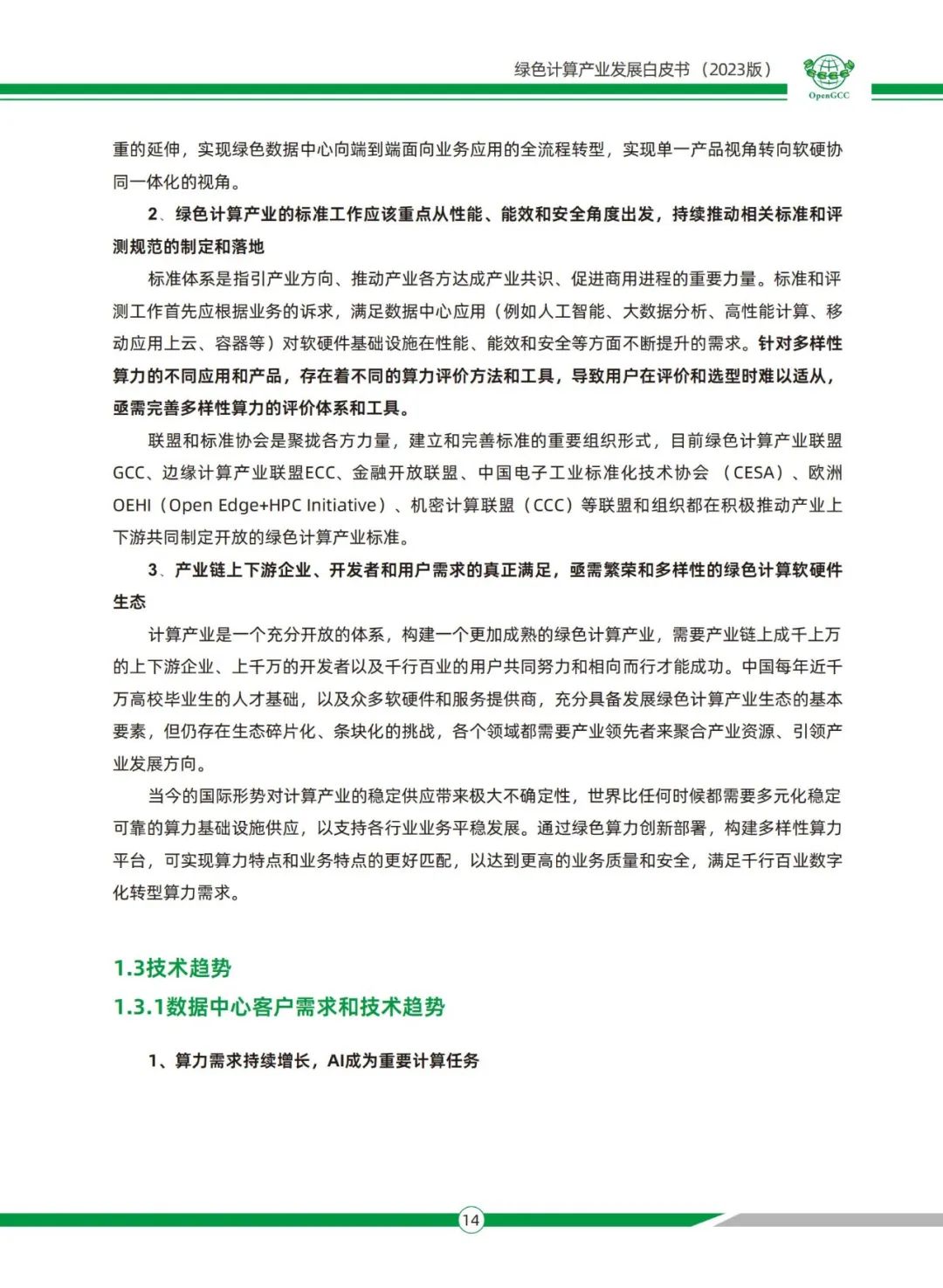
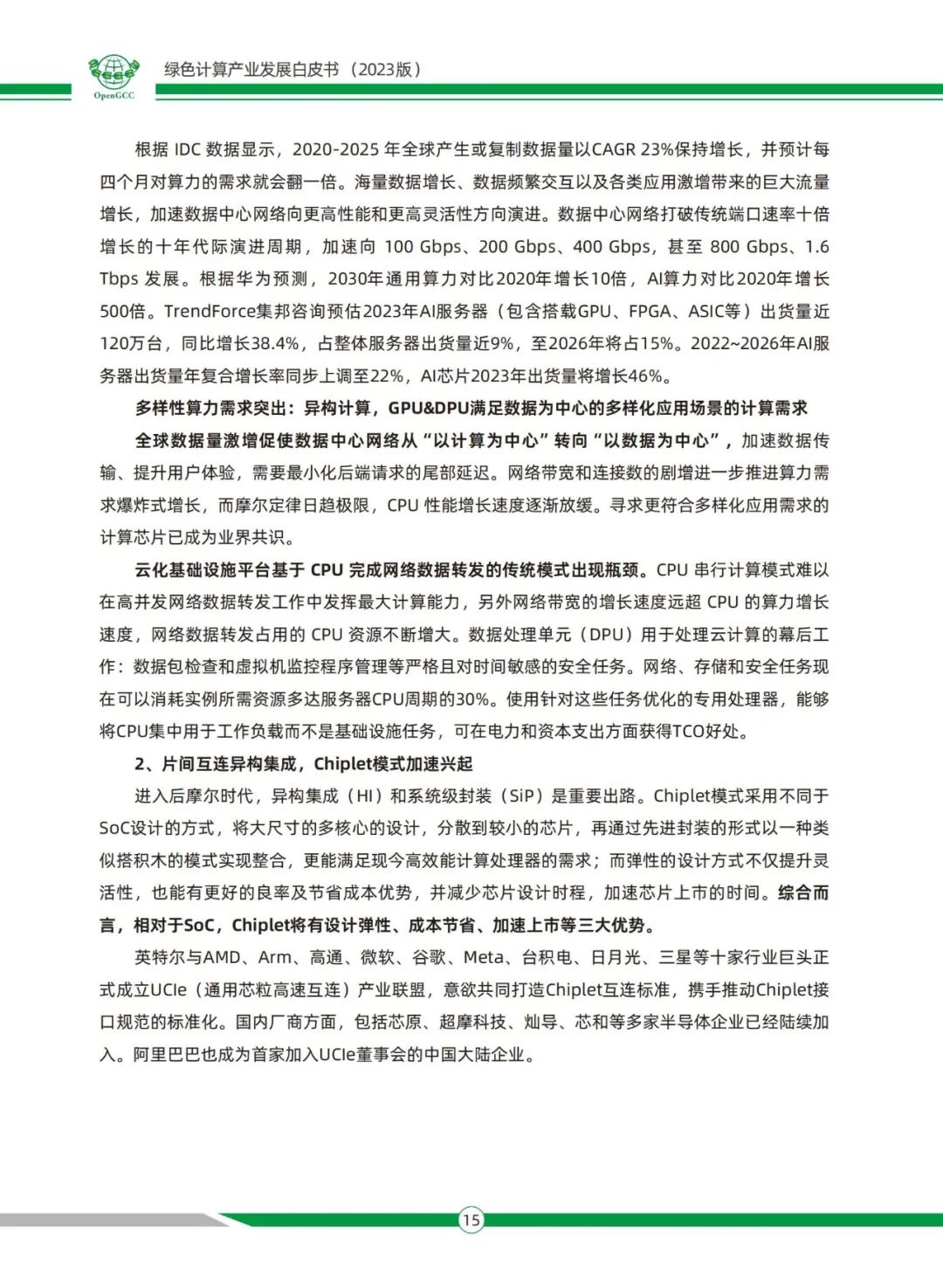
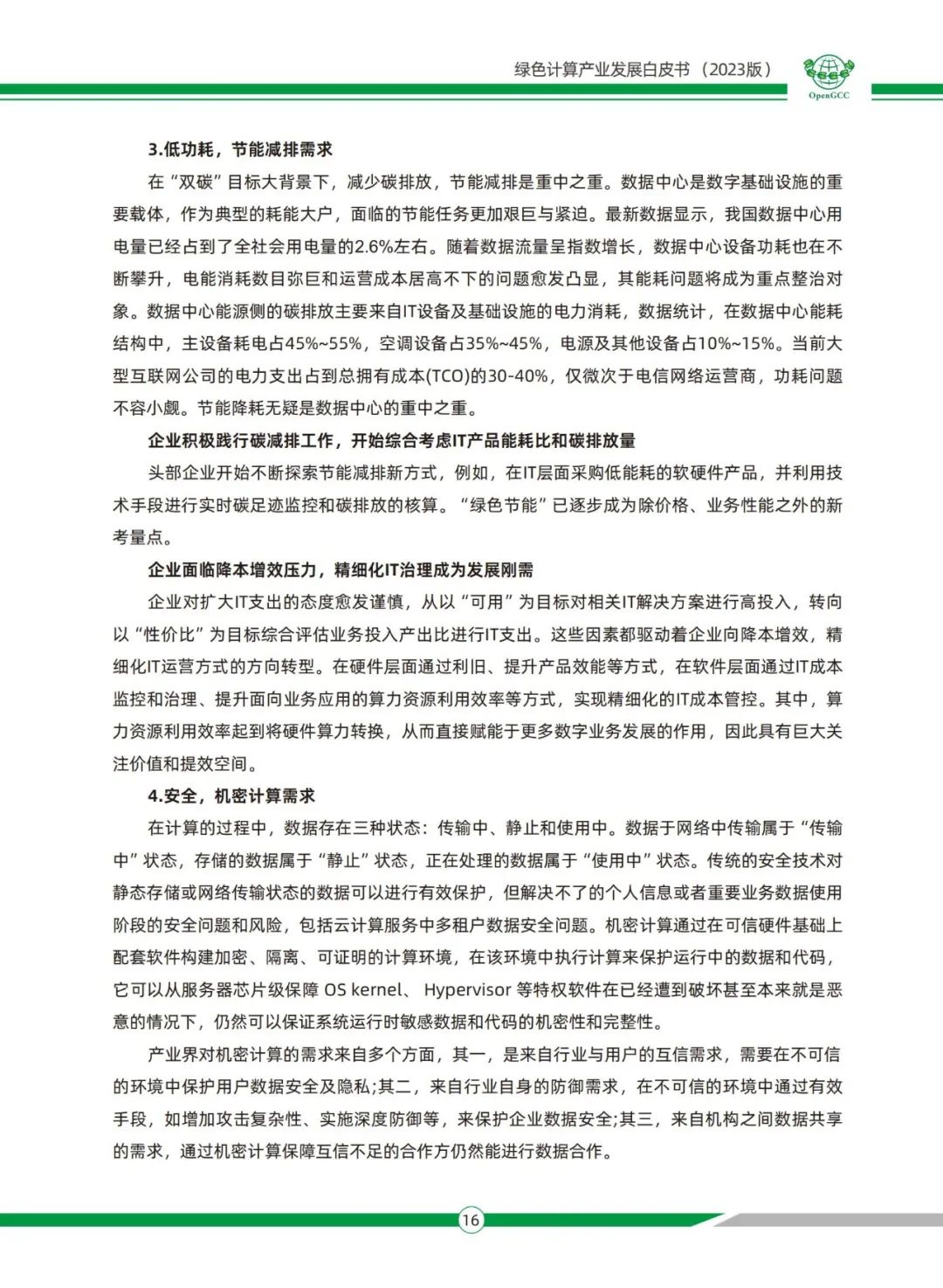
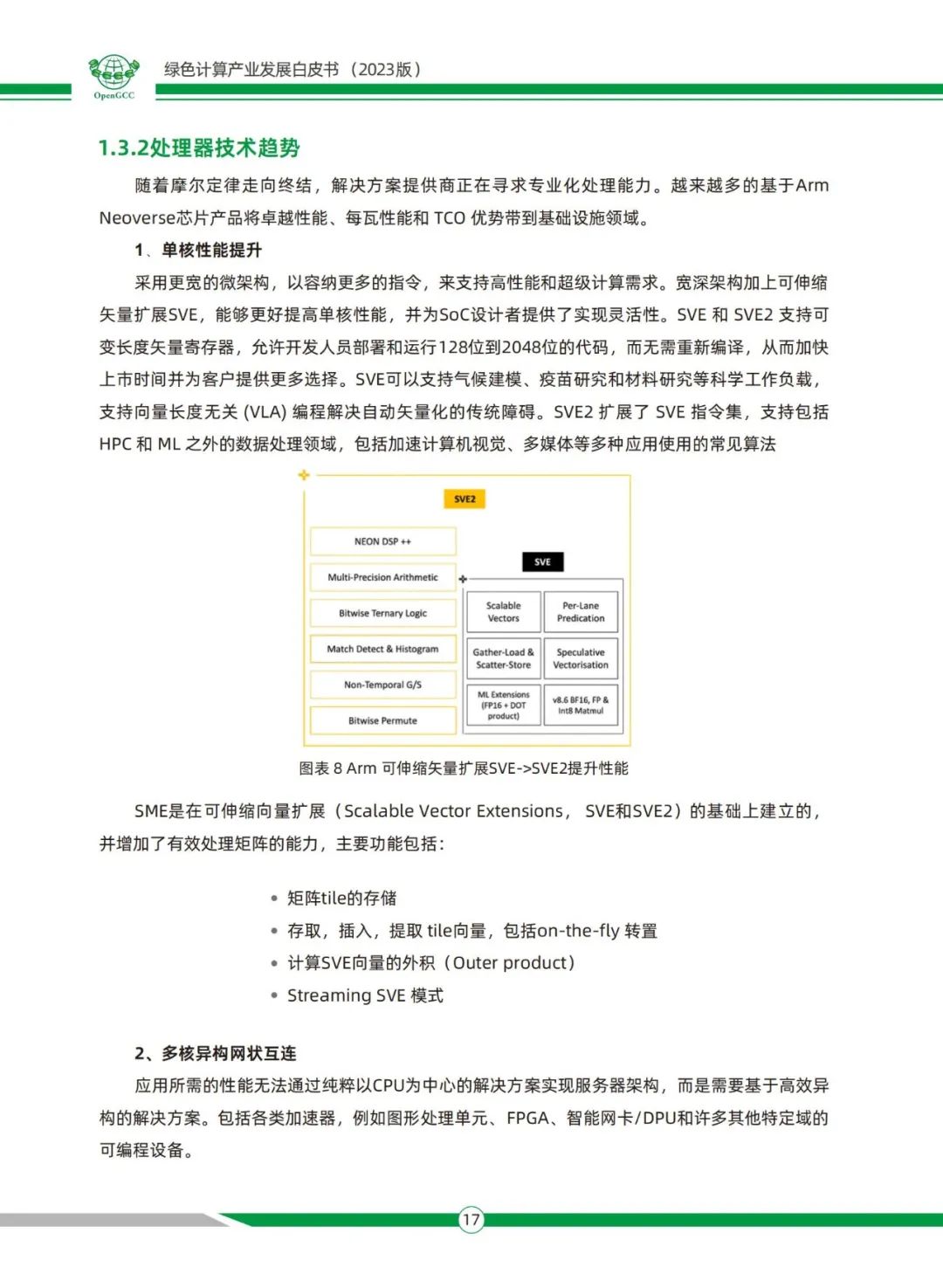
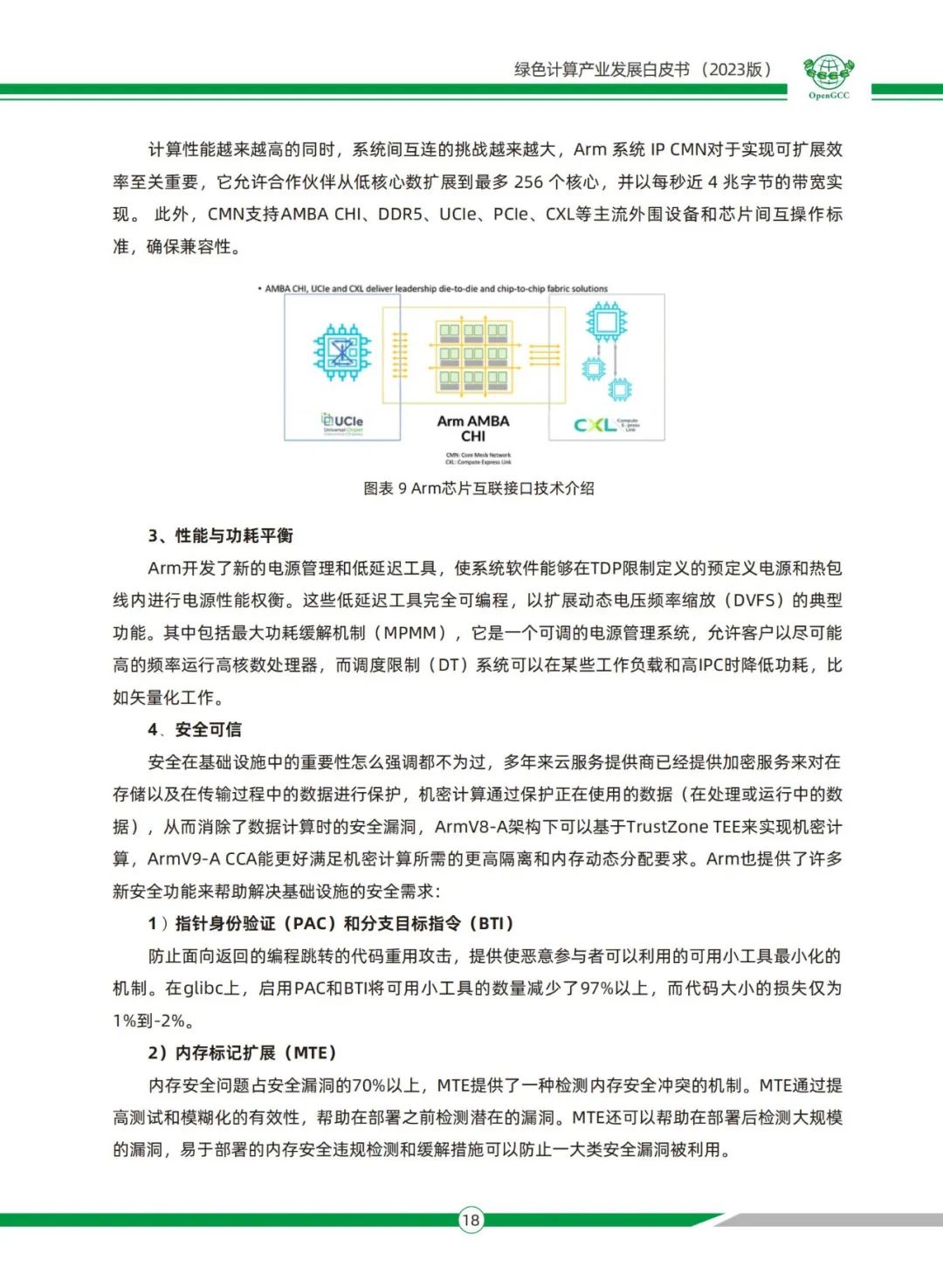
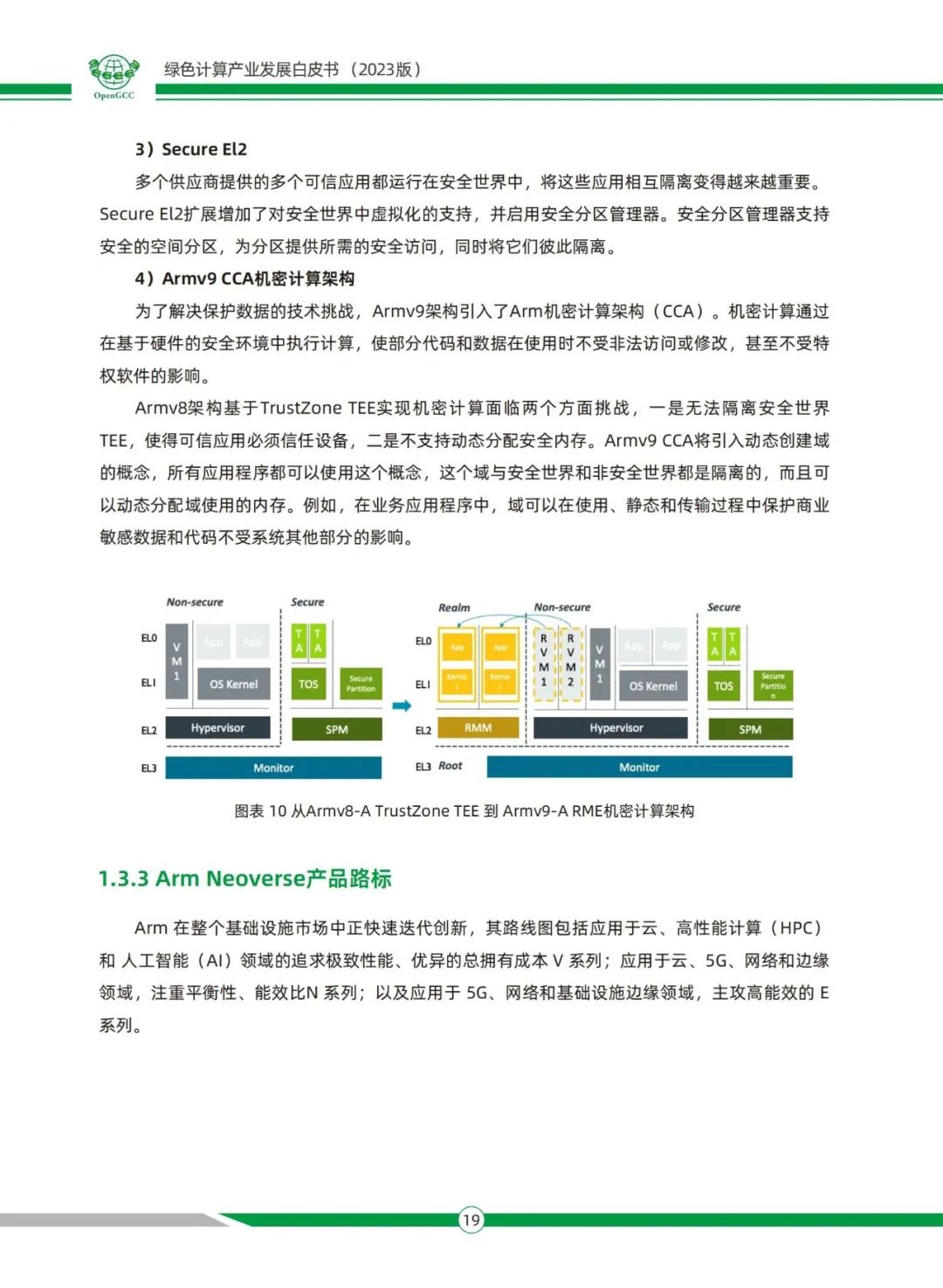
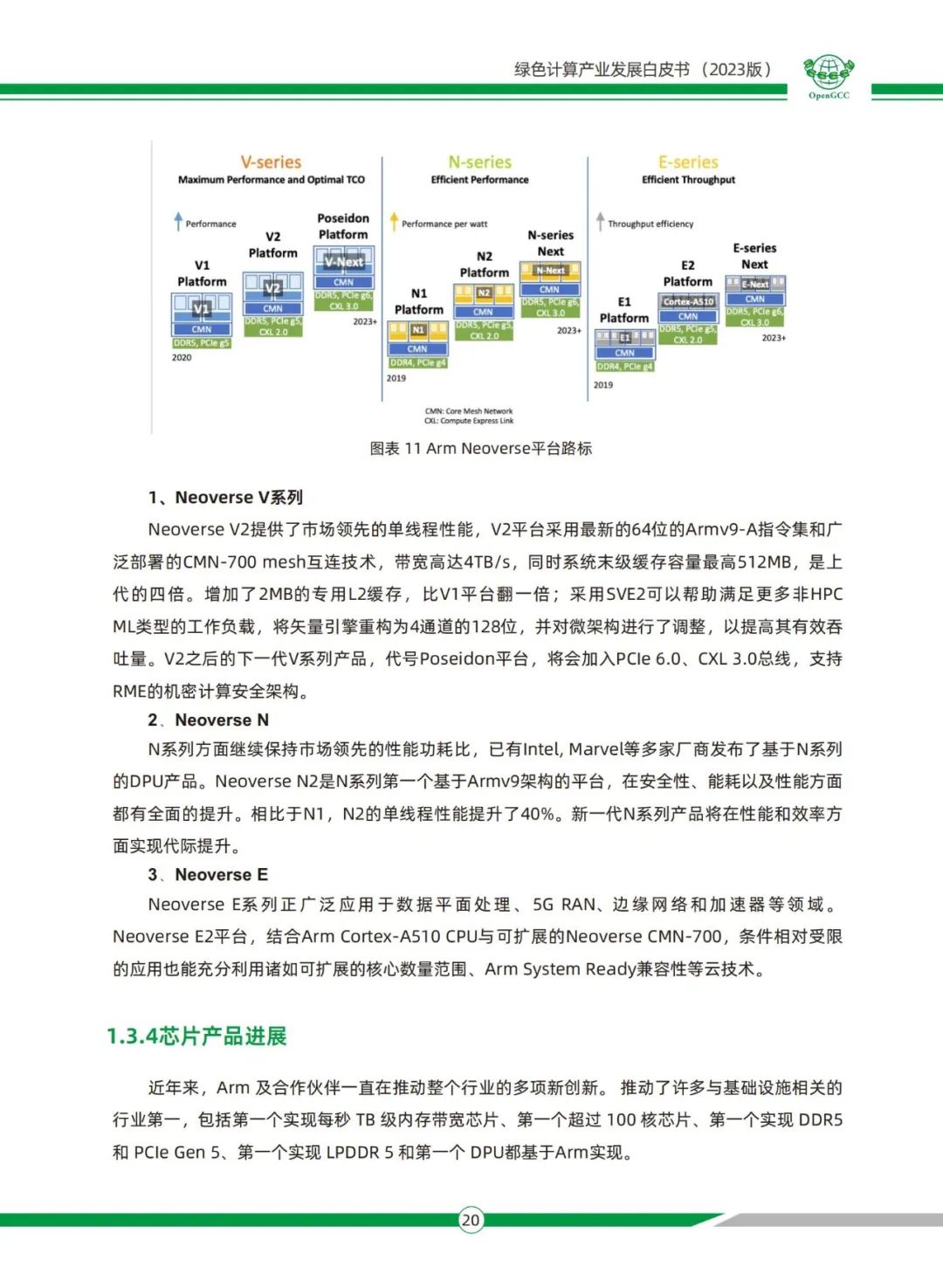
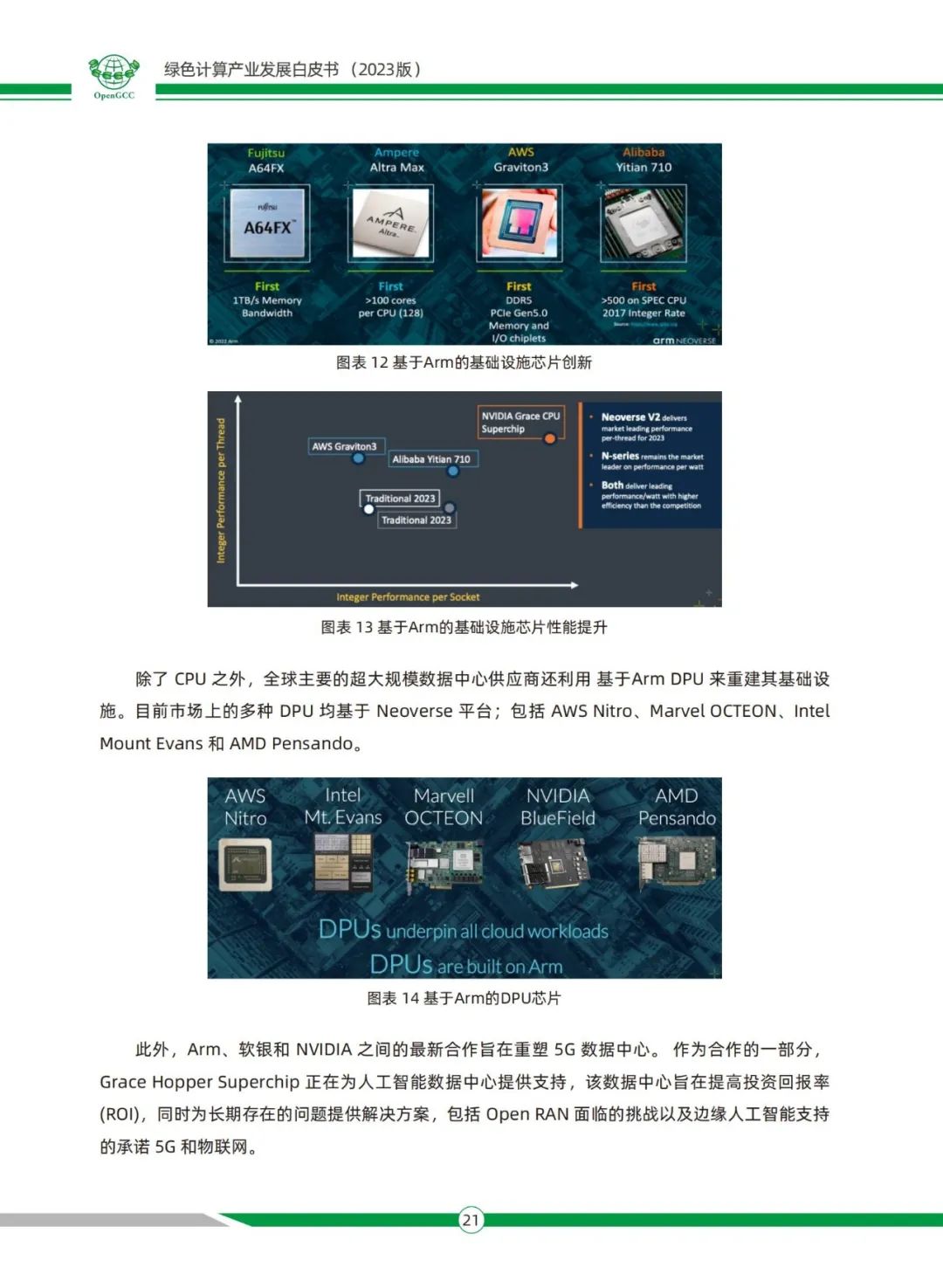
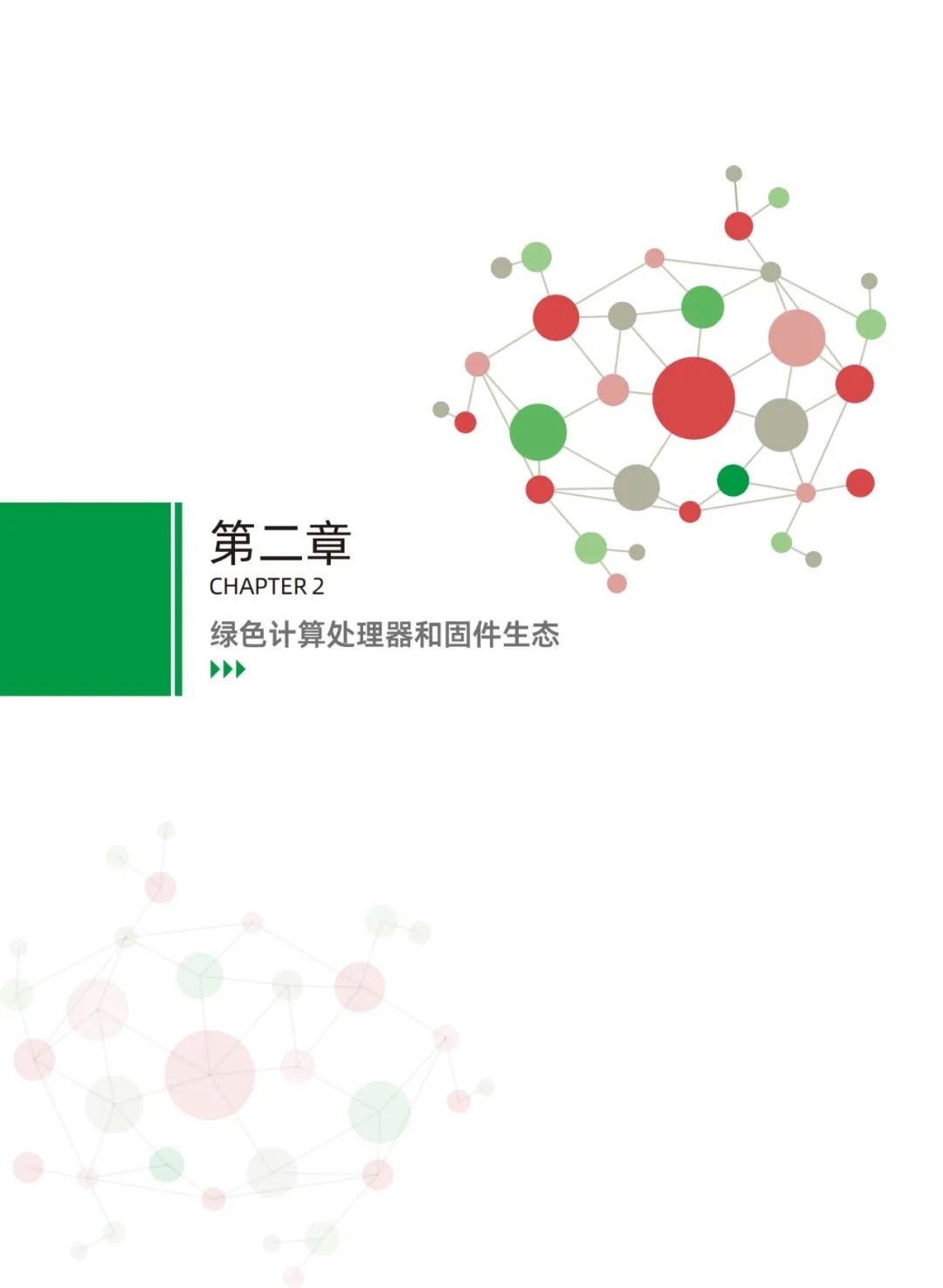
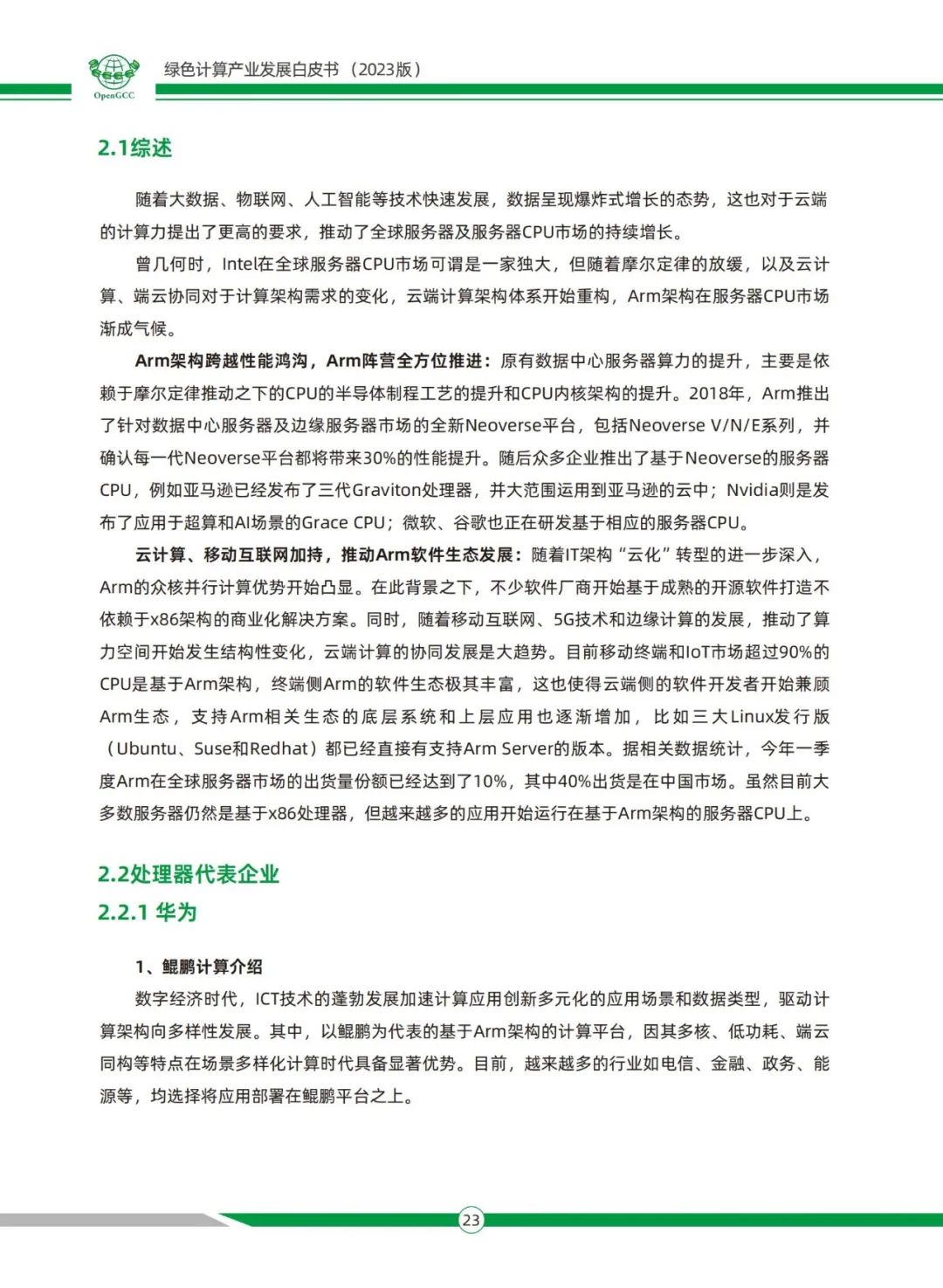
Swipe left and right to see more
3. Research Report on the Development of Green Computing Power in China (2023) and Interpretation PPT
The report defines the connotation of green computing power and establishes the ELII framework for efficient, low-carbon, intelligent, and intensive development of computing power around the levels of computing power production, operation, management, and application.
The report estimates that in 2022, the development of green computing power saved 19.494 billion kilowatt-hours of electricity, equivalent to half a year’s electricity consumption of Hohhot; it reduced carbon dioxide emissions by 16.34 million tons, equivalent to the total carbon emissions of 15 coal-fired power plants.
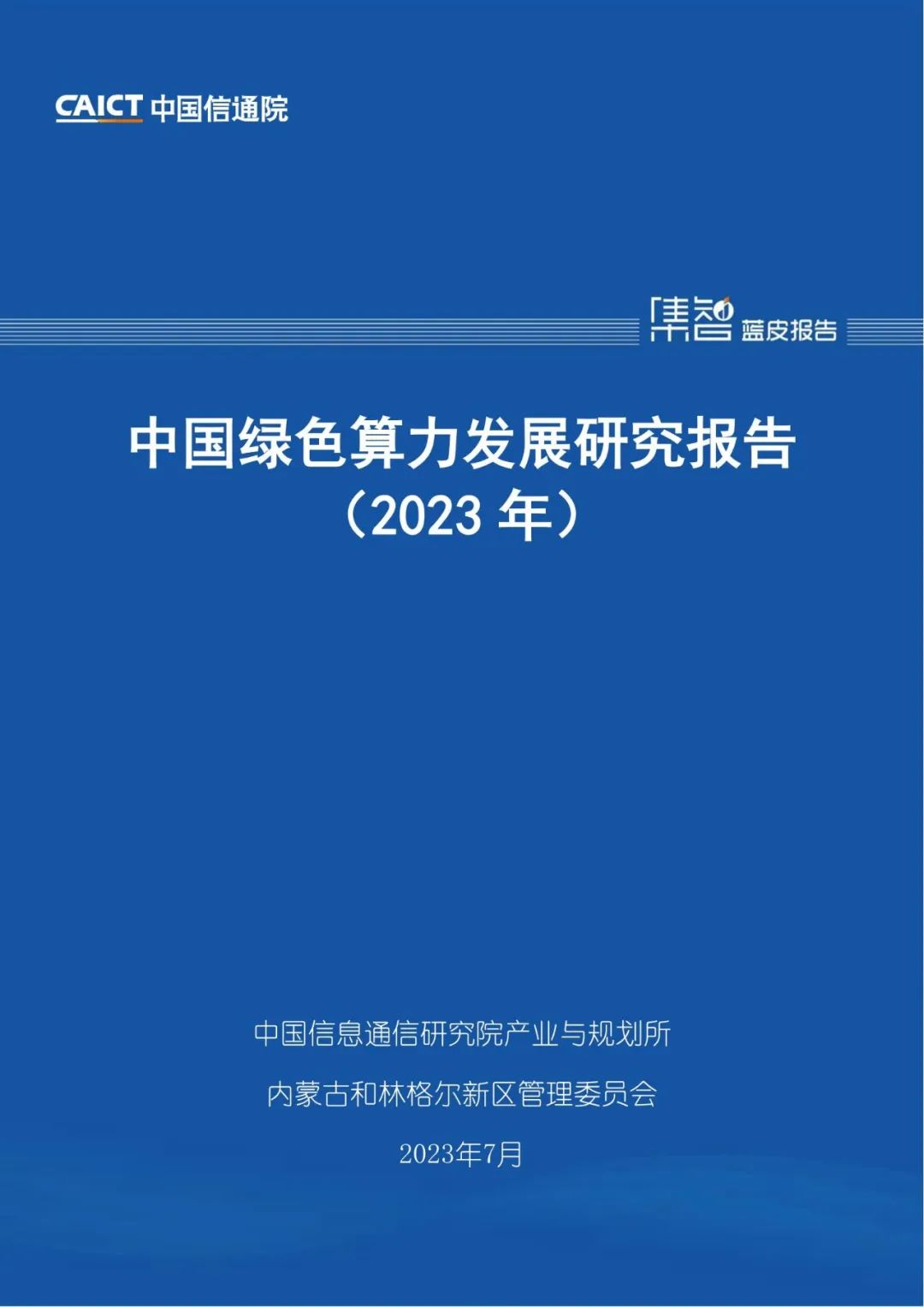
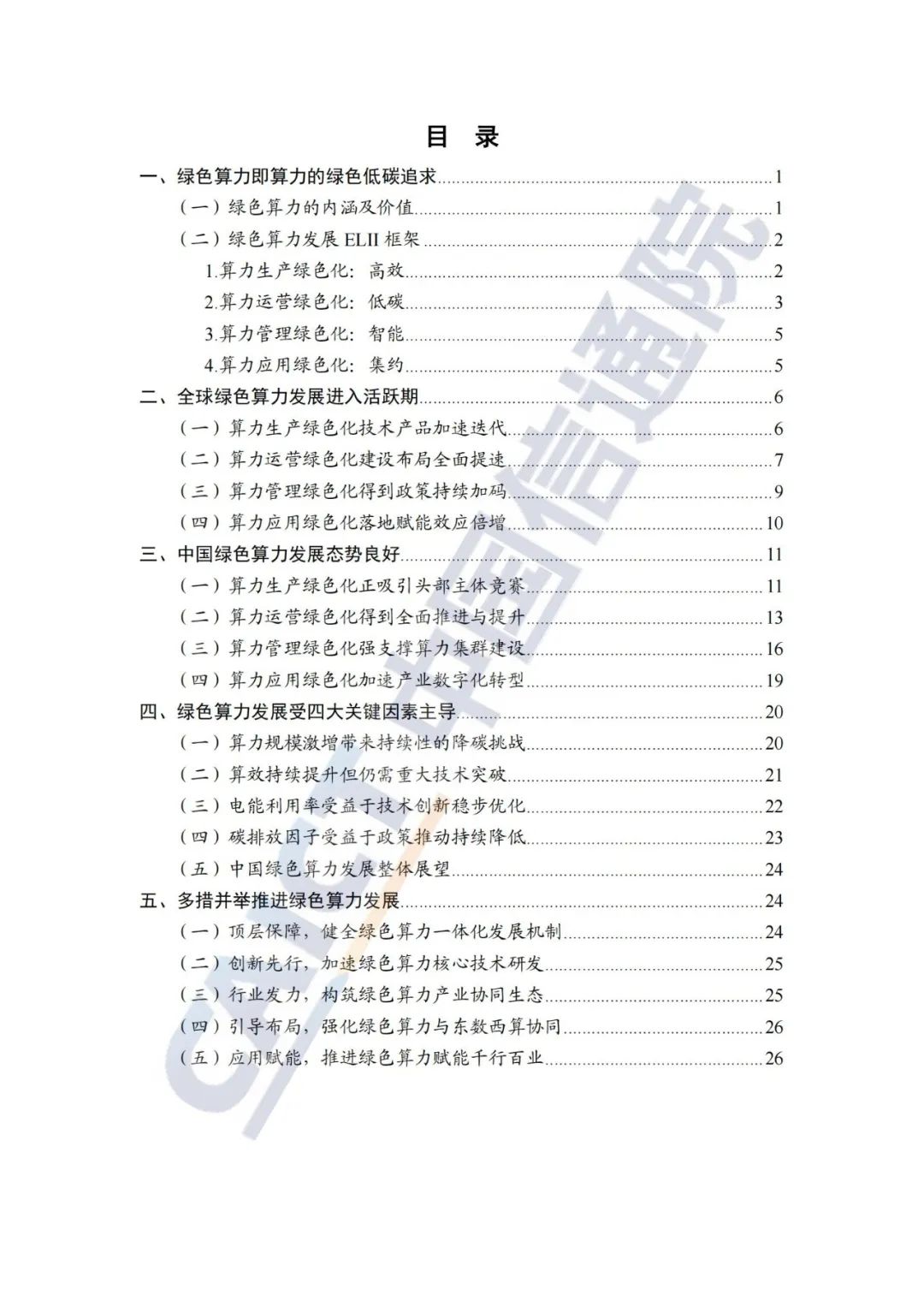
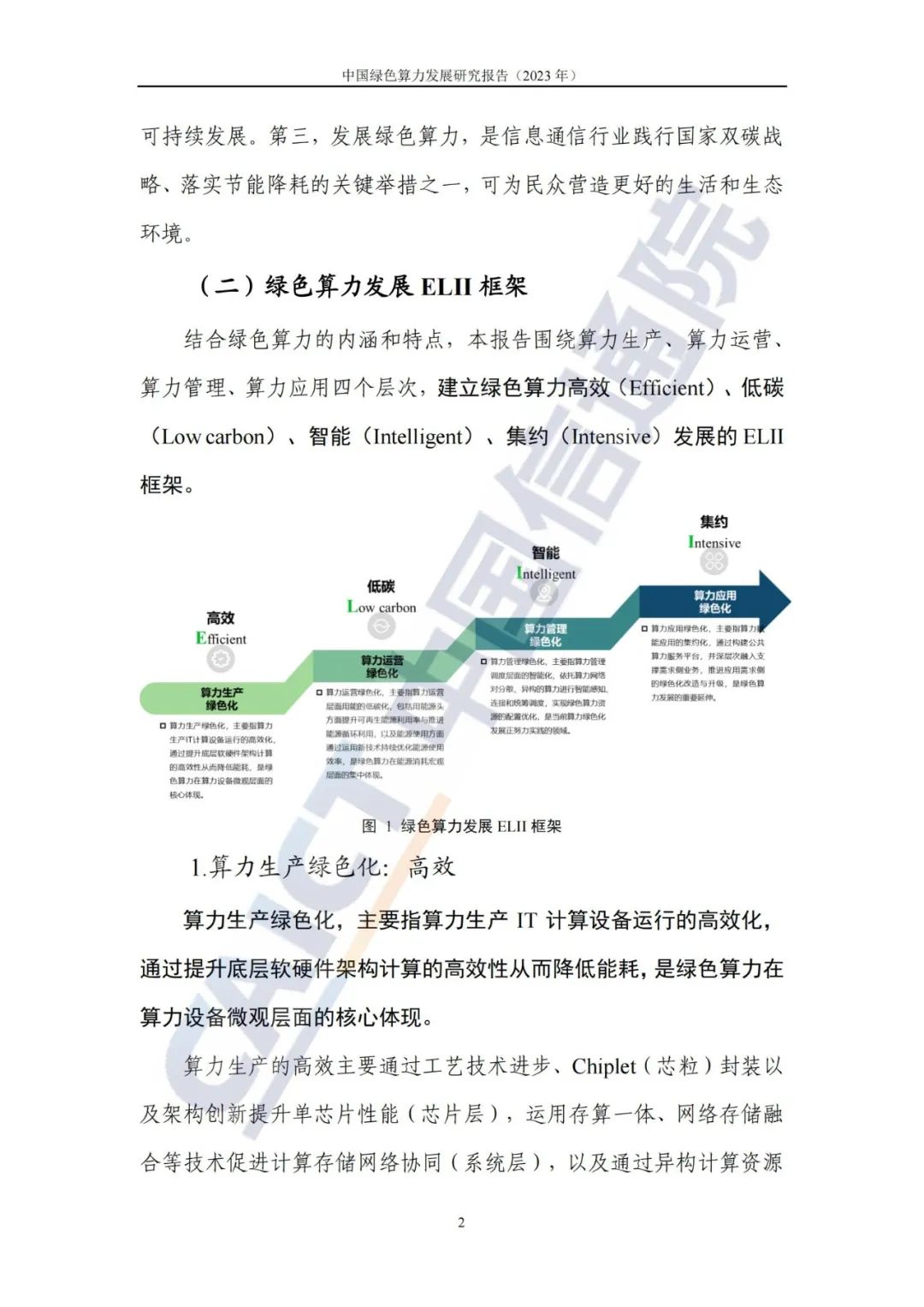
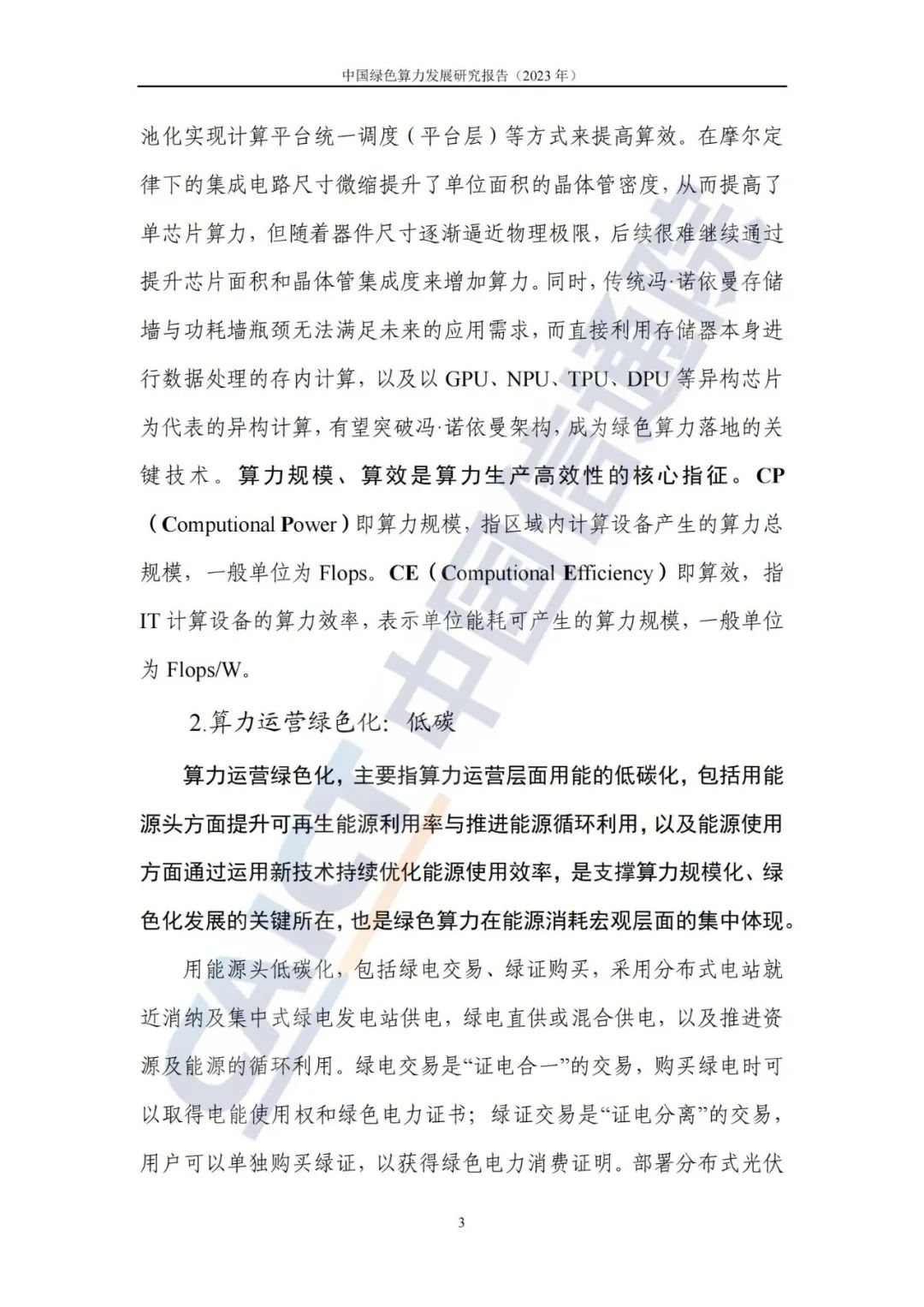
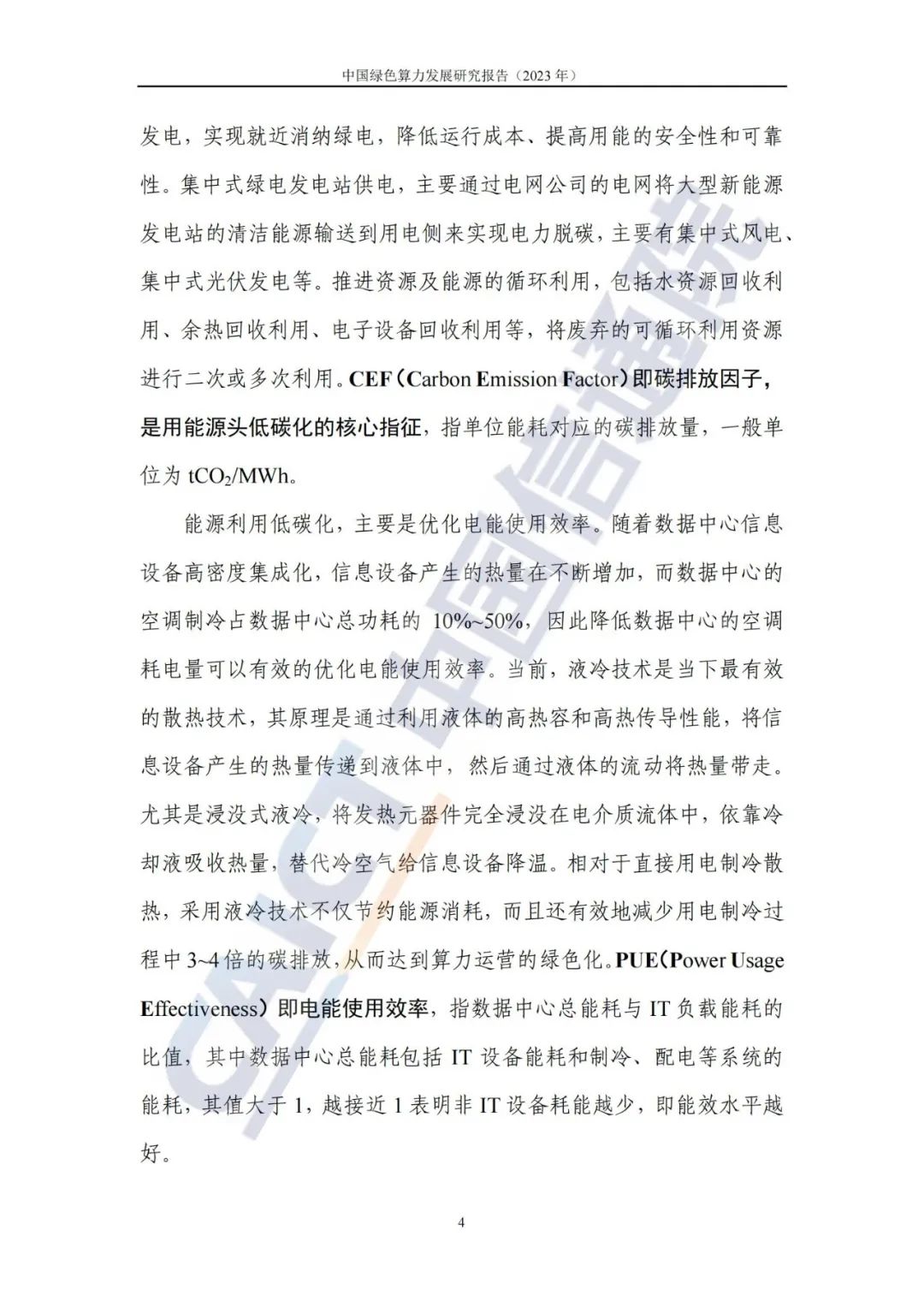
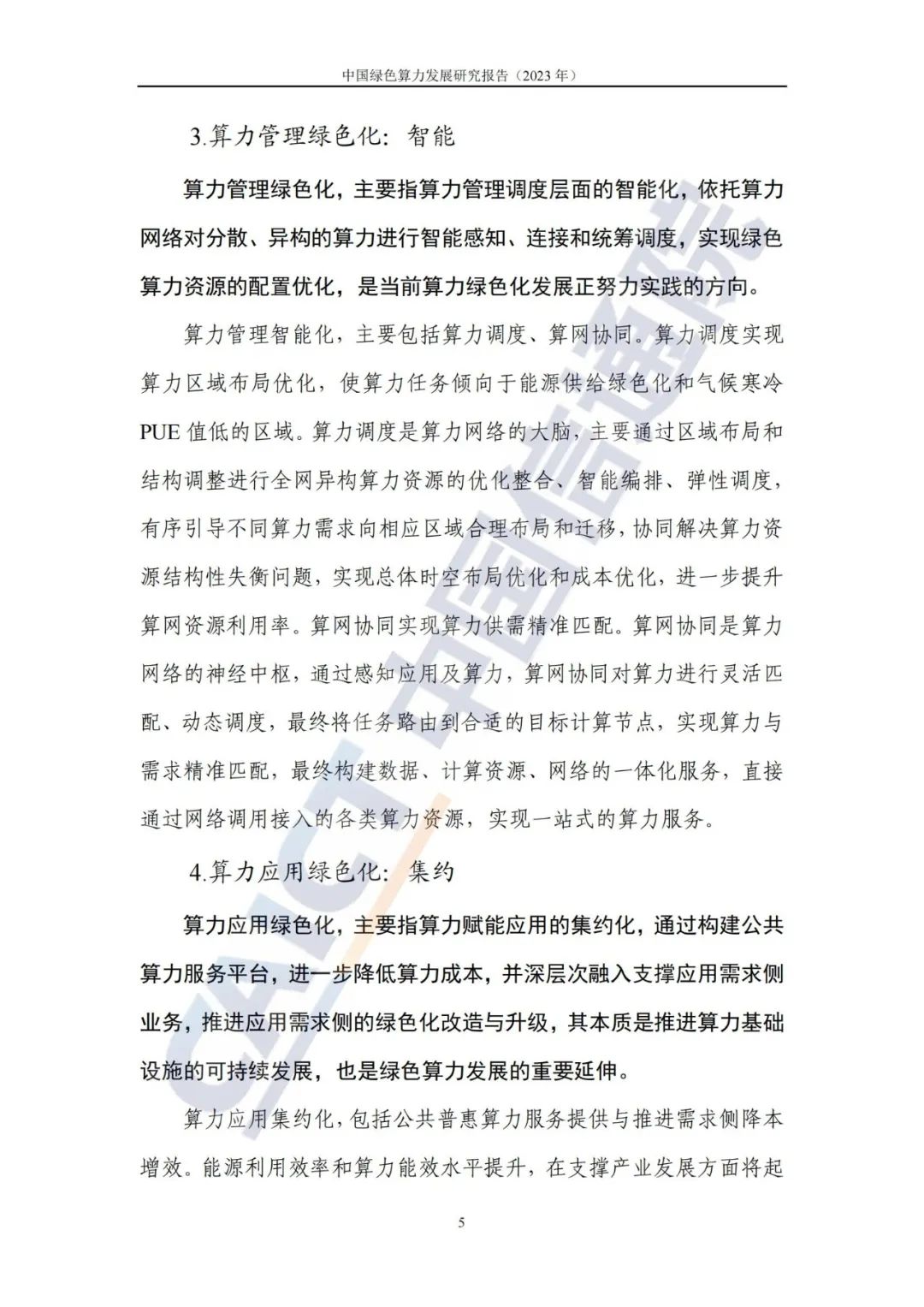
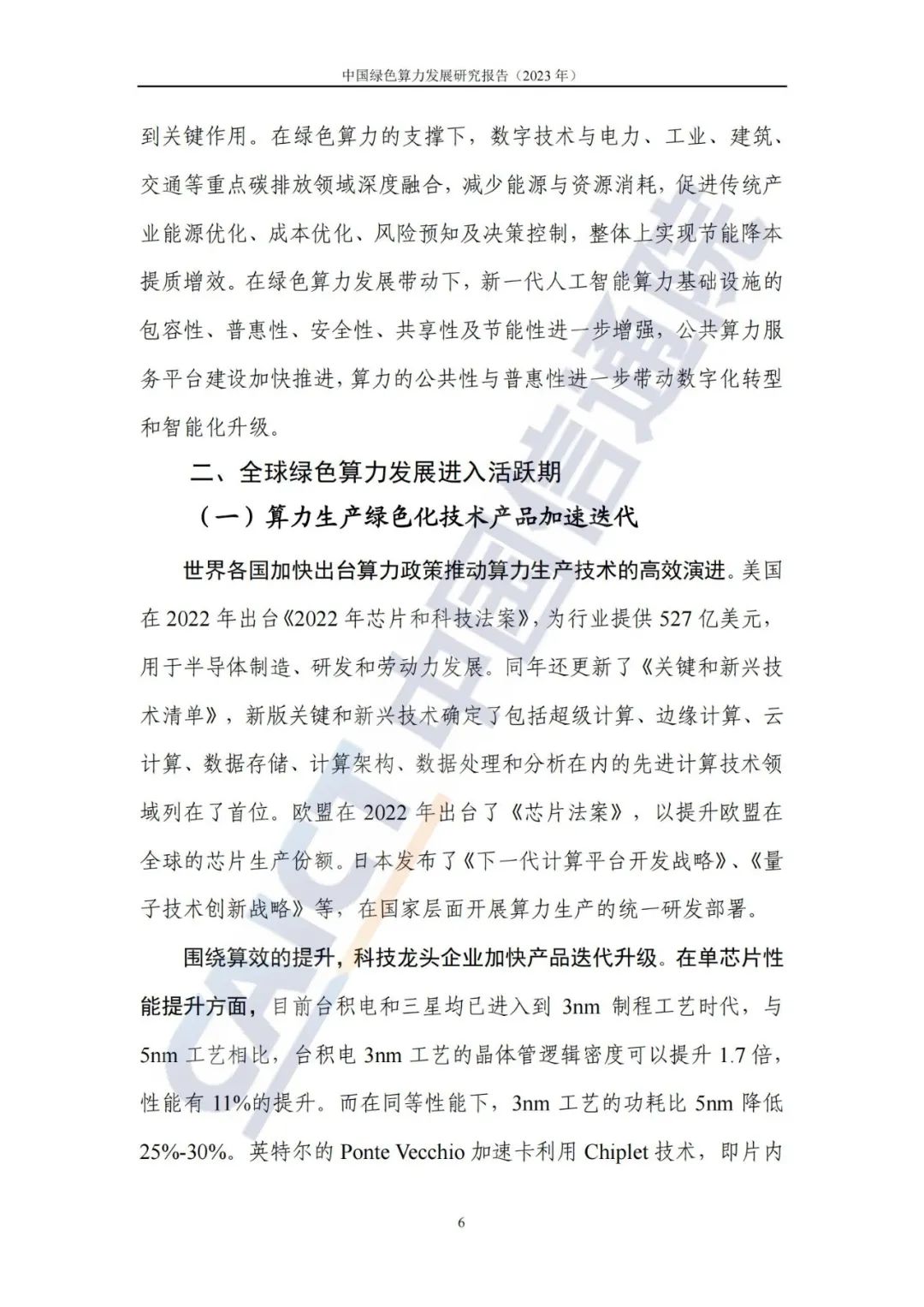
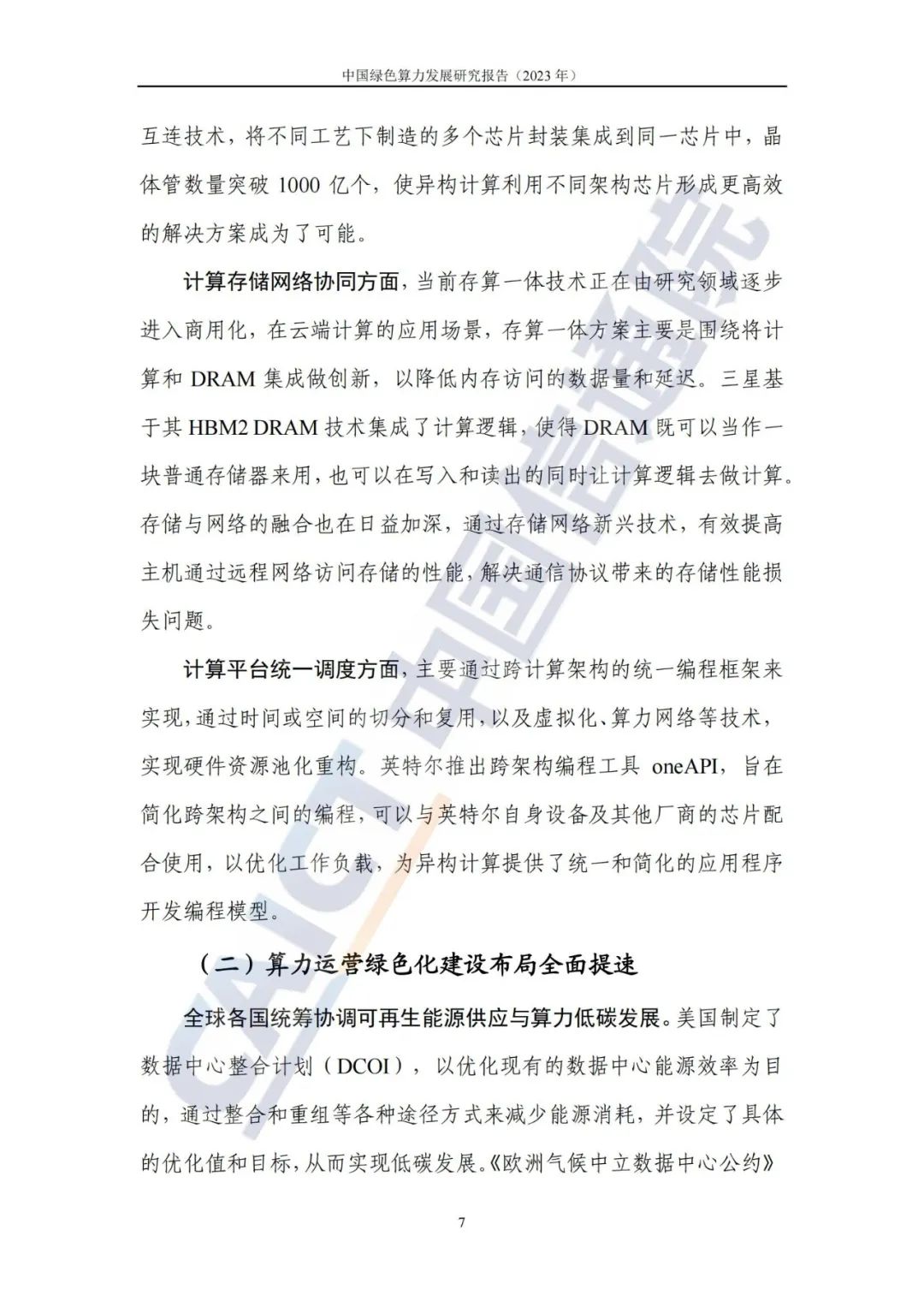
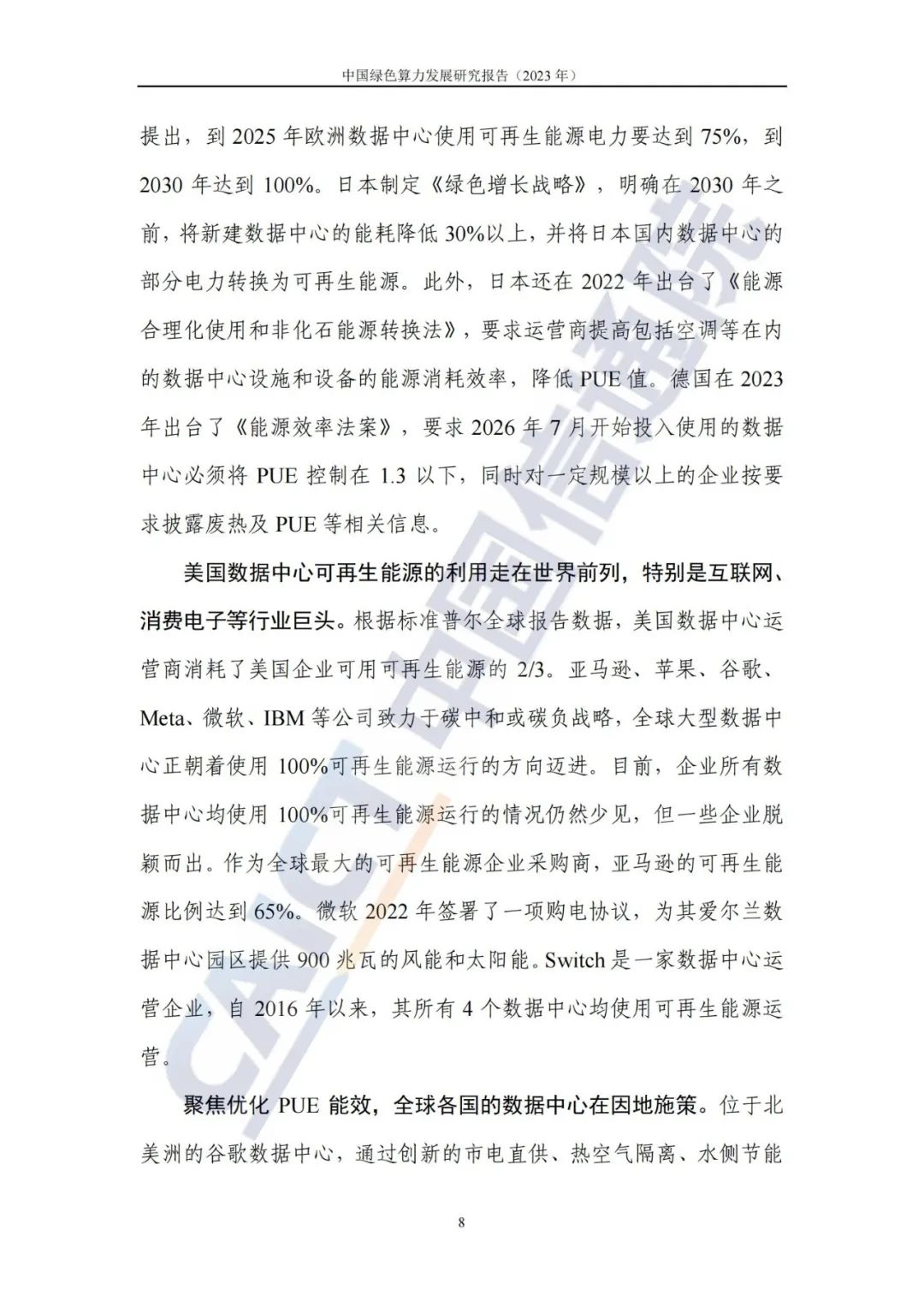
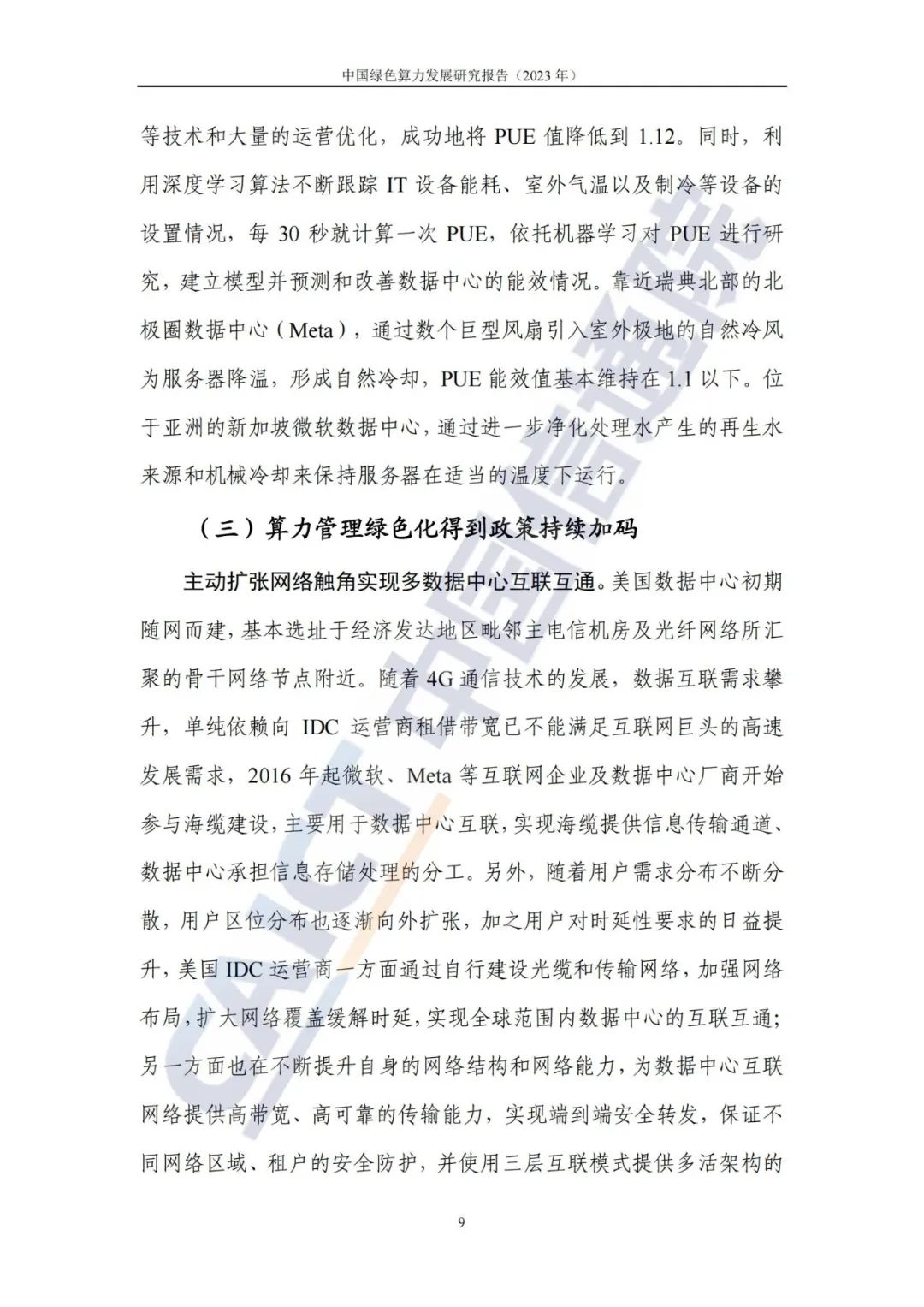
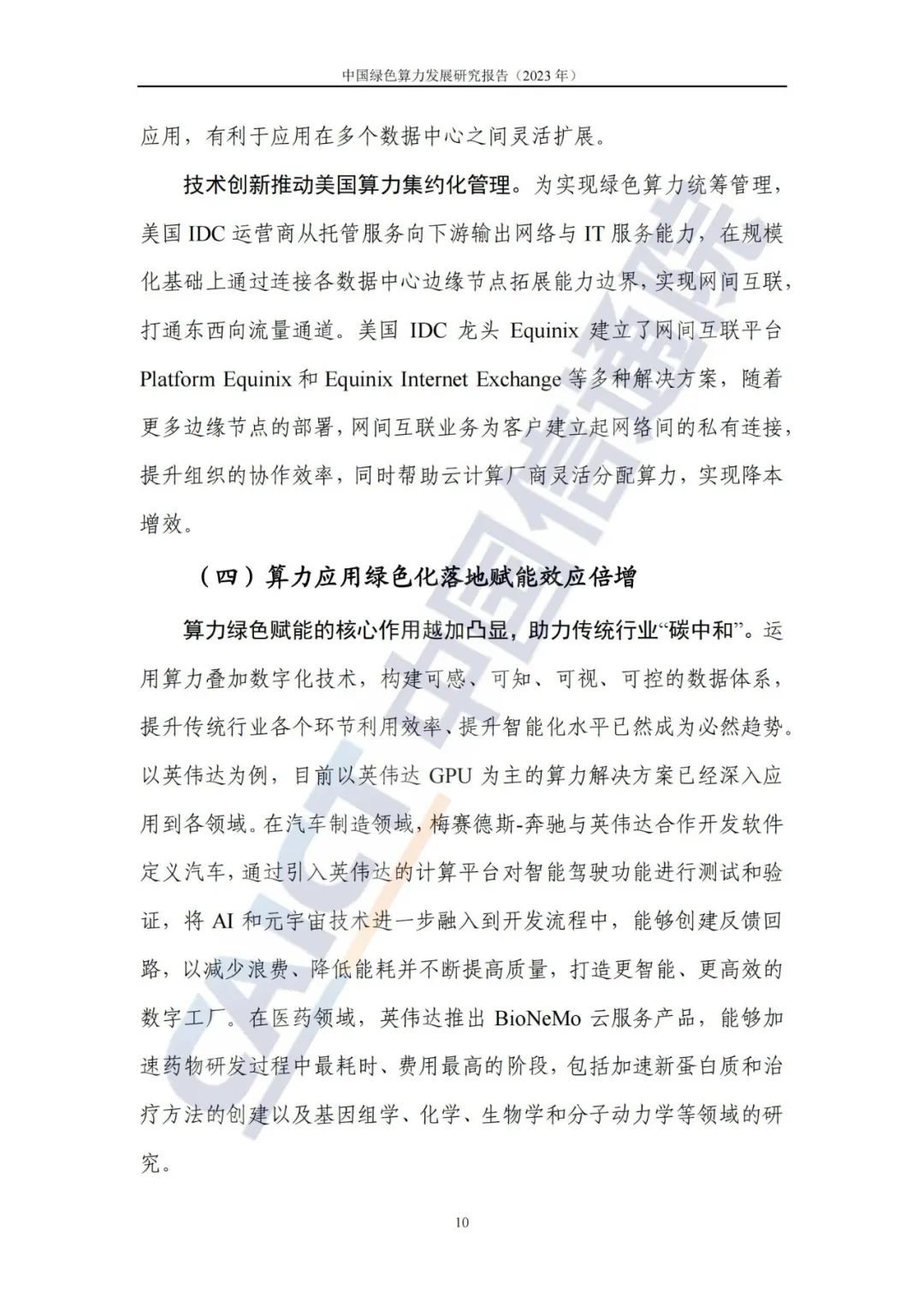
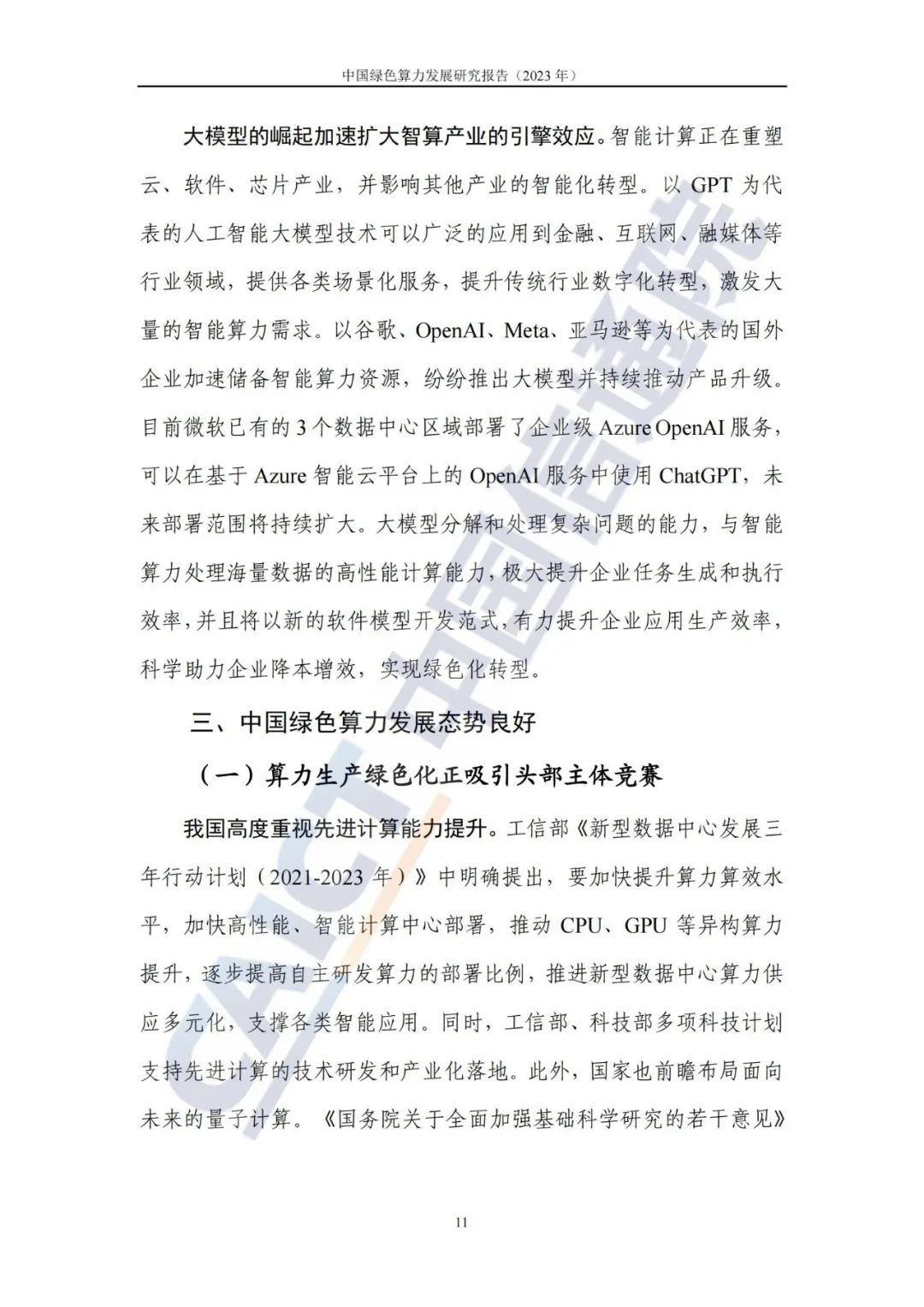
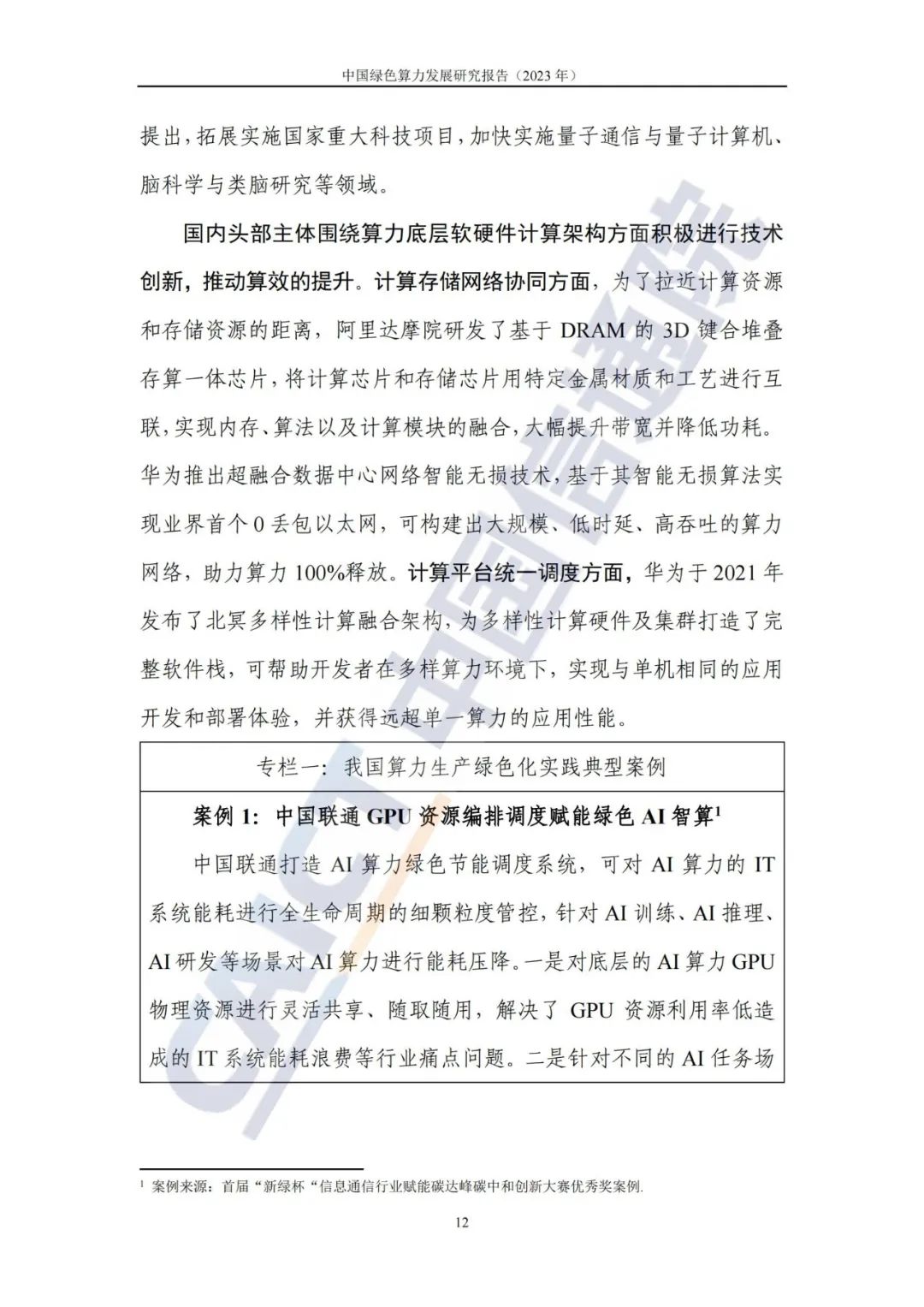
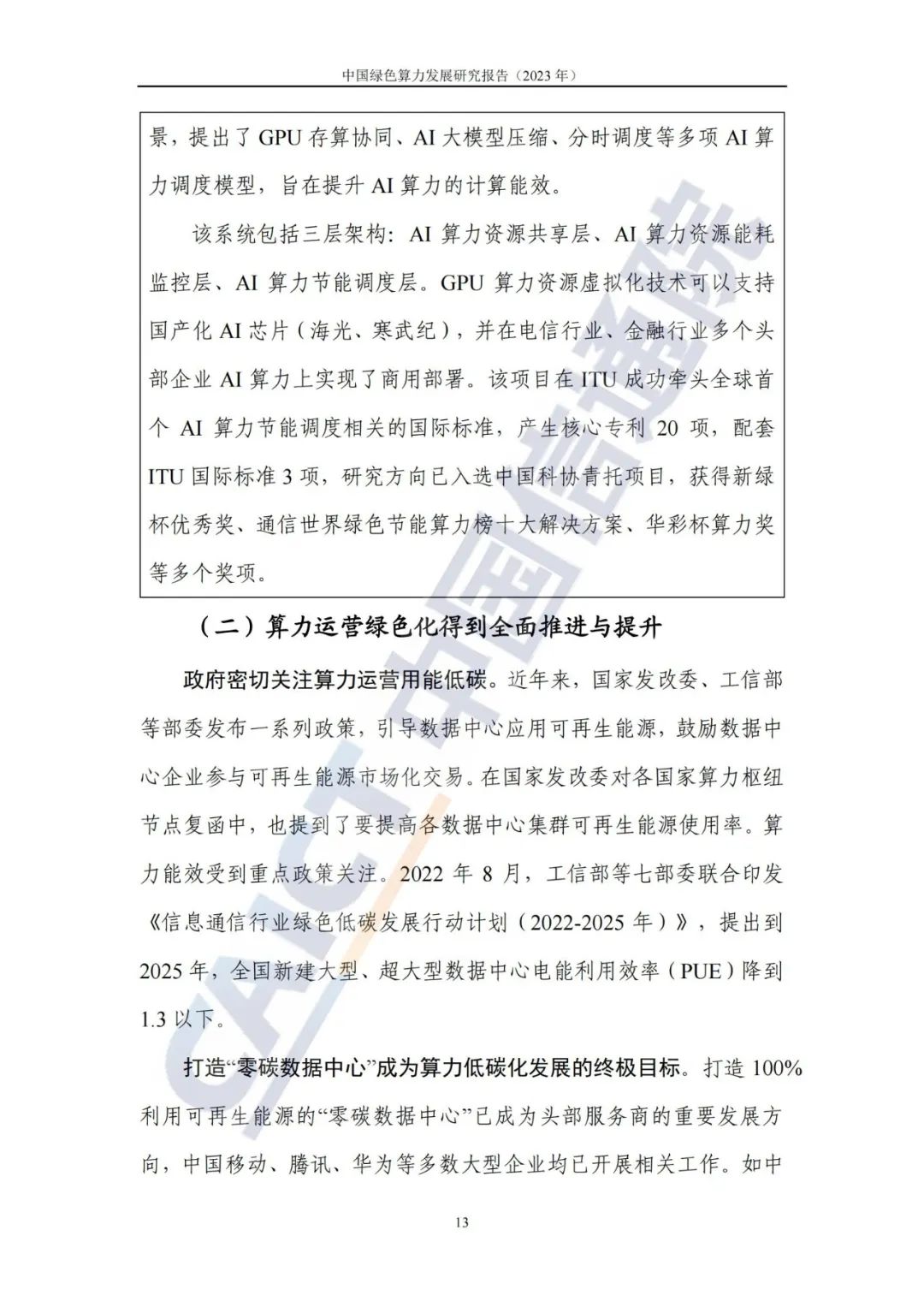
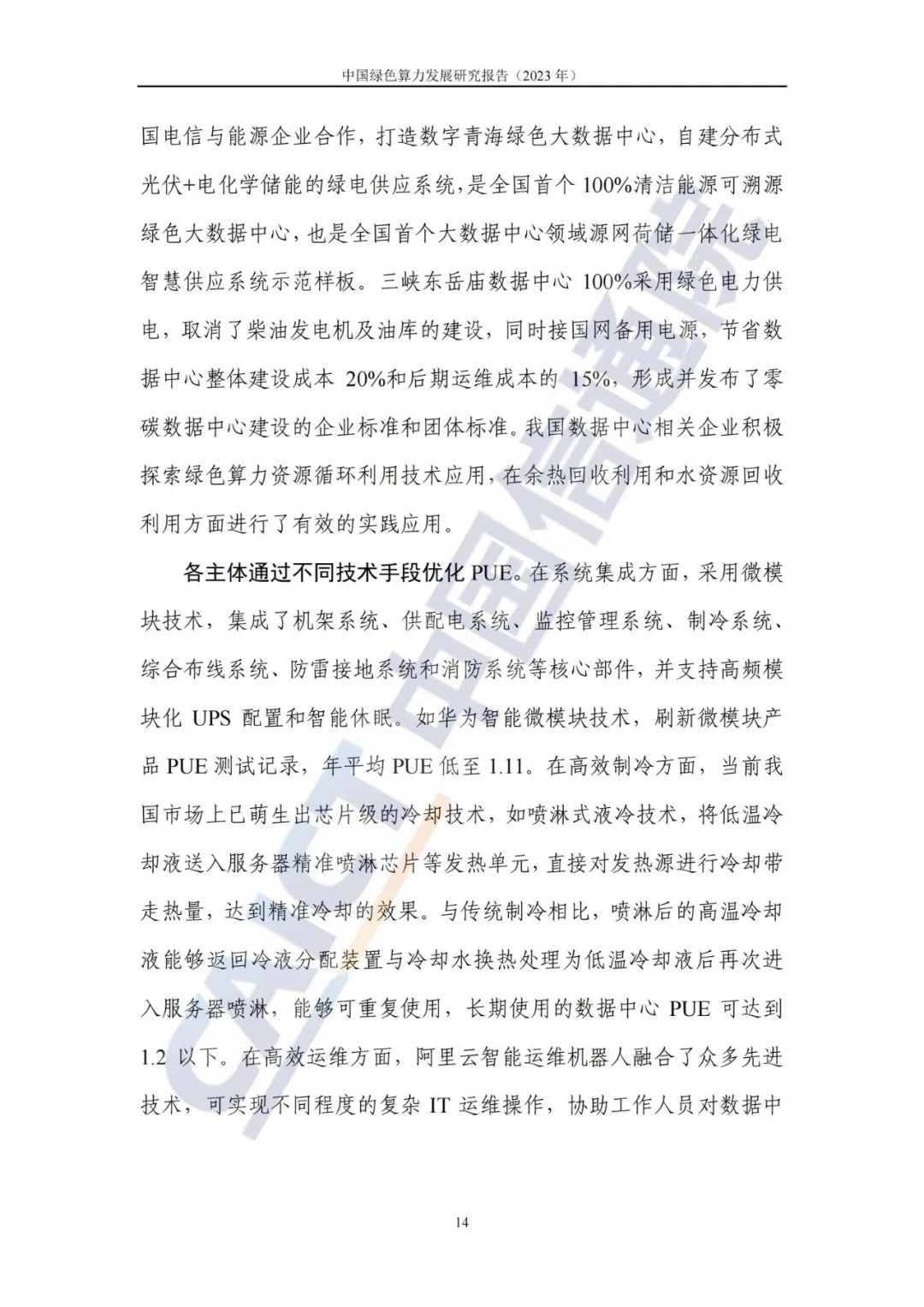
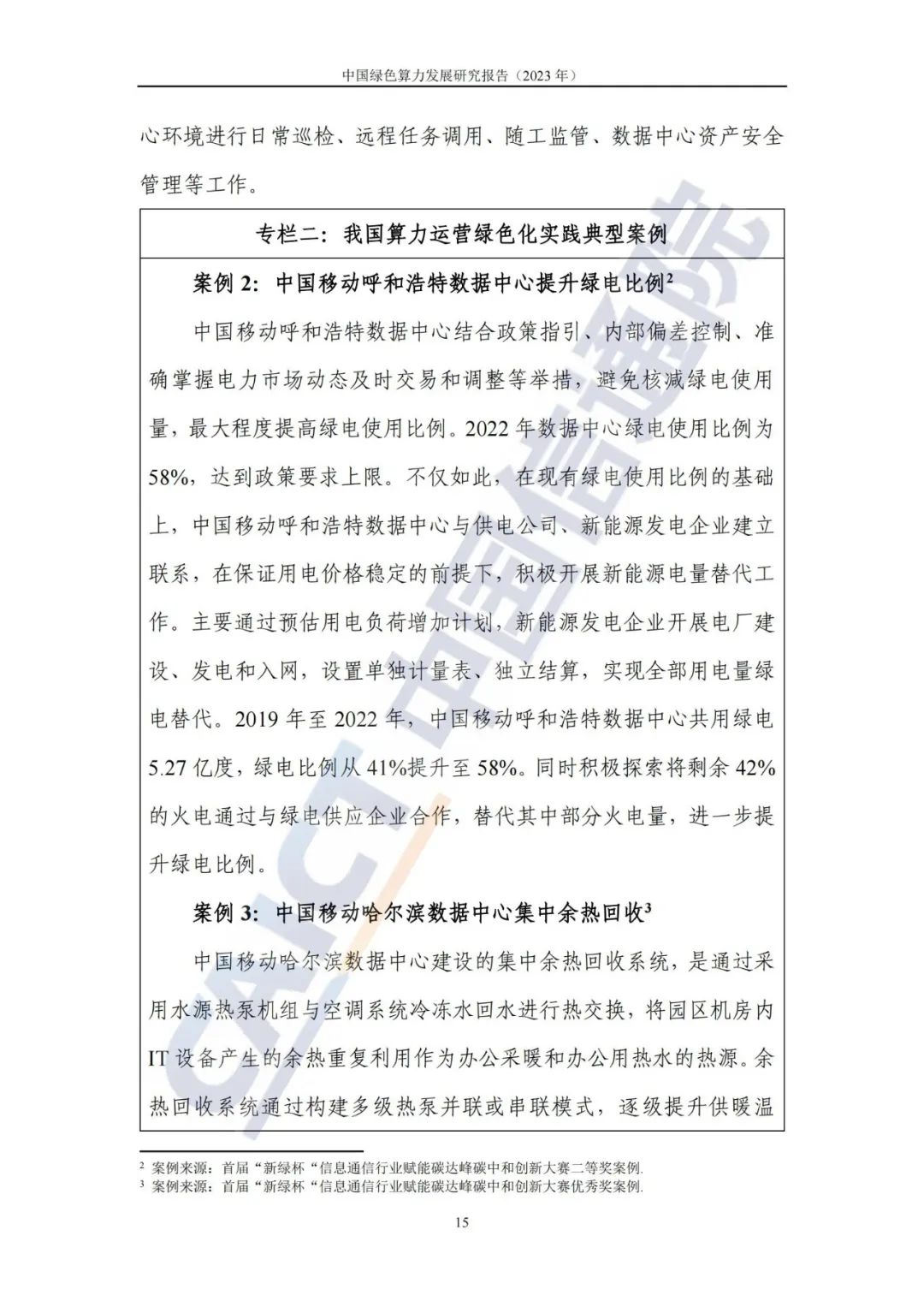
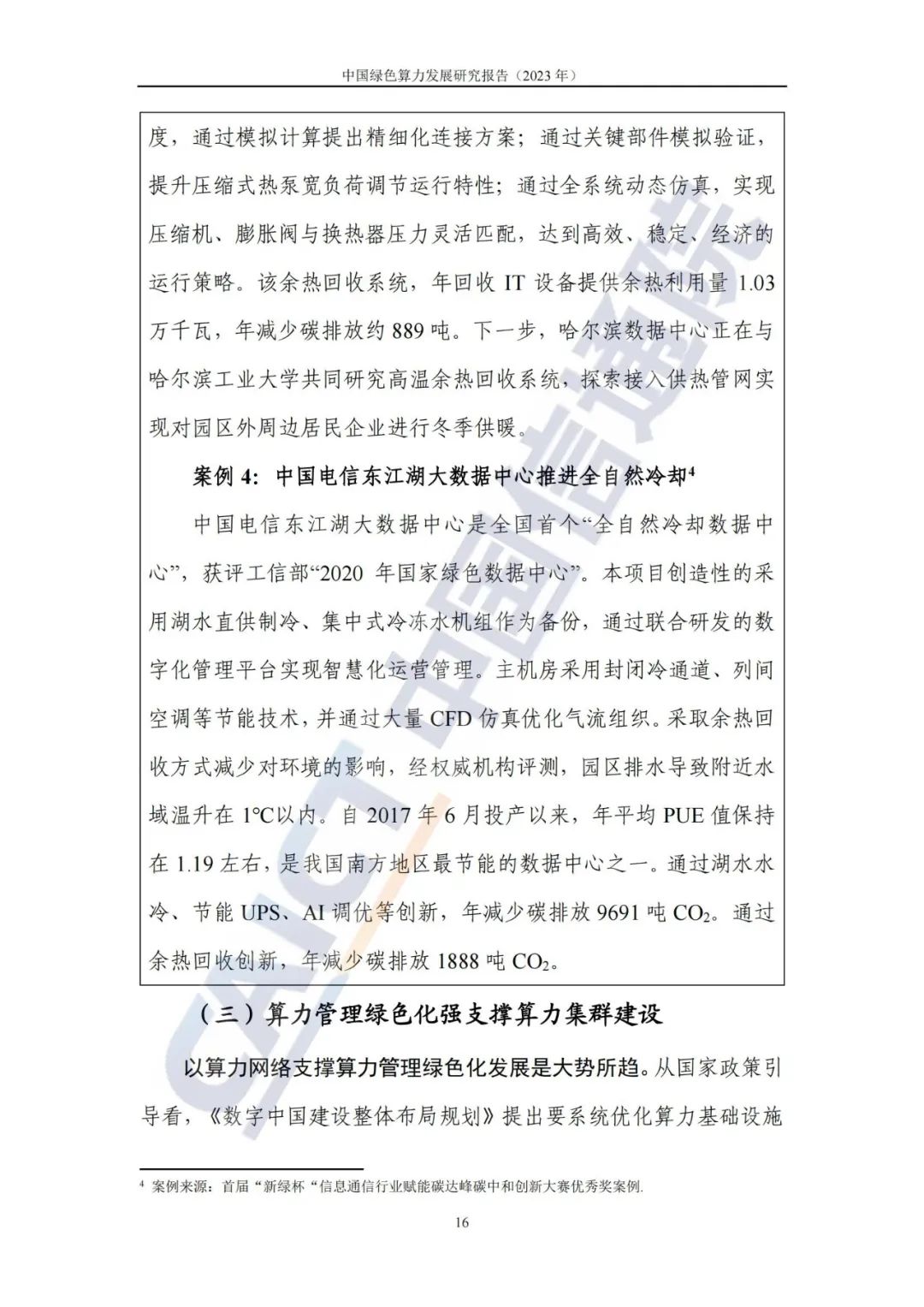
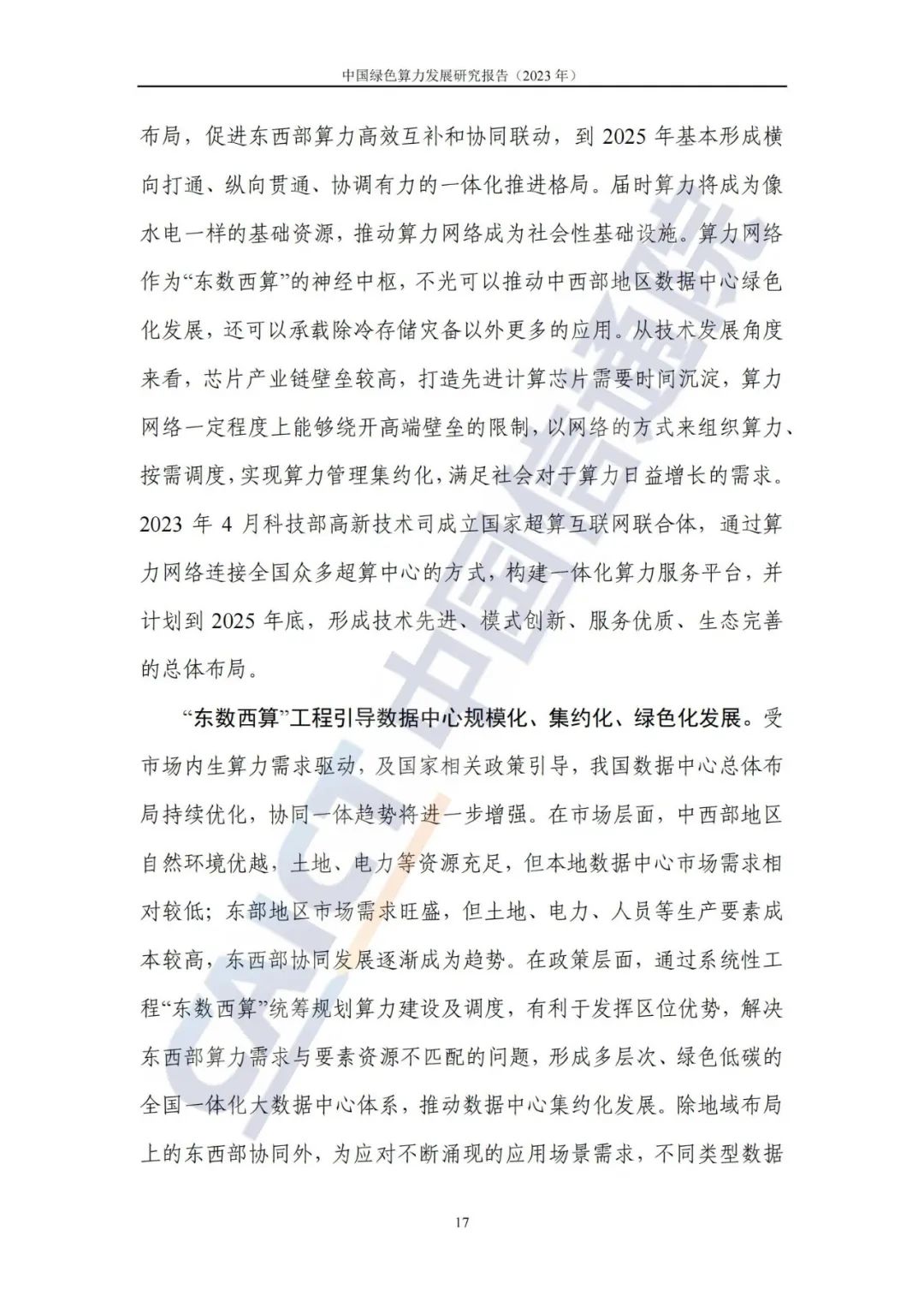
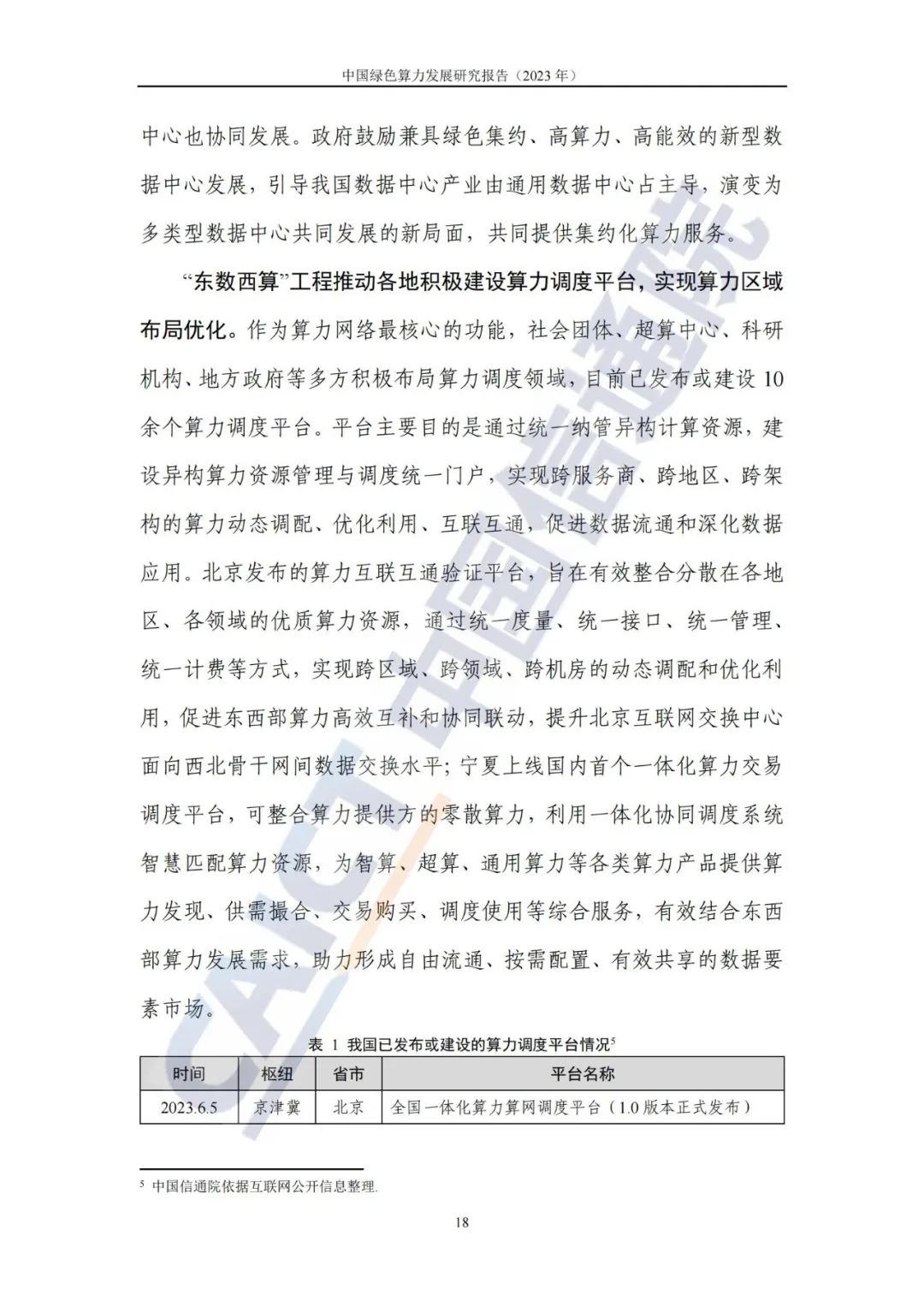
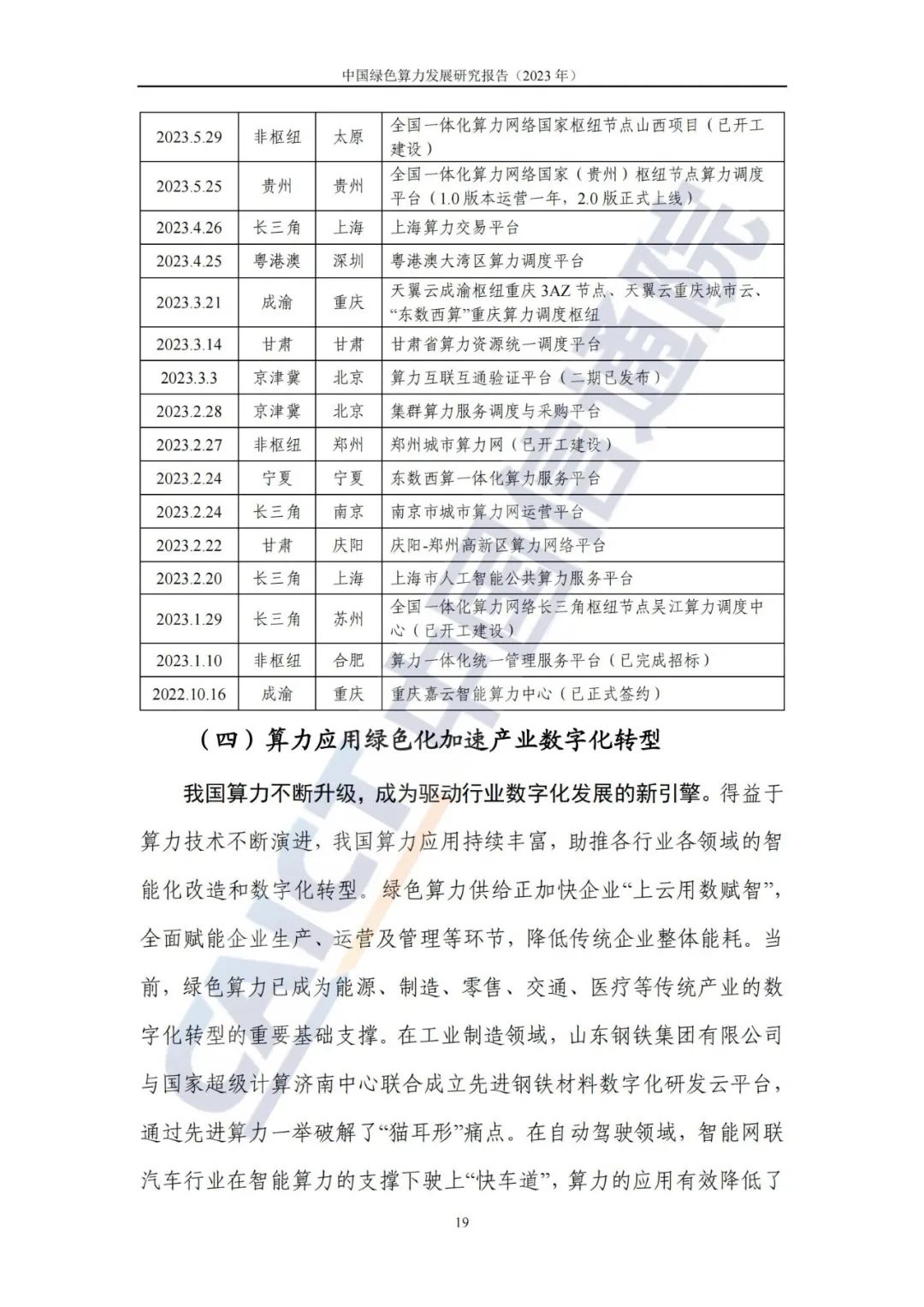
Swipe left and right to see more
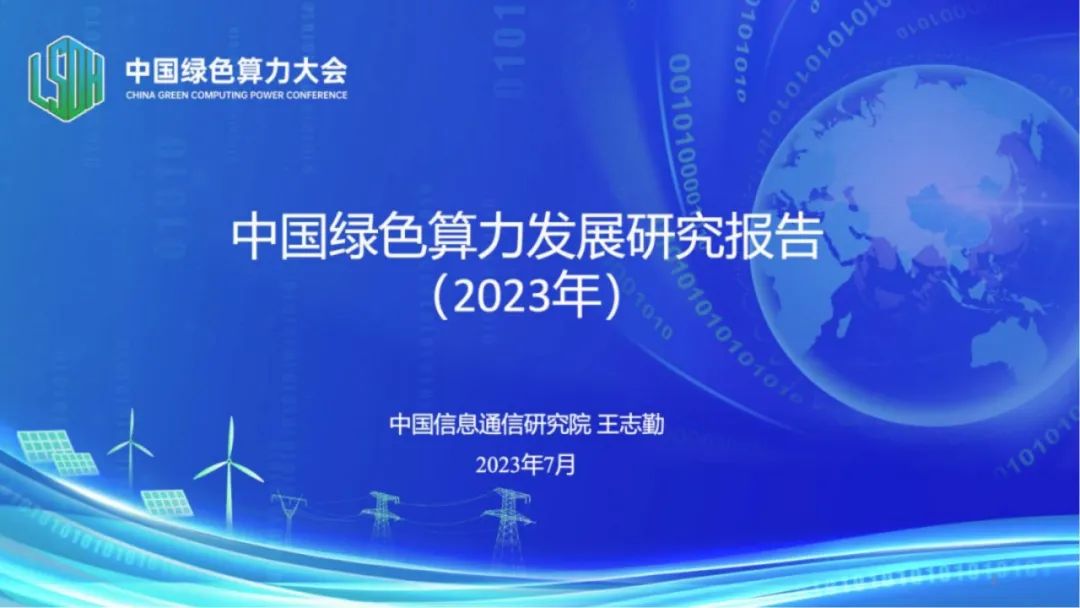
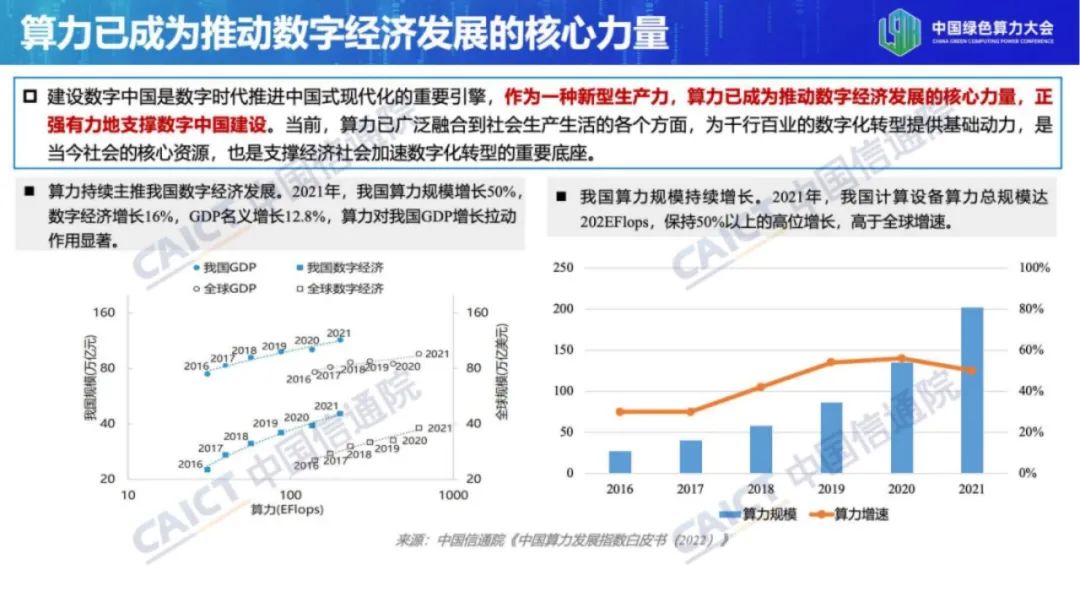
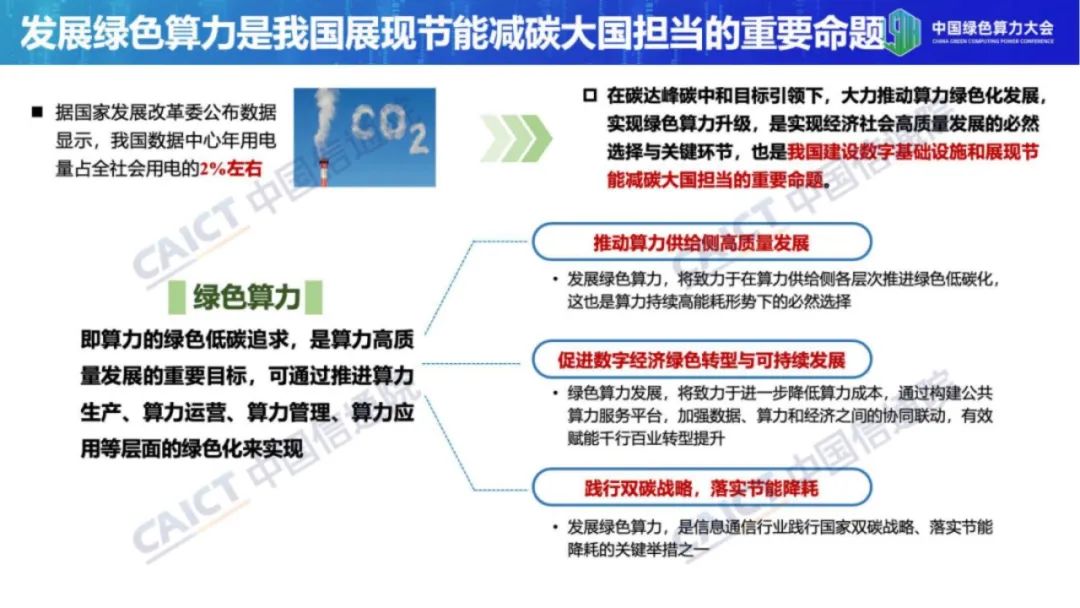
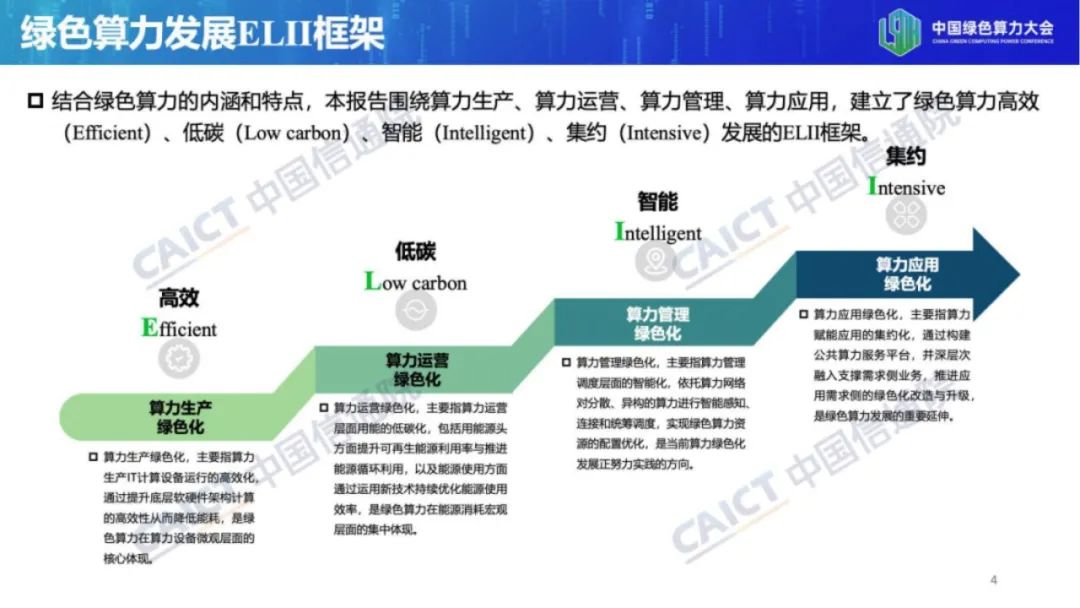
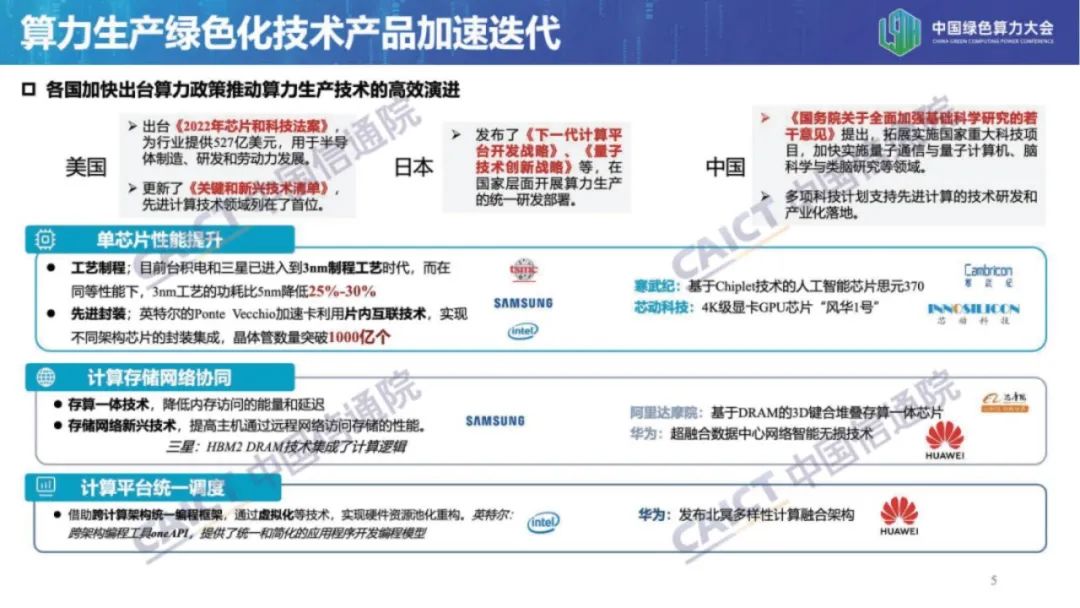
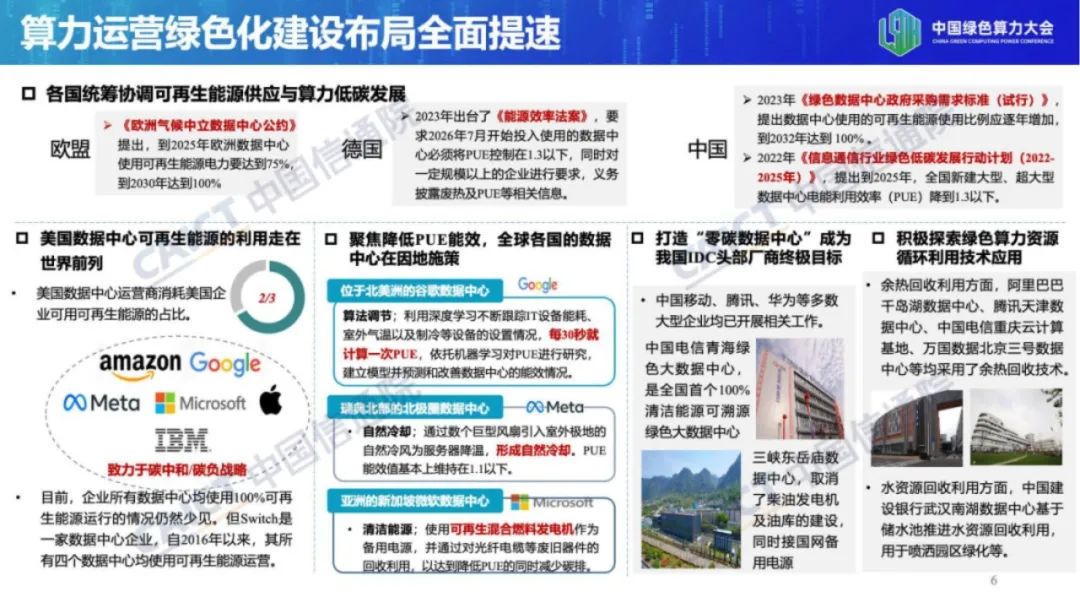
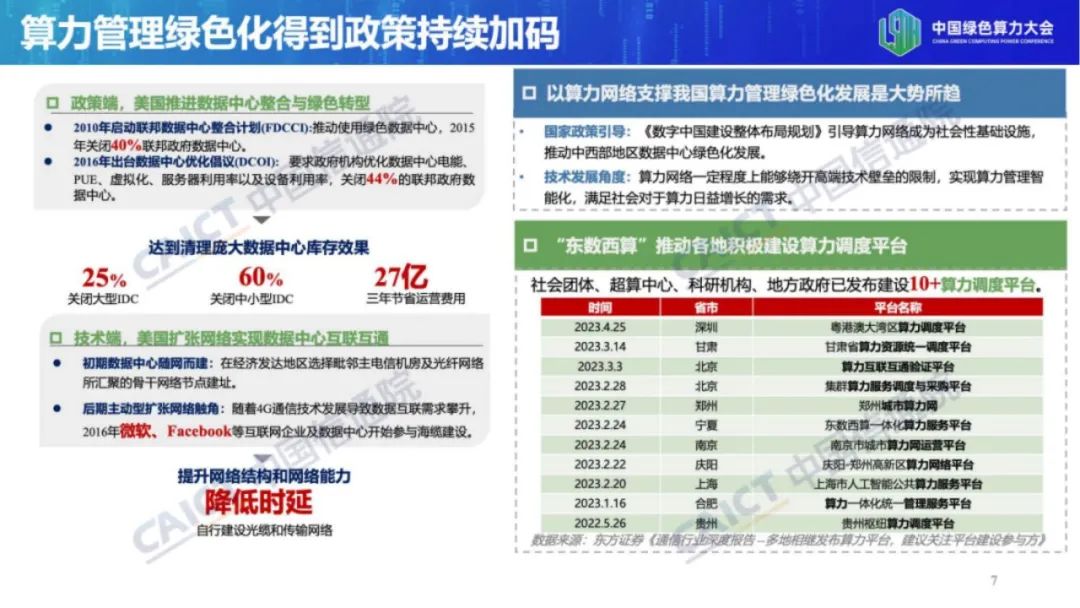
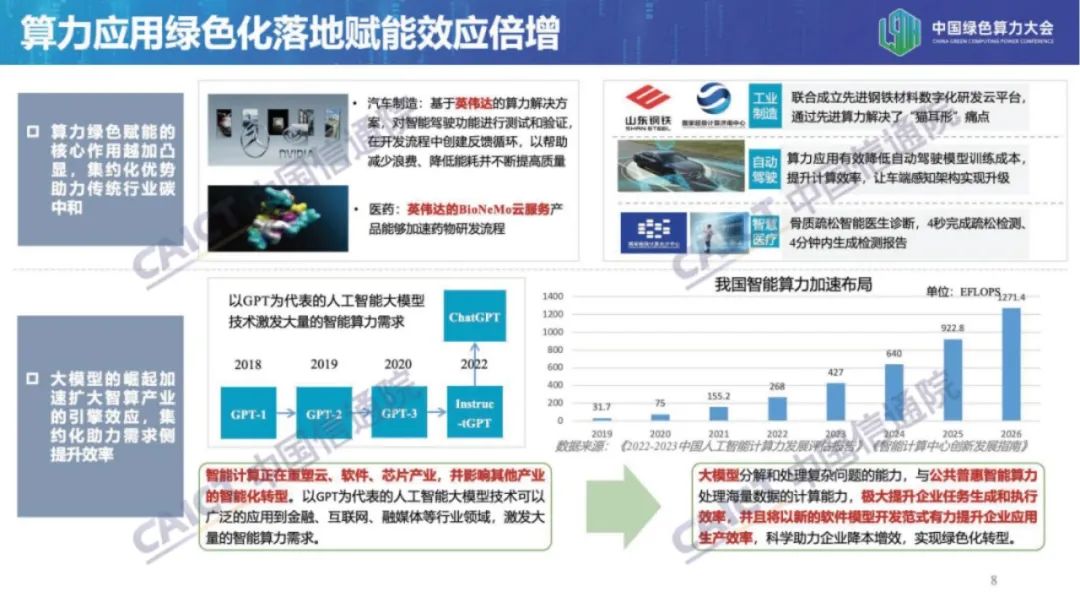
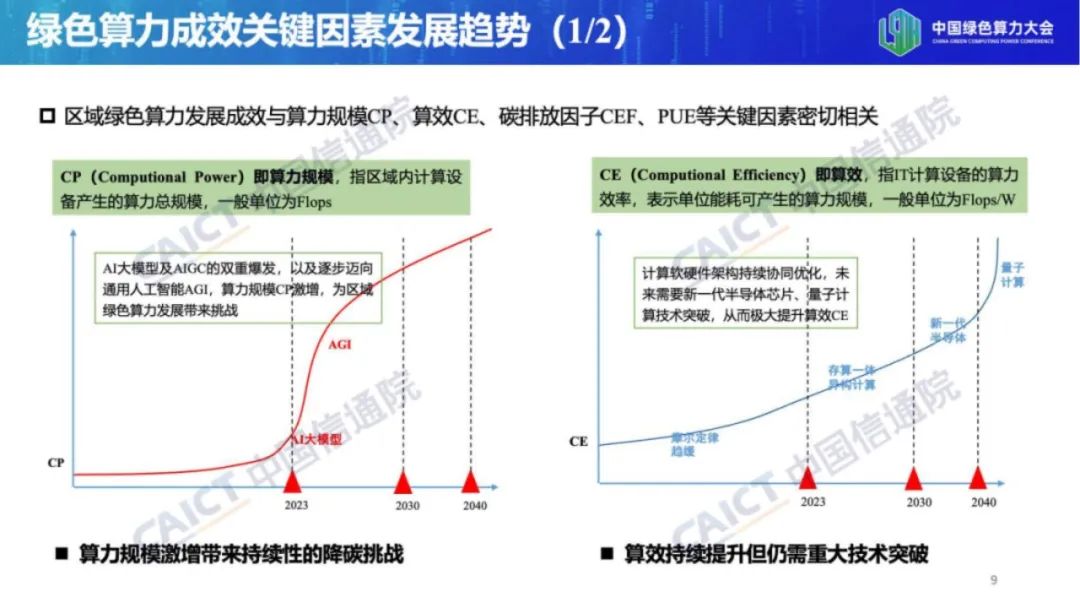
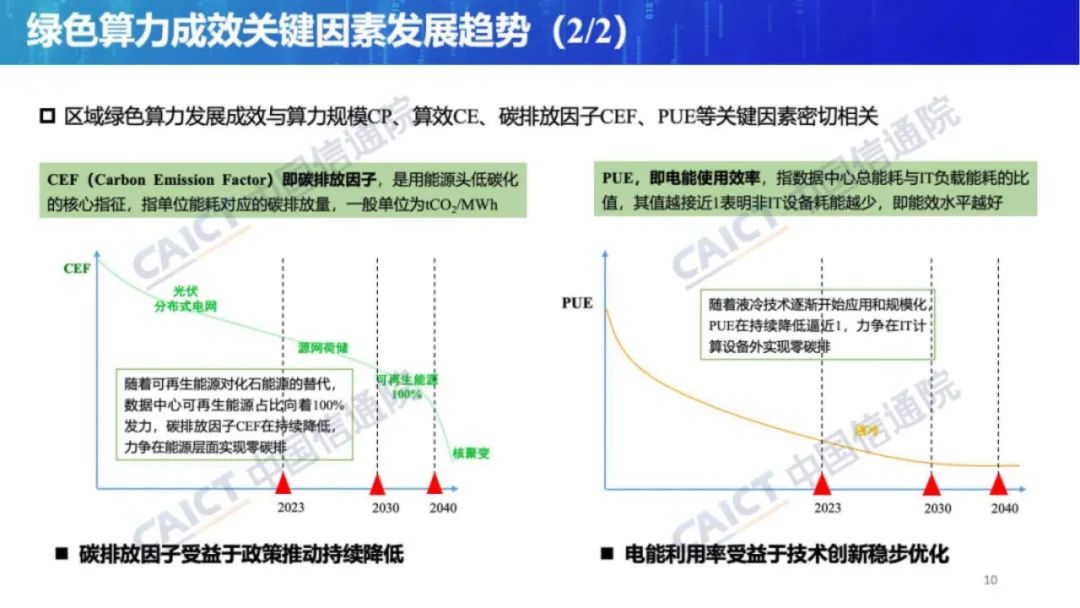
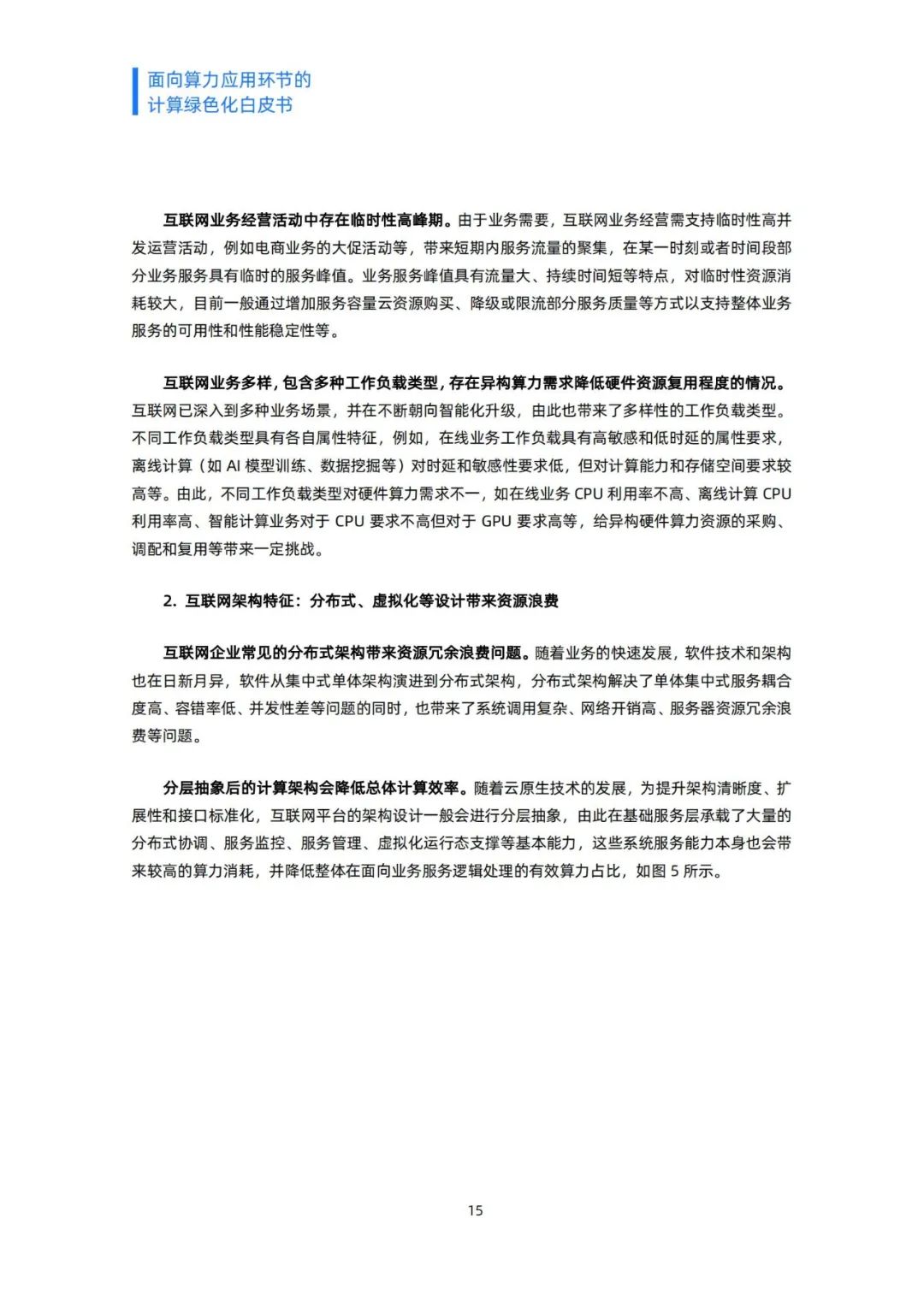
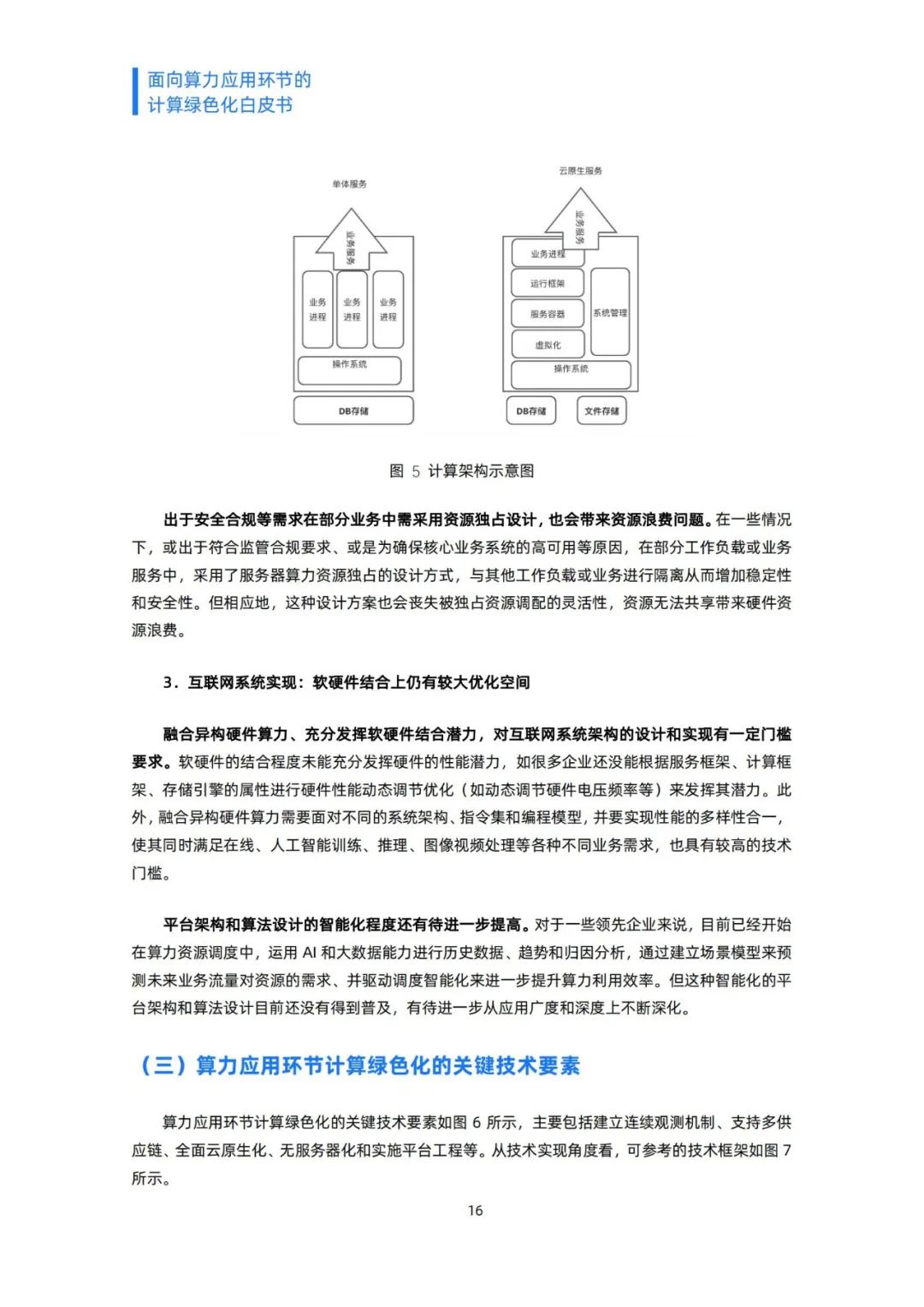
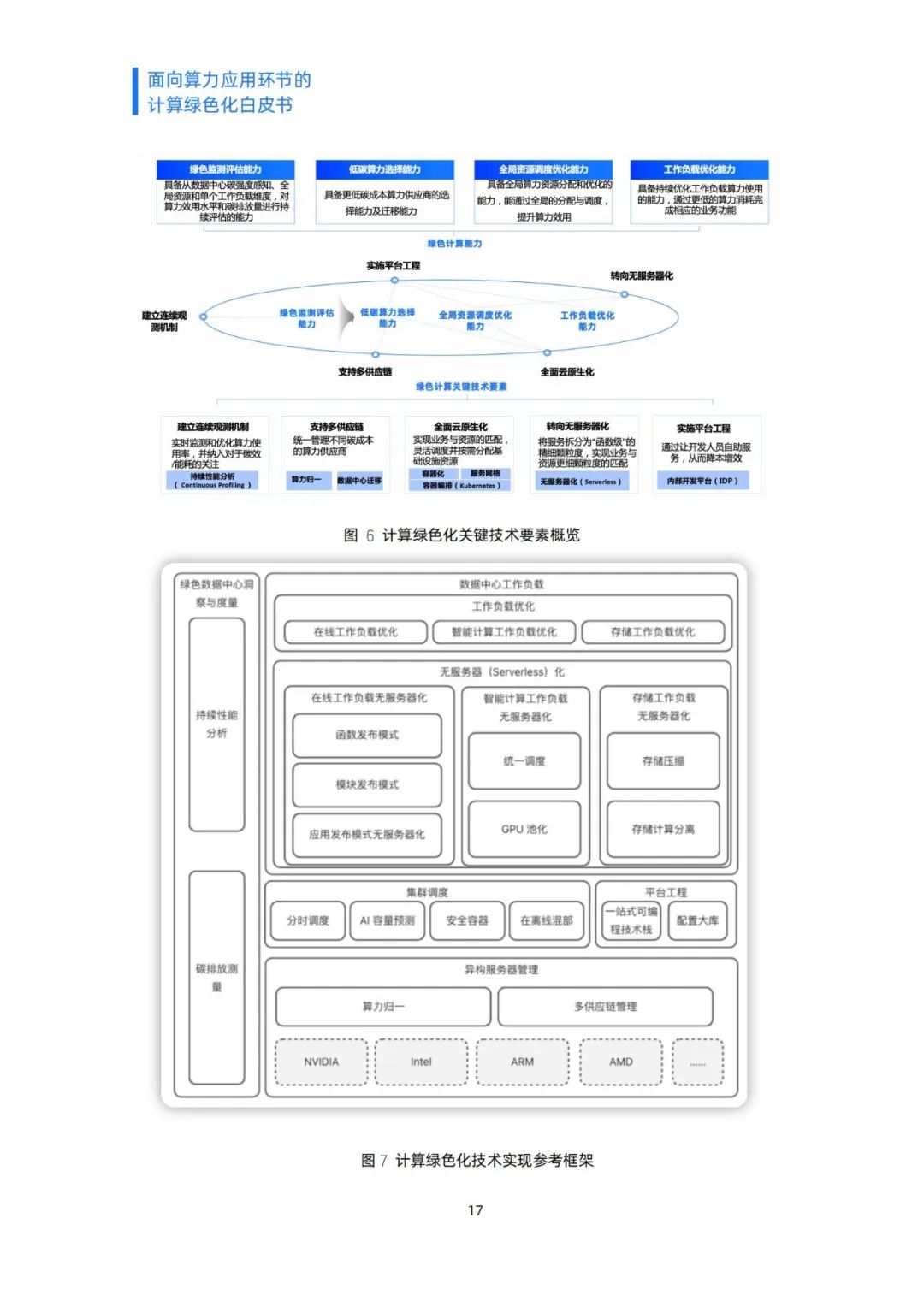
Swipe left and right to see more
02
Concept and Necessity of Green Computing
1. What is Green Computing?
Green computing refers to managing the entire machine, evaluating its load and business output under unit carbon emissions, that is, the computing power that a server can output under unit carbon emissions.
The core is to measure the computing efficiency of the computing system from components to the entire machine to upper-level applications, testing the system architecture design, performance optimization, and cooling innovation capabilities of computing system manufacturers. It also allows end users to have a more scientific, precise, and intuitive perception of carbon emissions and computing power output under the strong constraints of operational efficiency and national carbon emission policies, thus enabling them to choose the optimal green computing platform to achieve carbon reduction and efficiency enhancement goals.
2. Why develop green computing?
(1) Rapid growth of computing power, urgent need to address carbon emissions issues in computing centers
From 2021 to 2022, China’s computing power level increased by 13.5%, and most indicators continued to grow rapidly. Research indicates that by 2035, the energy consumption of super-large computing centers will reach 500 megawatts, equivalent to the installed capacity of half a nuclear power plant, making the energy consumption issue of computing centers increasingly prominent.
(2) Four major sources of carbon emissions in computing centers
The energy consumption of computing centers mainly comes from IT equipment, lighting systems, air conditioning systems, and power supply systems. Many companies and scholars both domestically and internationally have conducted extensive surveys and studies on the composition of energy consumption in computing centers. Although the proportions of each part vary in the research results, the factors and rankings of energy consumption composition are basically the same.
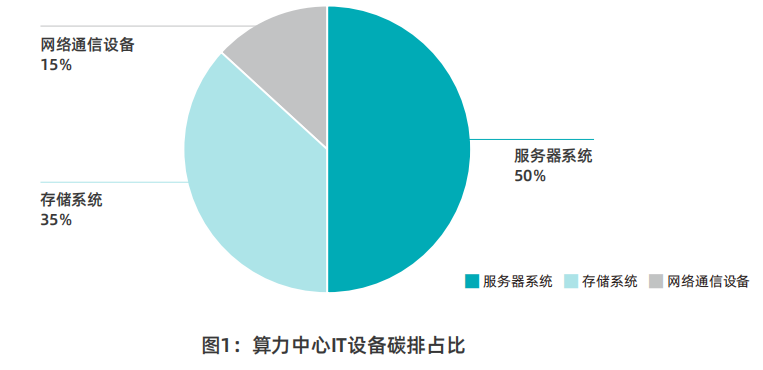
(3) Two major significances of developing green computing
On one hand, green computing aims to enhance computing power and reduce carbon emissions, further maximizing resource utilization and minimizing negative impacts on the environment.
The sustainable development of the economy and society will be organically combined and coordinated with the rapid development of information technology, thereby promoting the sustainability of the information industry and the progress of economic and social development, contributing to the sustainable development of human society.
On the other hand, whether in traditional fields or emerging industries, cost reduction and efficiency enhancement are eternal topics. The demand for reducing overall costs is becoming increasingly urgent. Merging data and computing loads into more dense and centralized computing platforms is an effective way to reduce costs and enhance efficiency.
When hundreds of servers are consolidated into a few servers, the space cost of the data center or computing center and the power demand will also be significantly reduced, and the maintenance of hardware and software, network management, and other operational tasks will be greatly simplified, leading to a substantial reduction in operational costs for enterprises in terms of hardware and software.
03
Five Key Technologies of Green Computing
1. Green Design Technology
Under the guidance of the “dual carbon” goals, reducing computing energy consumption and promoting “green computing” is crucial. By upgrading and transforming server systems and using innovative green computing design solutions, not only can low power consumption be achieved, but also significant reductions in overall carbon emissions can be realized.
At the same time, innovative designs of the products themselves effectively reduce carbon emissions, such as adjustable heat sink designs, intelligent calculations based on workload to match the best cooling systems, the use of efficient servers and system devices, customized CPU and GPU boards, and optimization of the overall structure.
2. Intelligent Component Management Technology
Power supplies are gradually developing towards energy efficiency, modularity, digitalization, and intelligence, reflected in high efficiency, high power density, high reliability, high intelligence, remote control, real-time monitoring, and redundant parallel operation; and using direct current power supplies to improve power conversion efficiency.
At the same time, to reduce server energy consumption during low loads, dynamic energy-saving technologies can be employed to automatically monitor server resource usage and dynamically adjust server operating states based on resource utilization, providing power supply according to business needs and minimizing power loss.
3. Overall System Design Technology
To reduce server carbon emissions, it is necessary to start from the design level, optimizing loads to keep servers operating in high energy efficiency states and optimizing server standby modes;
At the same time, servers are constantly compressing space in pursuit of higher density, which poses significant challenges for cooling. Under existing air cooling conditions, innovative cooling designs are required to streamline airflow at the fan intake, increasing the airflow speed at the fan inlet and reducing turbulence, while increasing the thickness of the waveguide mesh can further enhance air pressure, generating parallel, stable, and strong airflow.
Through innovative system designs at the overall machine level, cooling and air conditioning heat dissipation can be matched in time and space, creating energy-efficient and low-carbon green servers.
4. Liquid Cooling Technology
With the maturity of server liquid cooling technology, introducing liquid cooling technology to achieve efficient cooling has effectively improved the efficiency and stability of server usage. Liquid conducts thermal energy much better, being 25 times more effective than air, and temperature transfer is faster and more efficient, enabling efficient cooling of IT equipment.
At the same time, due to the high specific heat capacity of liquids, their temperature does not change significantly after absorbing a large amount of heat, thus stabilizing CPU temperatures. Even if the server encounters sudden operations and power surges, it will not cause a significant increase in internal CPU temperatures, ensuring that the CPU can operate within a certain range without overheating failures during overclocking.
5. Cabinet Design Technology
Through cabinet-level energy-saving technologies, overall energy consumption optimization can be achieved. First, in terms of heat dissipation, individual machines are equipped with independent fans for cooling.
For example, a single machine typically requires six system fans for cooling, while 48 servers would require 288 fans. By centralizing cooling, the cooling fans for each server node can be removed and integrated into a cooling fan wall located at the back of the entire cabinet, reducing the number of fans needed for 48 nodes to just 18, a reduction of over 93%. According to data released by OCP2020, the energy consumption of the entire cabinet is reduced by 35% compared to individual machine node fans.
04
Development Trends and Recommendations for Green Computing
1. Three Major Trends in Green Computing DevelopmentThe realization of green computing mainly has two directions. One is to reduce the average energy consumption of computing power, and the other is to reduce energy consumption by improving computing efficiency and shortening computing time.Based on this goal, the development of green computing presents three trends:(1) Computing technology may become a new opportunity for the implementation of green computing: from CPU to general networks, and then to AI acceleration on the edge, the computing architecture is continuously evolving.Currently, the performance of CPUs and general networks is approaching their limits, and the energy efficiency improvements of computing chips such as GPUs and FPGAs are also limited.Therefore, heterogeneous computing represented by NPU, TPU, DPU, and IPU is expected to become a key technology for the implementation of green computing.(2) The gradual popularization of computing services will greatly enhance computing efficiency: The goal of computing service is to transform intra-domain and inter-domain computing power and their supporting infrastructure into flexible and easy-to-use capabilities, providing scheduling capabilities for computing demand from a national perspective and activating idle resources.At the same time, in conjunction with the “East Data West Computing” project, further enhancing the concurrent processing capabilities of computing demand, reducing energy consumption by shortening computing duration, and promoting the realization of green computing.3. The effects of artificial intelligence technology in green computing and algorithms are gradually becoming apparent: Utilizing AI technology to achieve intelligent management of infrastructure, assisting in the deep integration of green computing and algorithms, constructing models with better performance and lower power consumption for training, and opening up industry applications.The integration of AI algorithms with green computing and algorithms can achieve ultra-low power consumption and low costs, making green computing and algorithms truly implementable.2. Four Recommendations for Green Computing DevelopmentBased on the current state of green computing development, to lead the computing field towards an efficient, low-carbon, intensive, and circular green development path, establish effective pathways for carbon peaking and carbon neutrality, and promote low-carbon transformation and green development across the industry, the following recommendations are proposed:(1) Strengthen support and enhance the application level of heterogeneous computing: With the further development of heterogeneous computing technology, the collaborative design and optimization between hardware devices will also become an important development trend for future heterogeneous computing technology.In the future development of heterogeneous computing, collaborative design and optimization between hardware devices will become a major trend. Collaborative design and optimization between hardware devices can further improve computing performance while also reducing power consumption; collaborative design and optimization between software and hardware can further enhance system performance and reduce power consumption; collaborative design and optimization between software and hardware can further improve system energy efficiency.At the same time, from the perspective of heterogeneous computing development, high performance and high efficiency are its two core indicators, while in the future development of green computing, high performance, high efficiency, and low cost will be its main development trends. With the further development of technology, heterogeneous computing will play an increasingly important role in green computing.(2) Collaborative development to ensure intra-domain and inter-domain computing power: On-demand scheduling during the 14th Five-Year Plan period, the development of green computing will focus on “overall optimization and collaborative development”, emphasizing the coordination of domestic and international computing resources and computing demand across various industries, forming a larger scale and more efficient computing supply system through structural reforms on the supply side of computing power.Currently, China’s computing market is rapidly growing, and the scale of computing centers continues to expand, but the issues of excessive electricity consumption and low energy utilization efficiency are also becoming increasingly prominent. For green computing, it is necessary to further promote the intensive, intelligent, and green development of computing power.(3) Empowering scientific innovation to promote the maturity of green computing technology: The development of green computing technology not only promotes the realization of green computing but also fosters technological innovation, technological iteration, and product application, expanding the scale of the green computing industry.Green computing technology will promote further integration and innovation of technologies such as power electronics, big data, and artificial intelligence, facilitating the collaborative development of “1+N” computing infrastructure. From the perspective of technological iteration, green computing technology will continuously achieve iterative upgrades.The development of computing power is influenced by various factors such as energy, electricity, and cooling, which requires continuous advancement in green computing technology innovation and breakthroughs in new green energy-saving technologies and new cooling systems to promote the maturity of green computing technology in China.(4) Establish a standardized green computing route: Integrate green computing and artificial intelligence deeply into the industry. By introducing the concept of green computing, achieve deep integration of computing power and industry, building a more energy-efficient and competitive computing infrastructure, promoting industrial upgrades across various sectors, and accelerating the development of the new economy.Empower industry integration with green computing standards. Accelerate the application of green computing technology achievements, explore specific implementation paths for energy saving and emission reduction, and low carbonization; incorporate green computing into industry standard systems and technical specifications based on the needs and characteristics of different industries; promote the high-quality development of “new infrastructure” through standardization efforts, accelerating the intelligent and green transformation of computing infrastructure.Source: ESG Download LibraryEditor: Chi XinyuProofreader: Wang YanFinal Review: Chen LiminClick to follow
Previous Recommendations ·
Wisdom and Suggestions to Promote Development, Gathering Strength to Promote Innovation—Empowering Scientific and Technological Talent for High-Quality Development in Warm City
The second quarter key work scheduling meeting of the city’s science and technology association system was held
Can’t hide it anymore! The Warm City Youth Science Festival application is on the rise, Super City!
